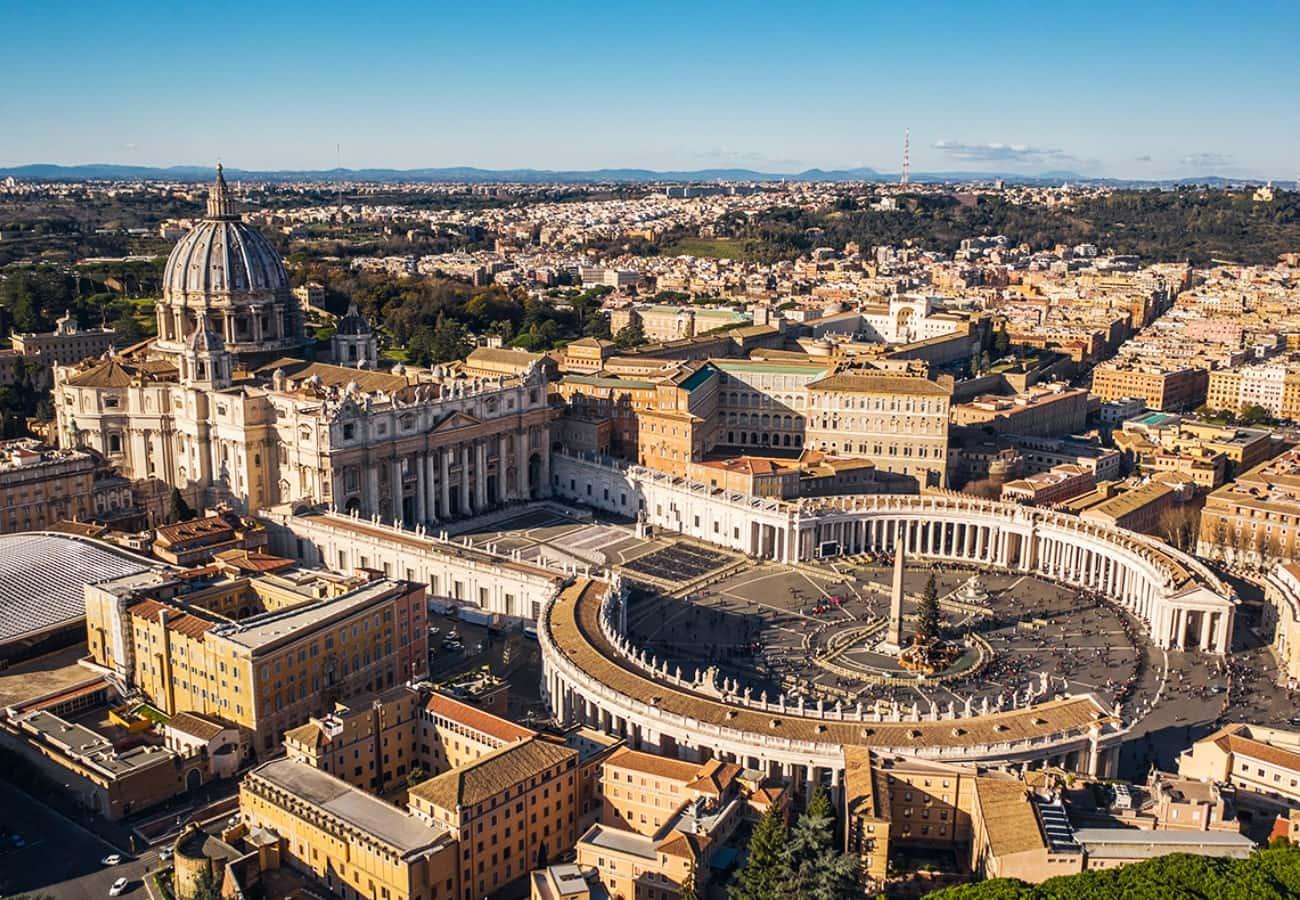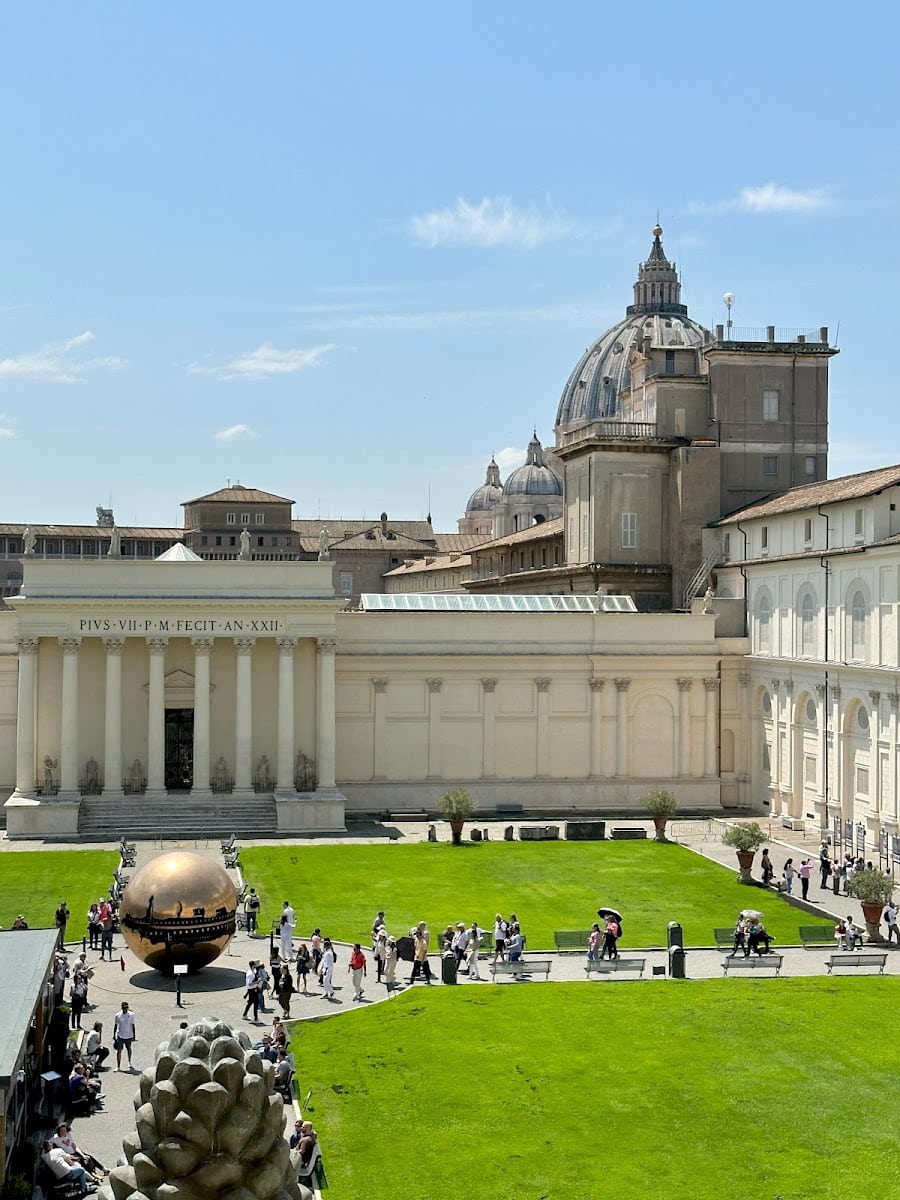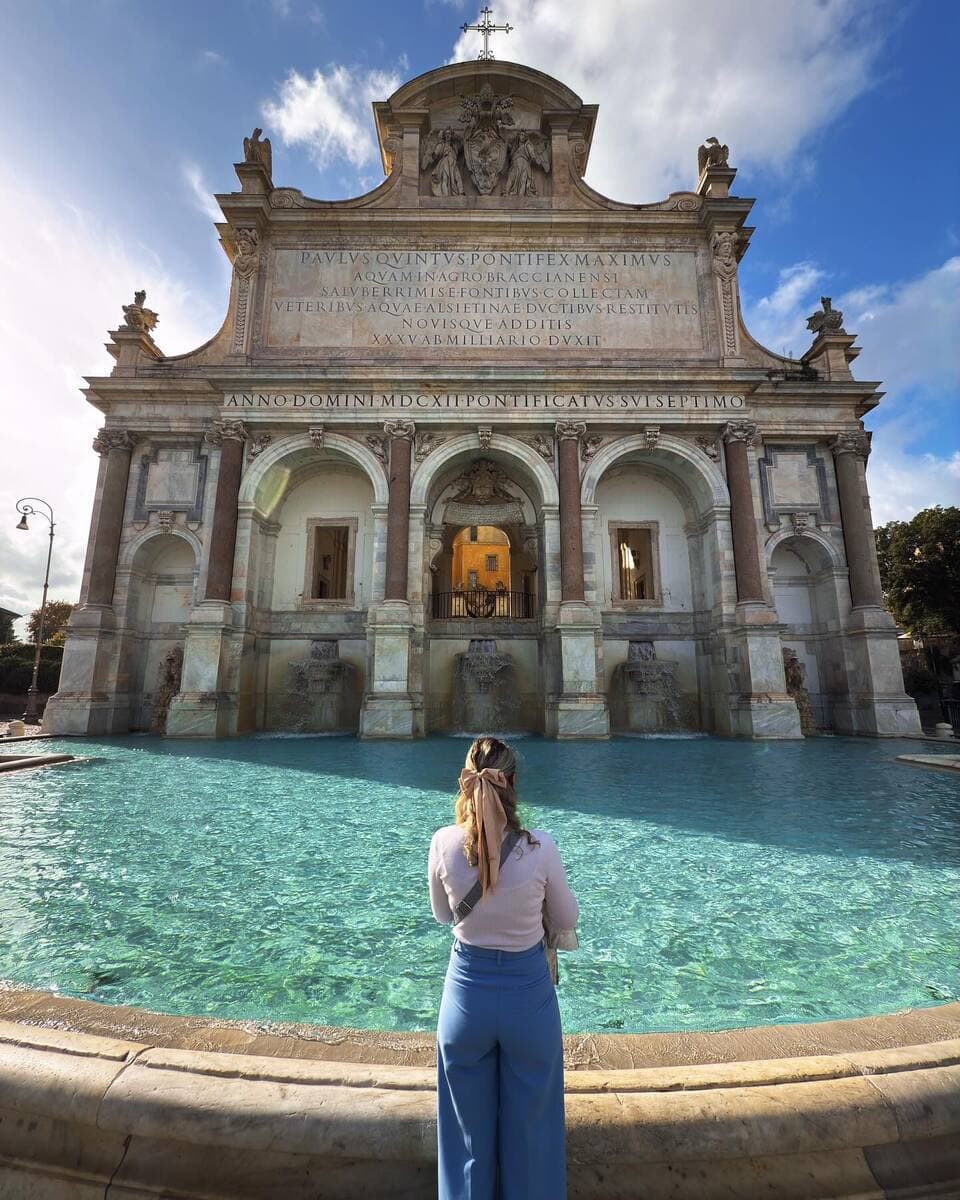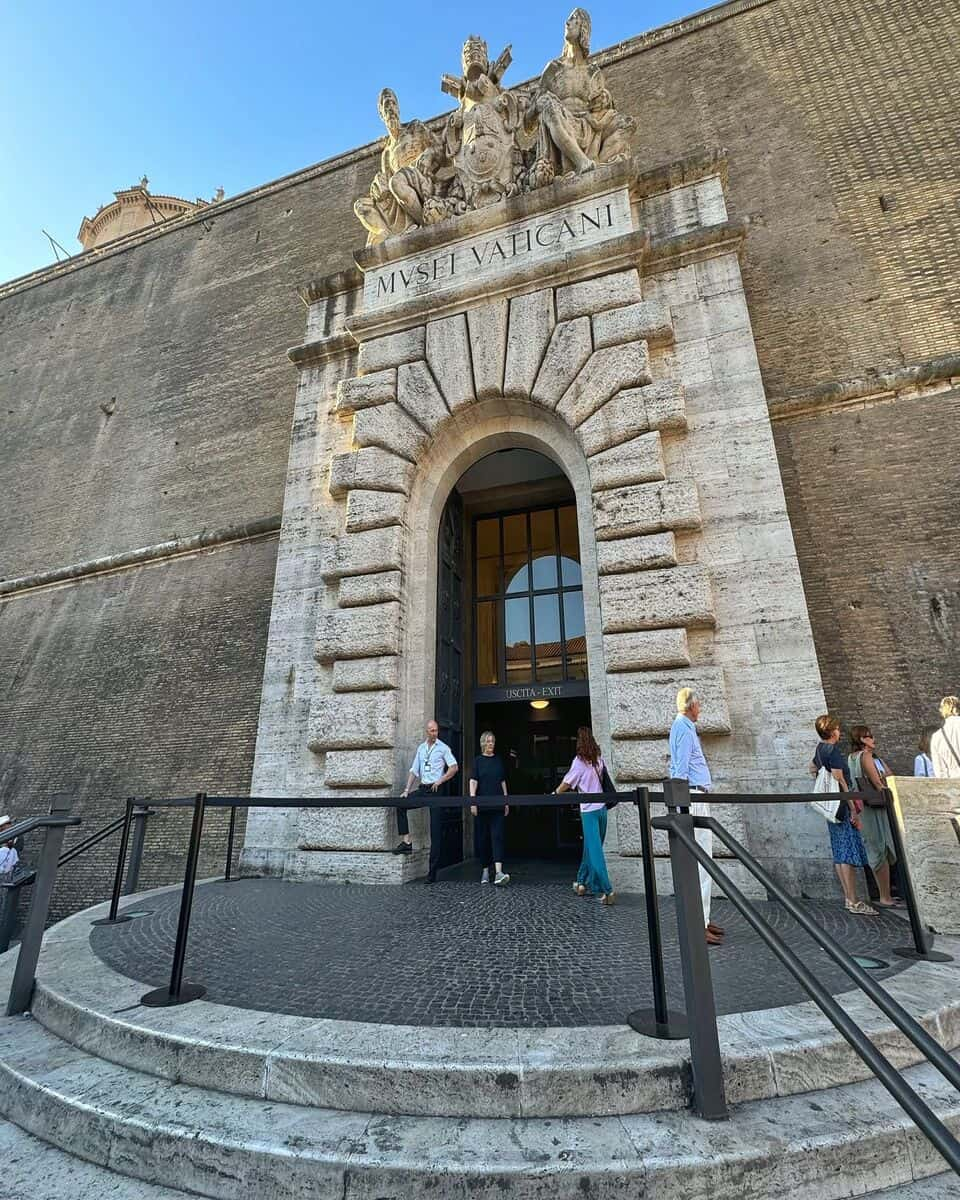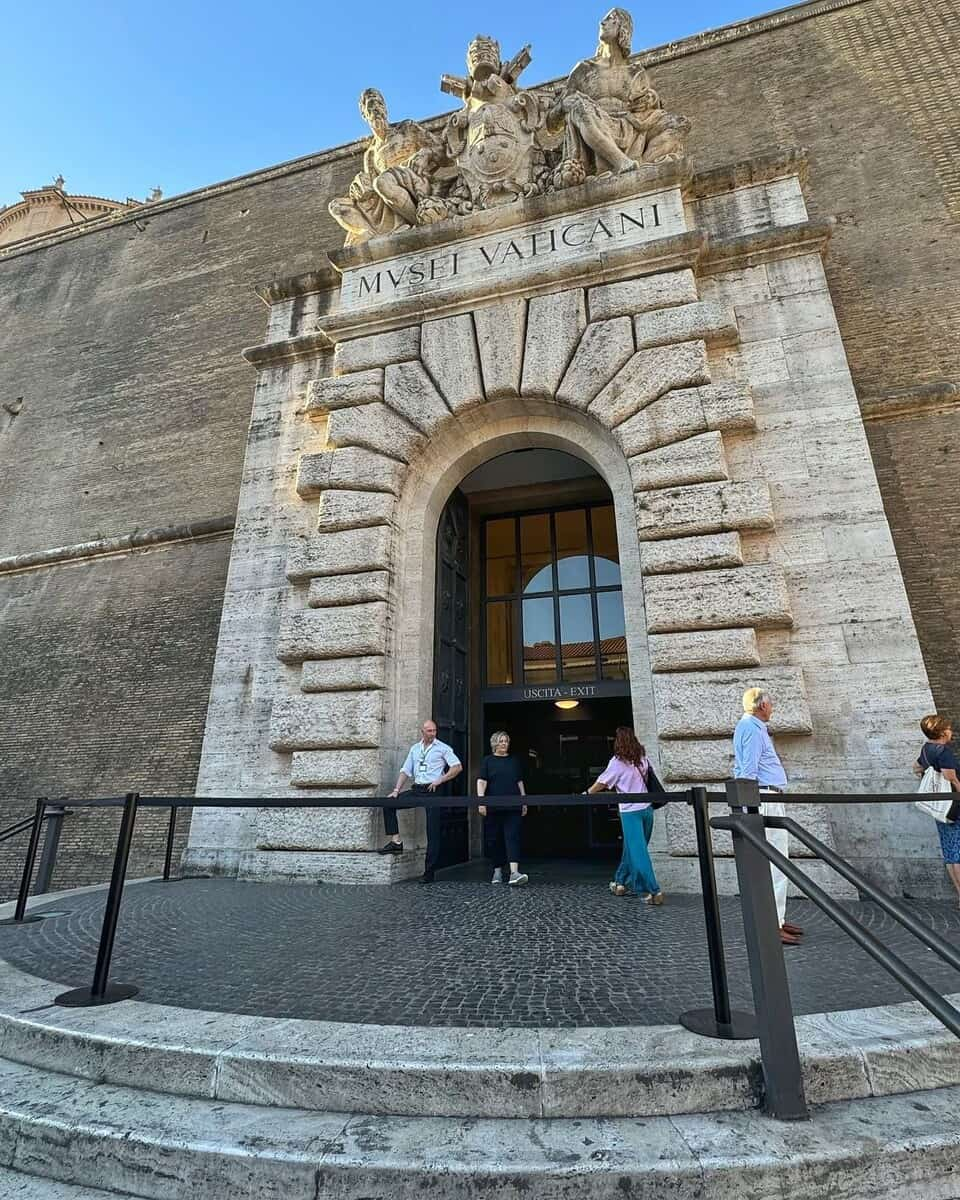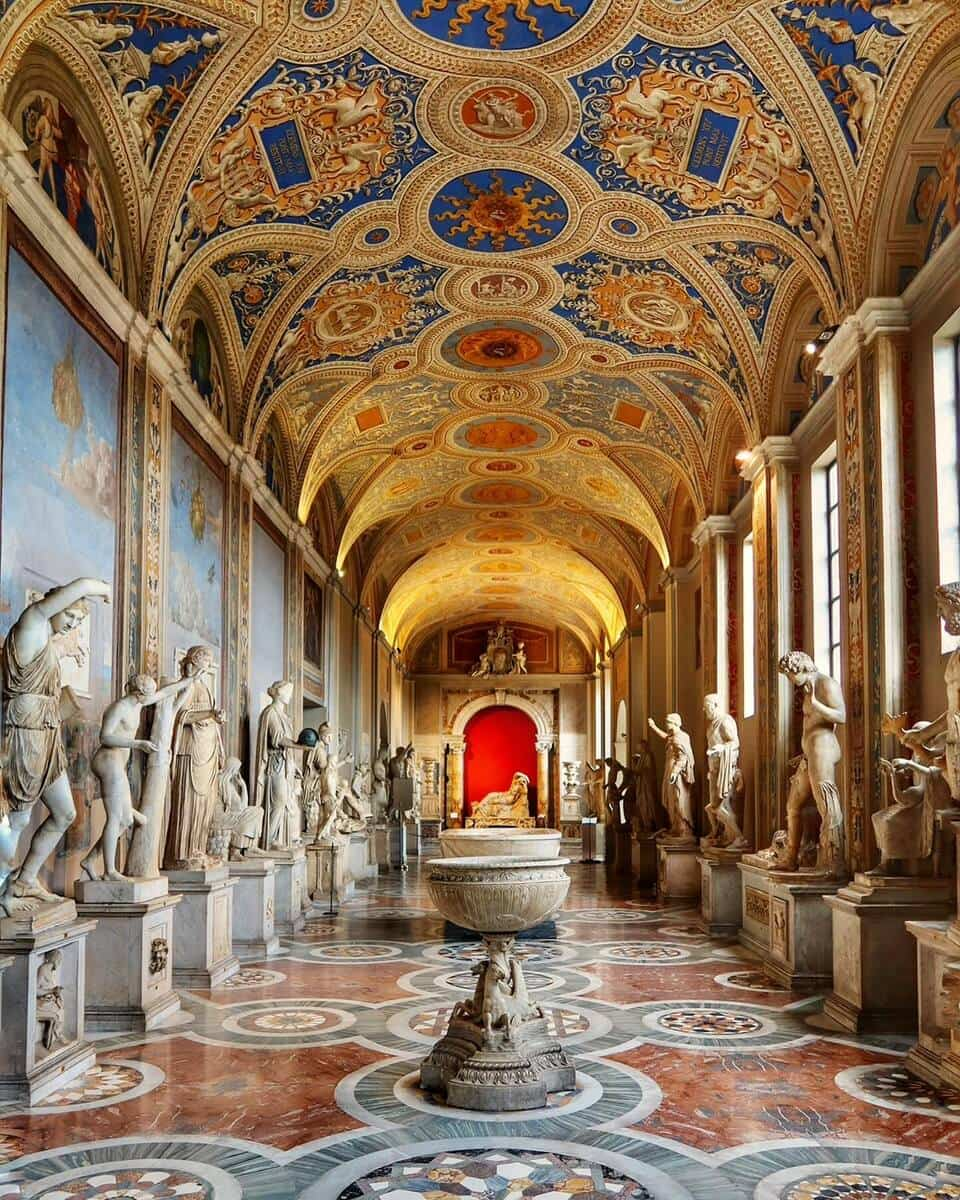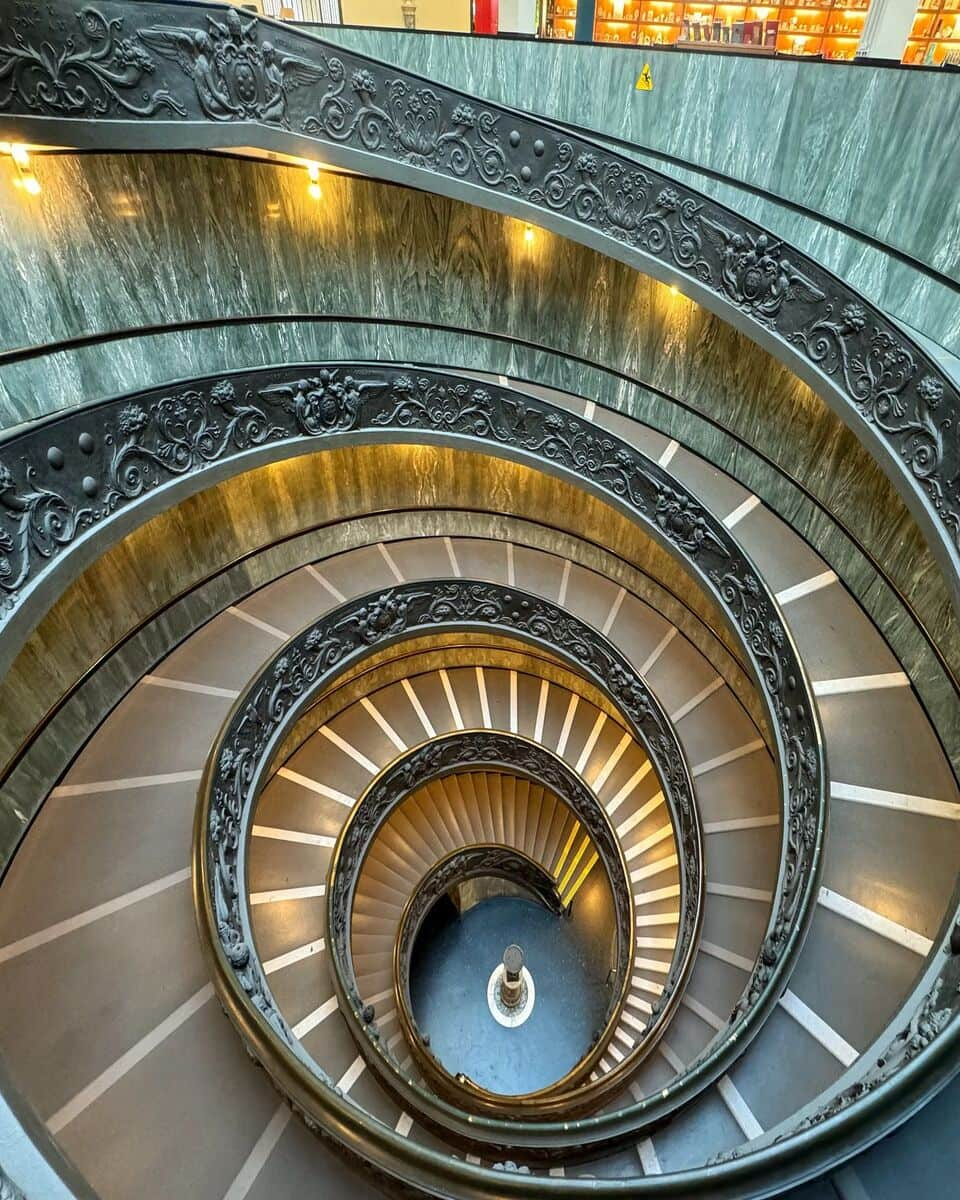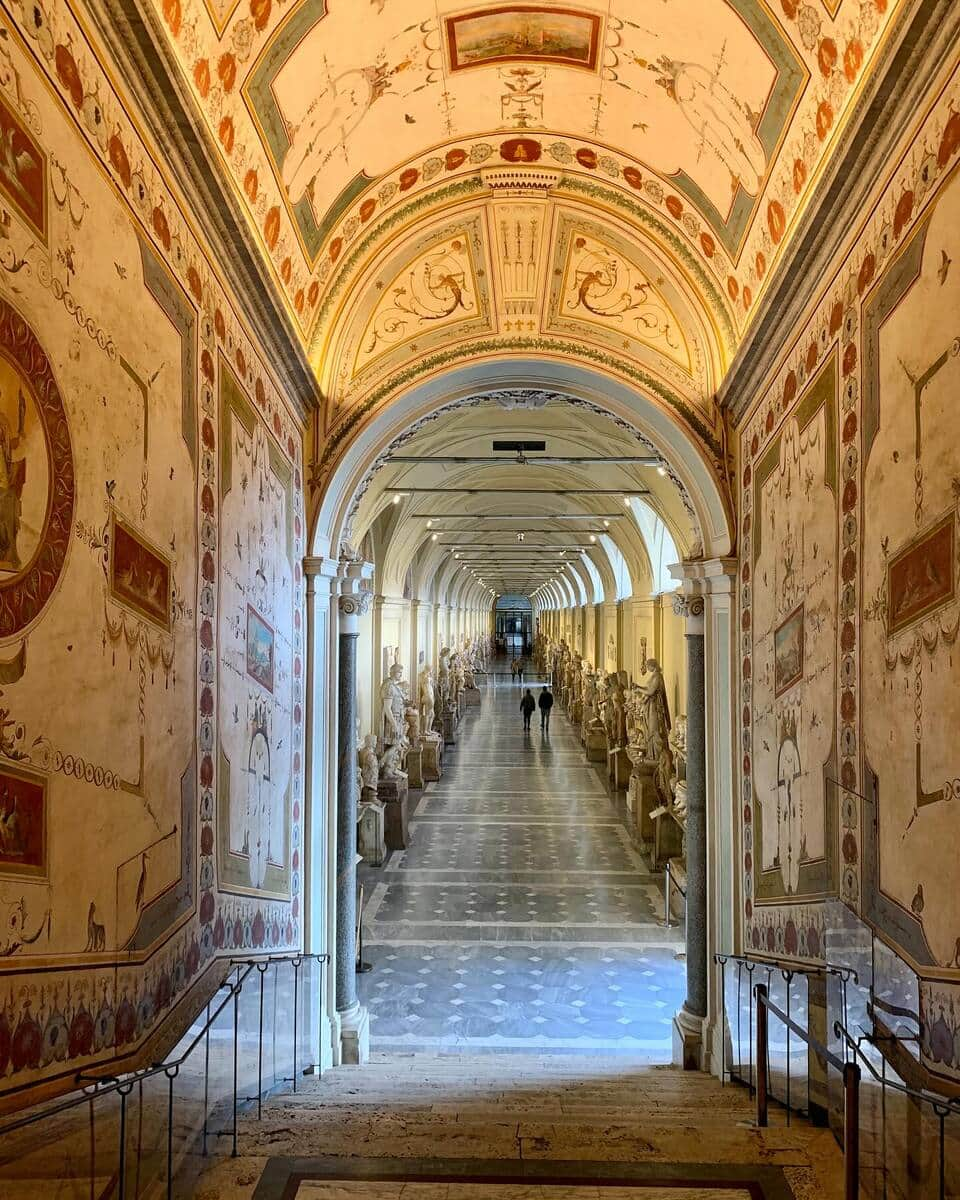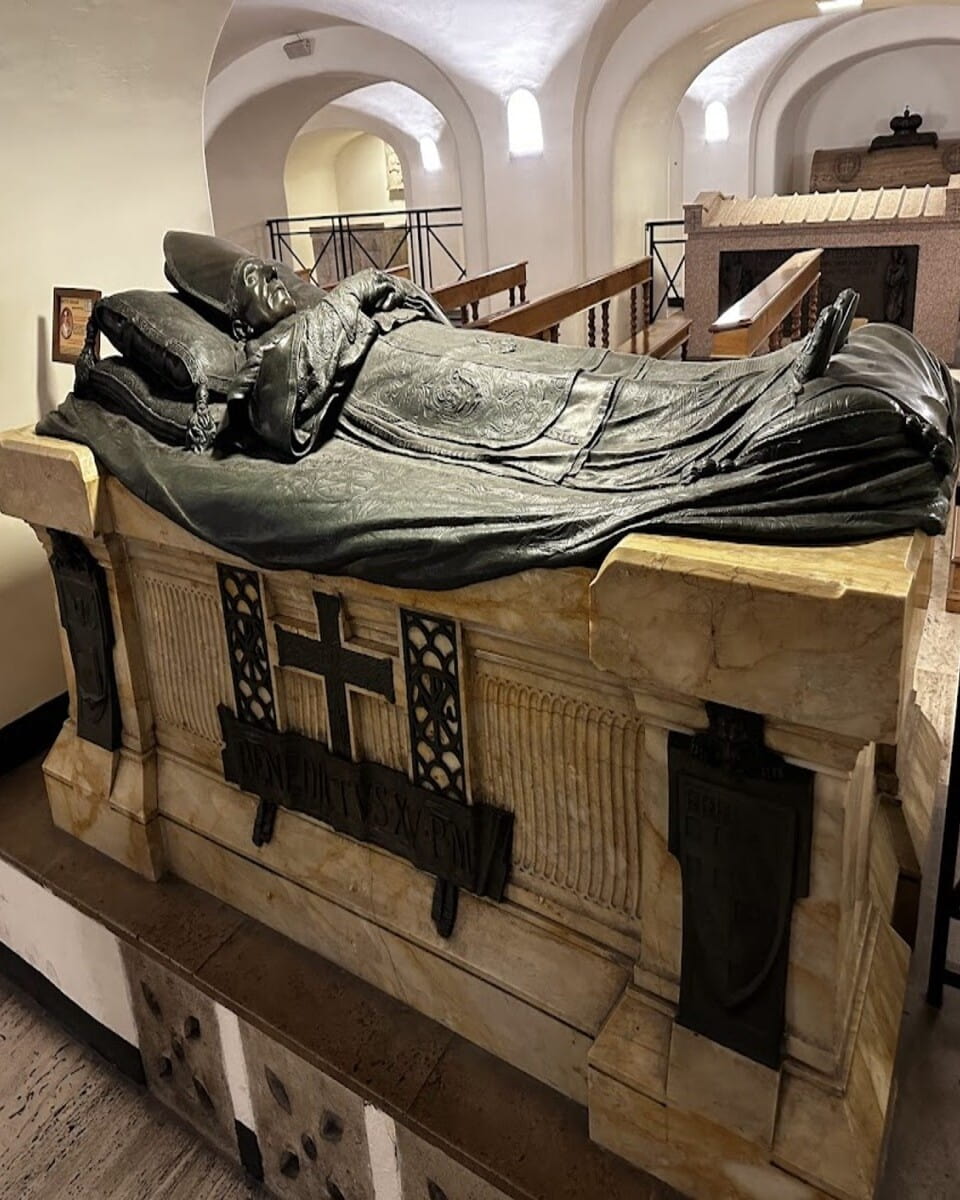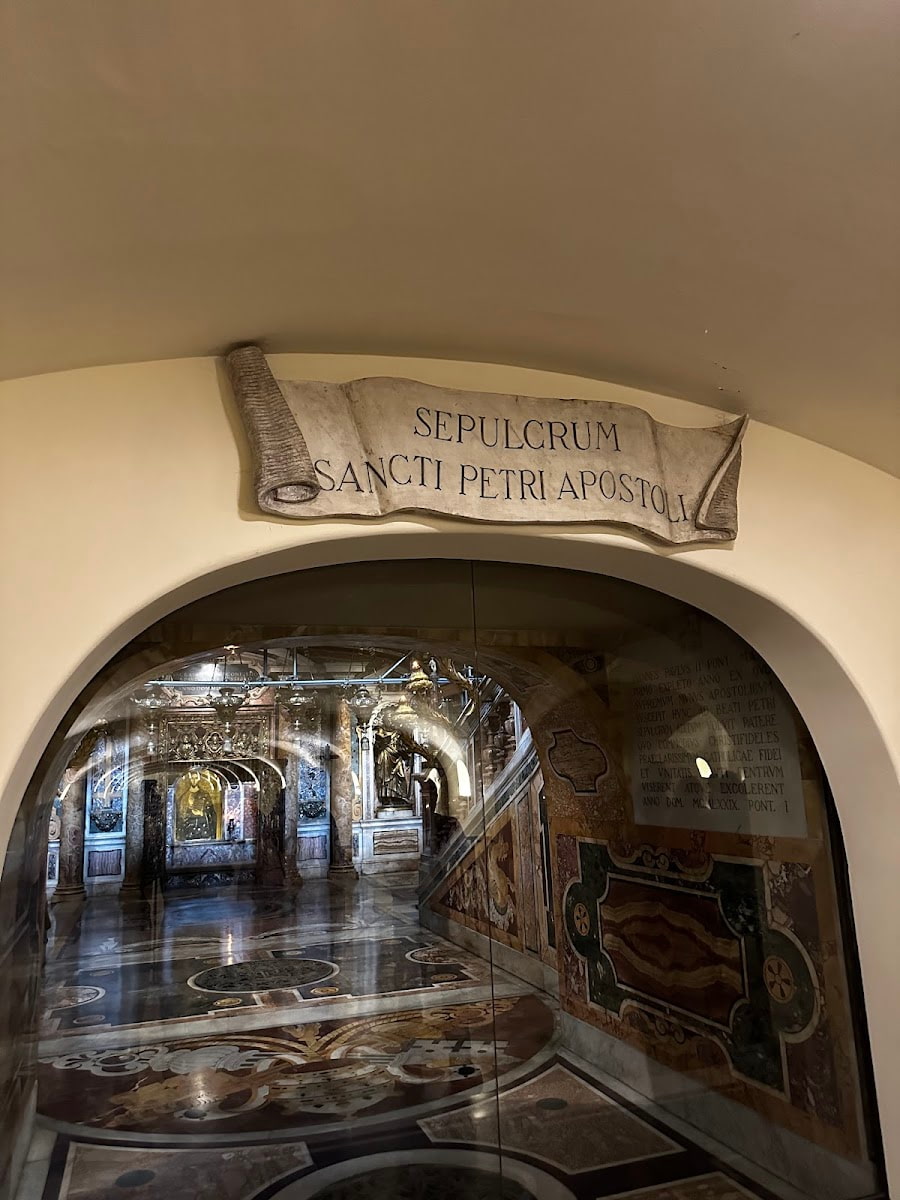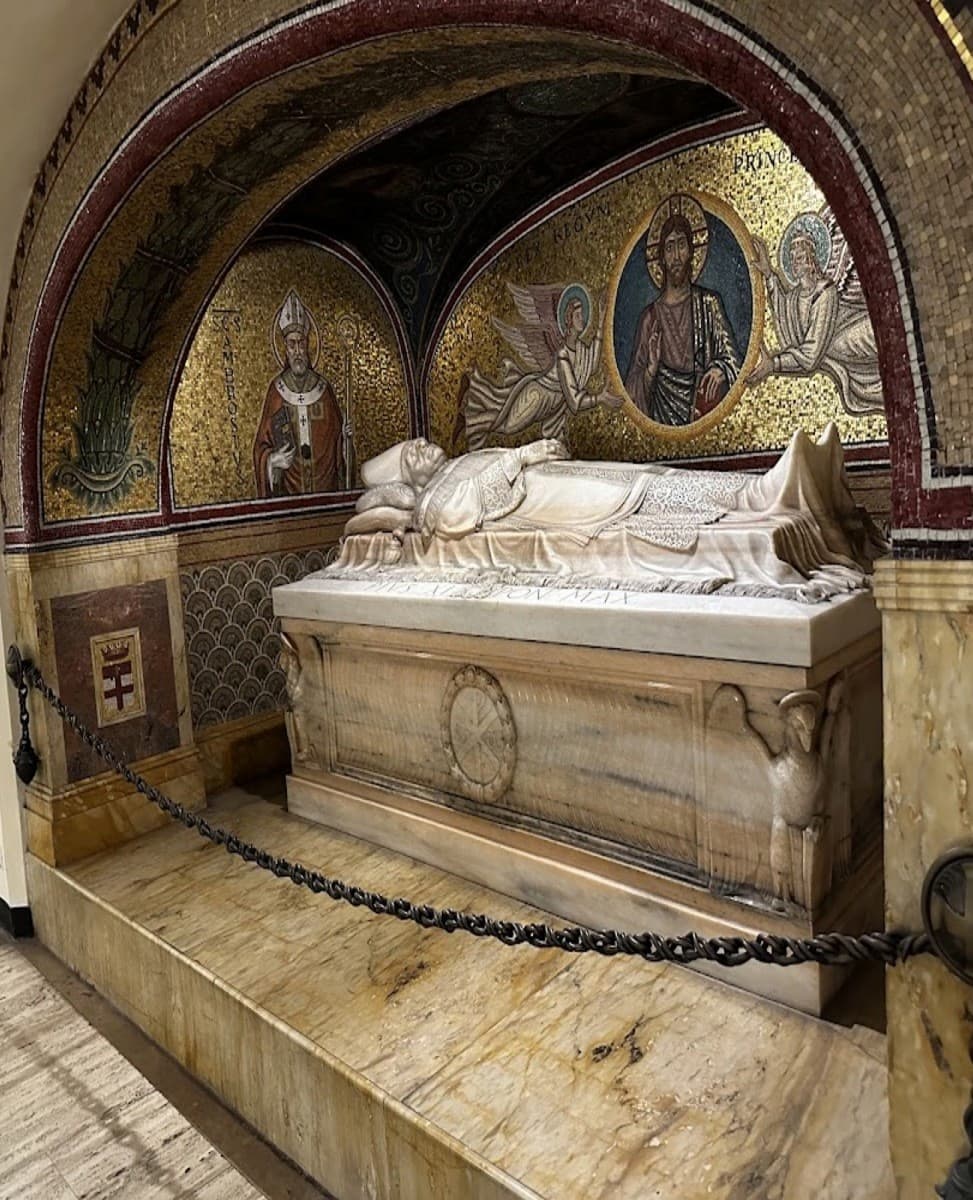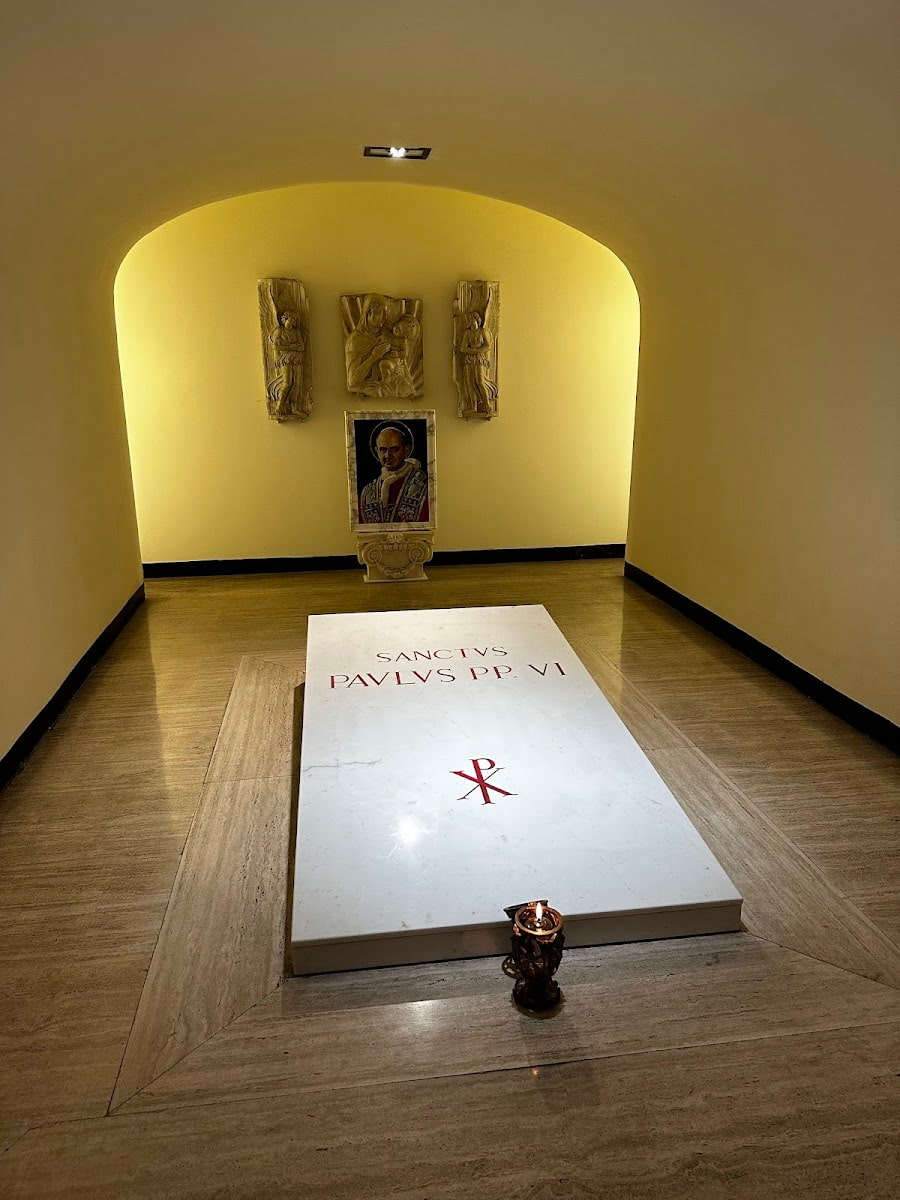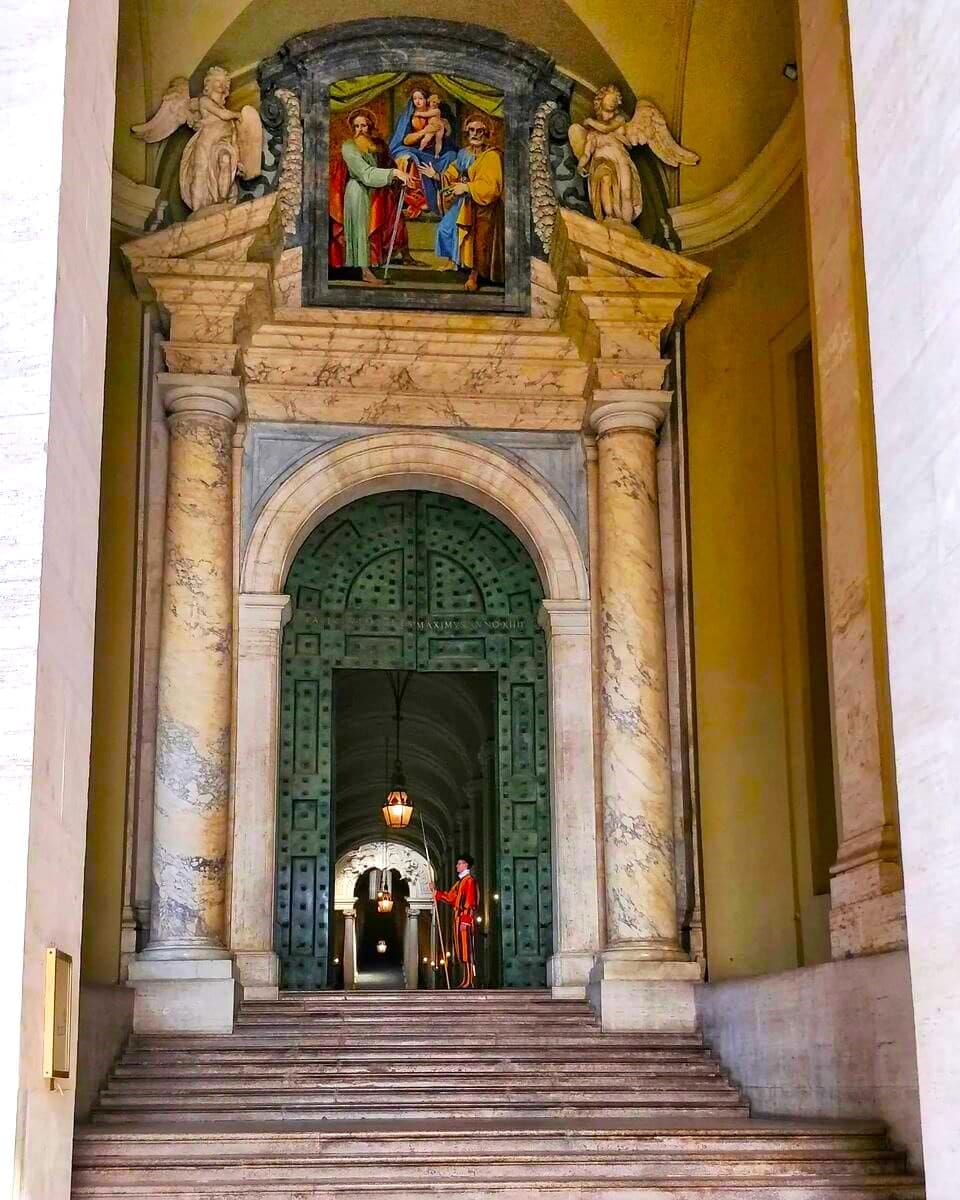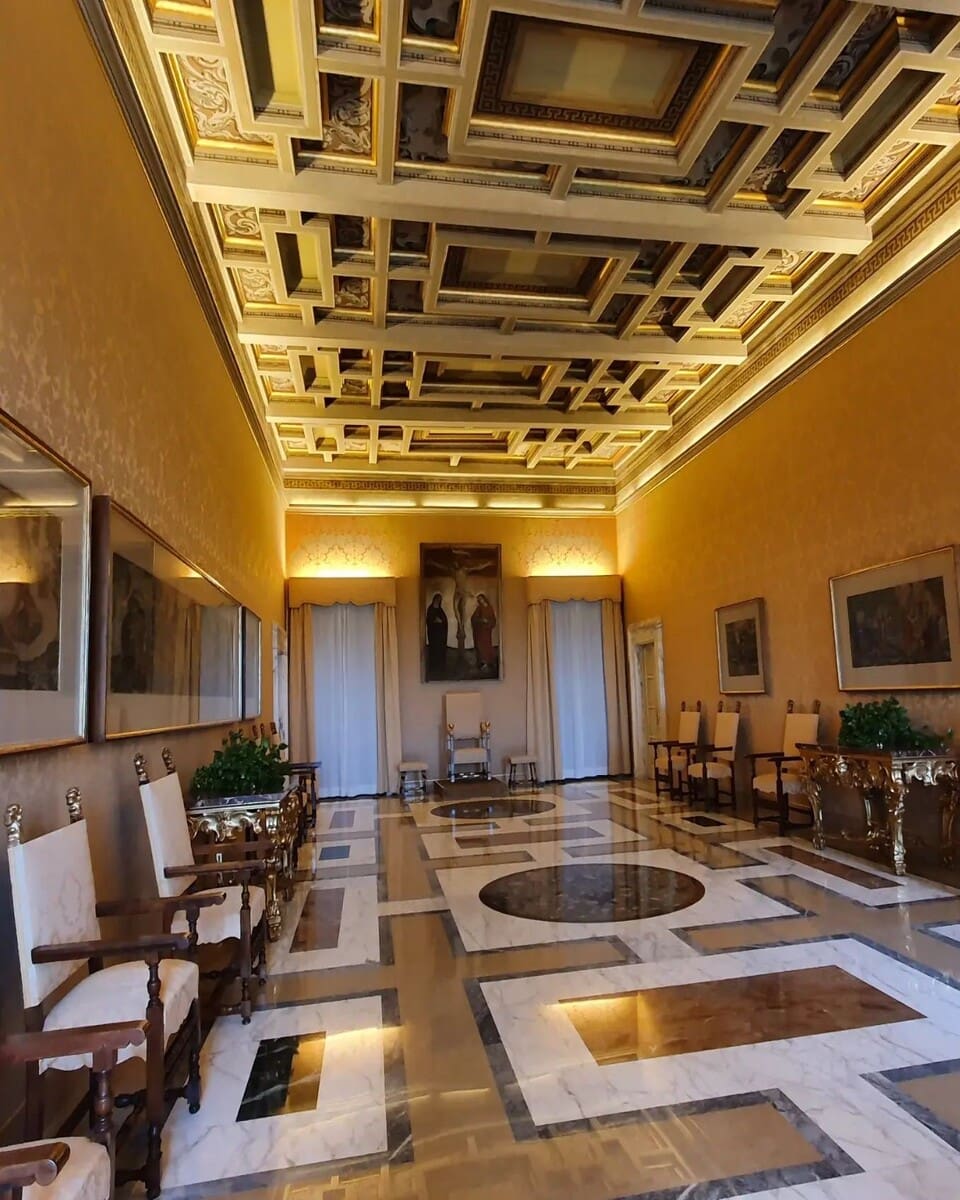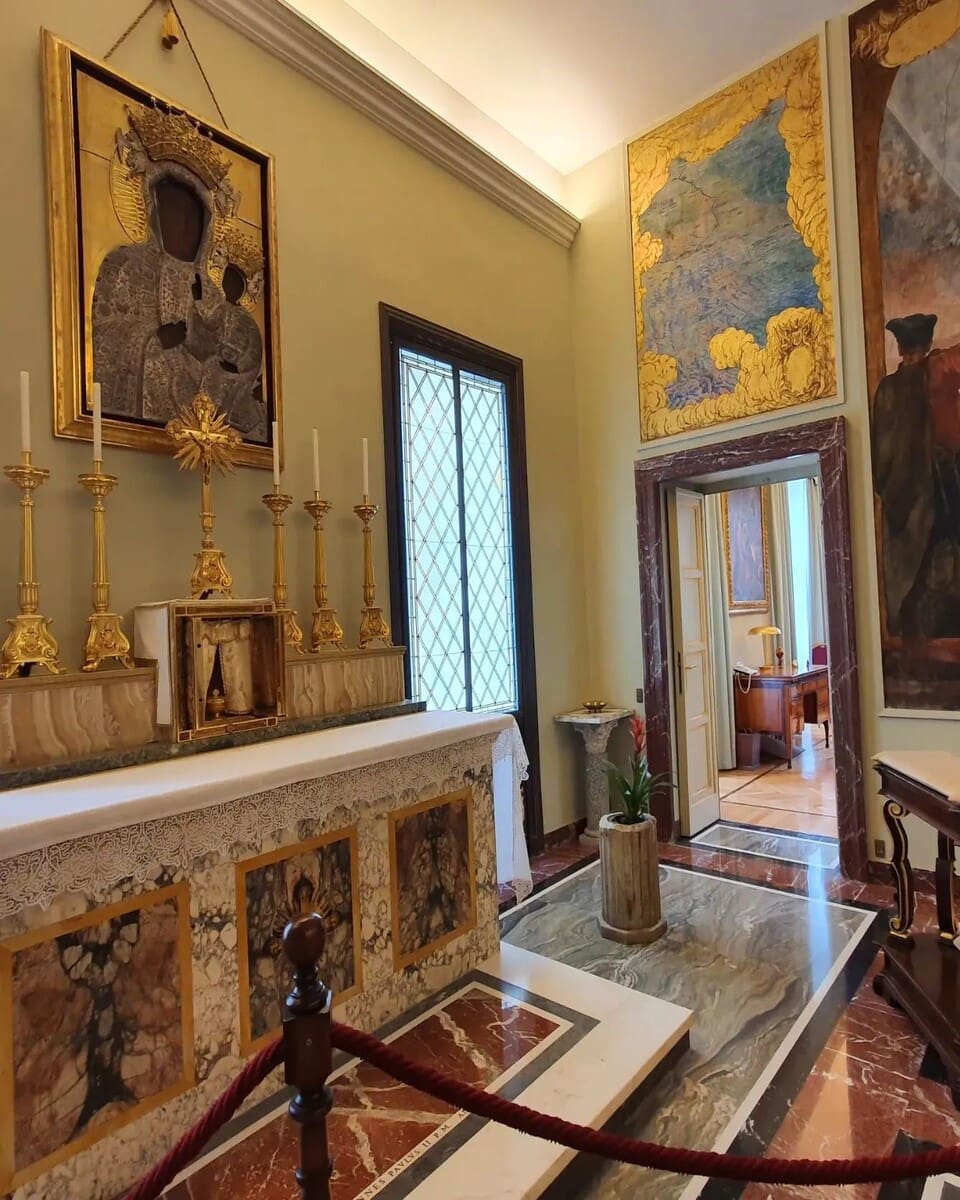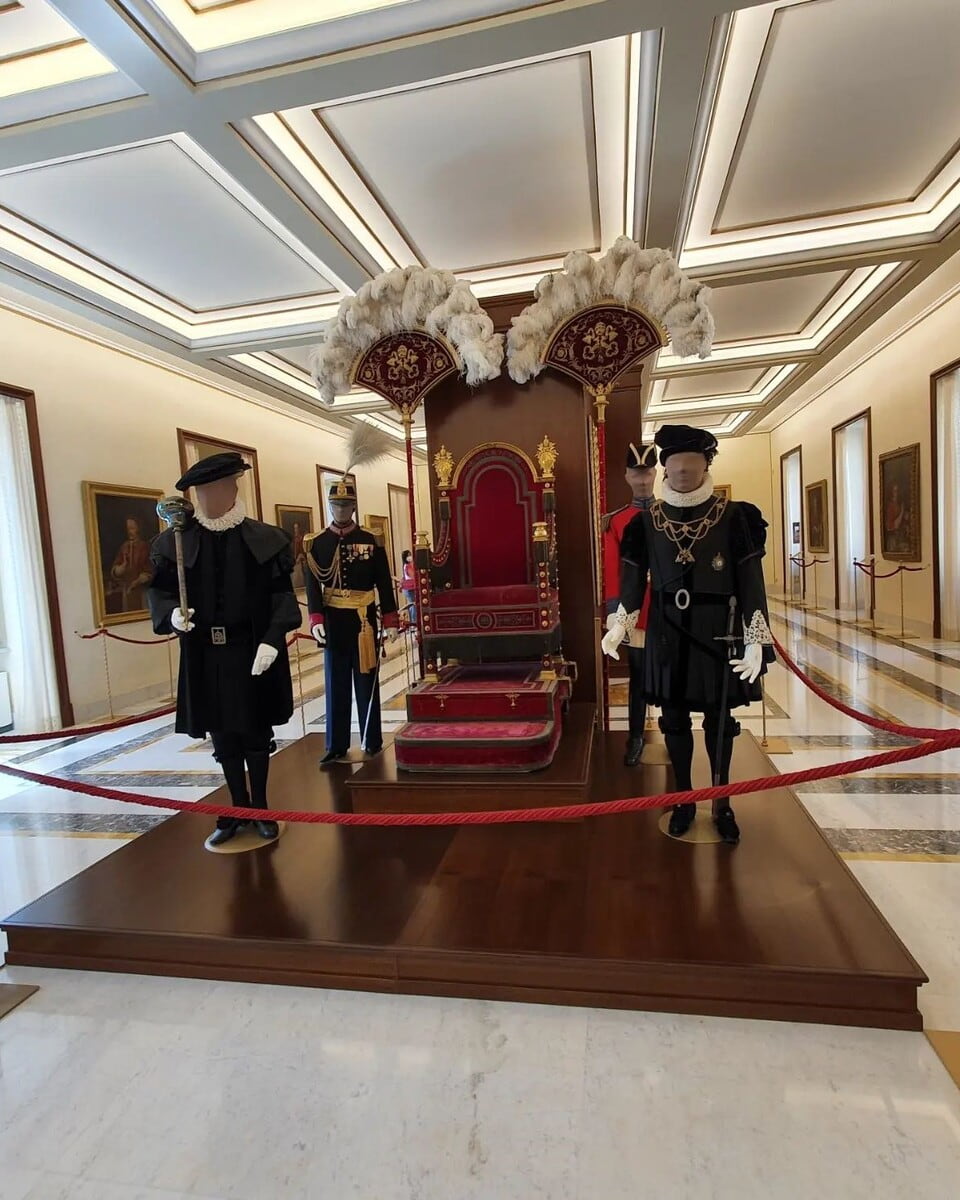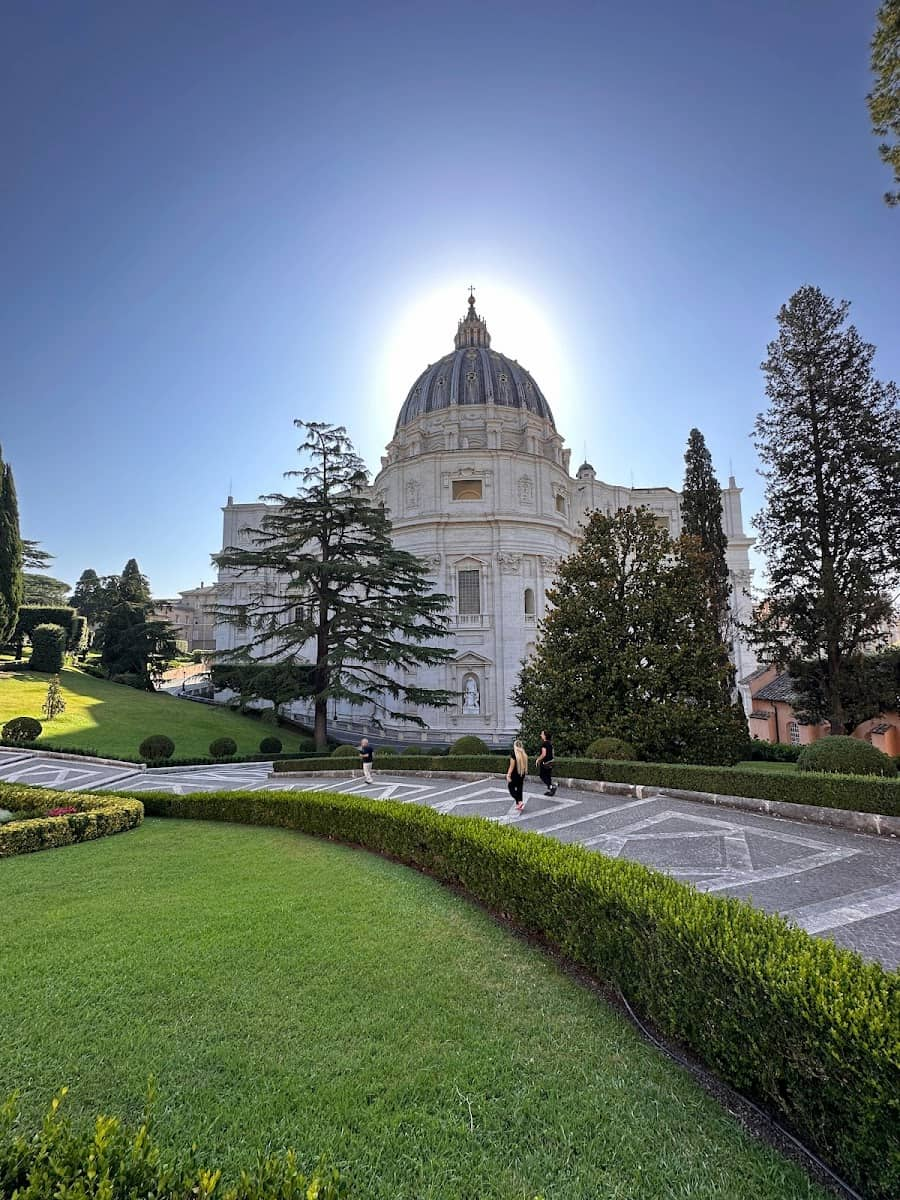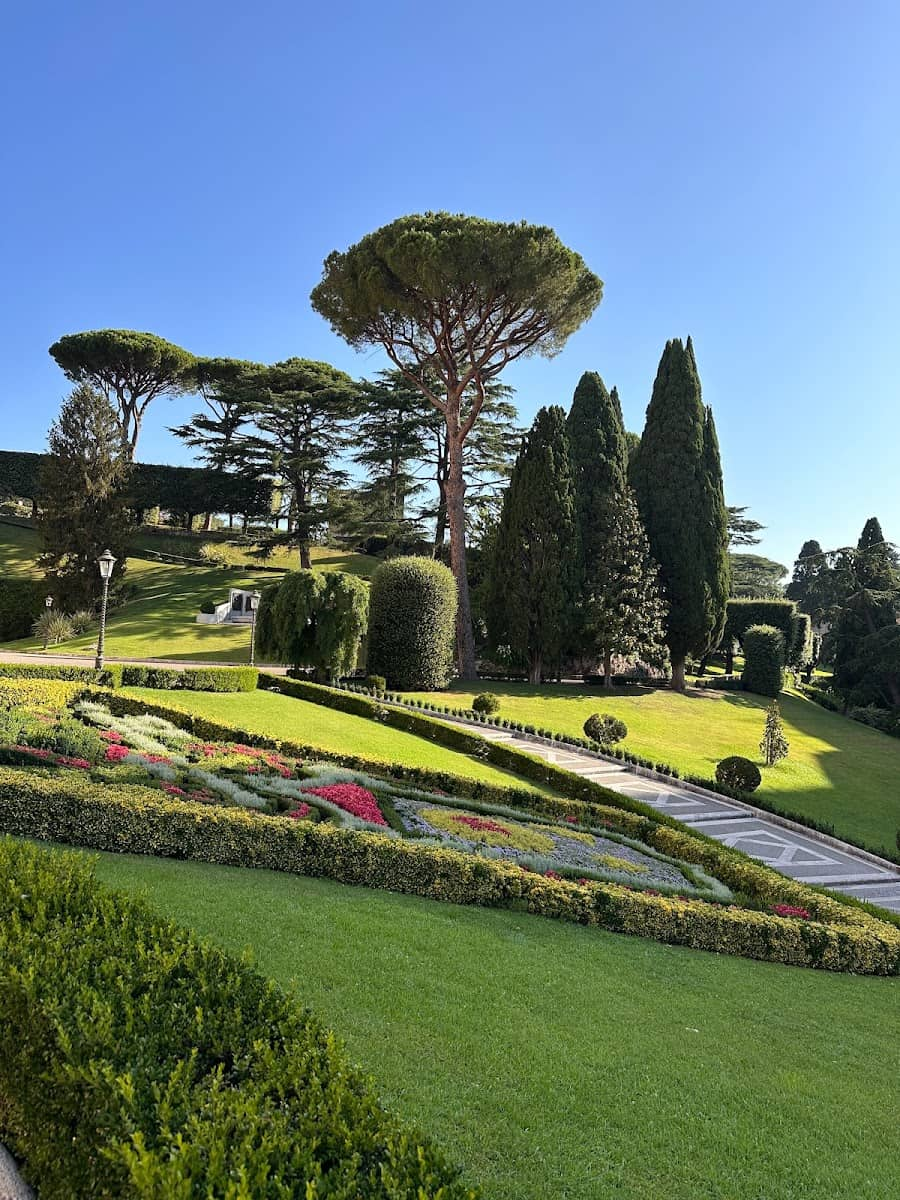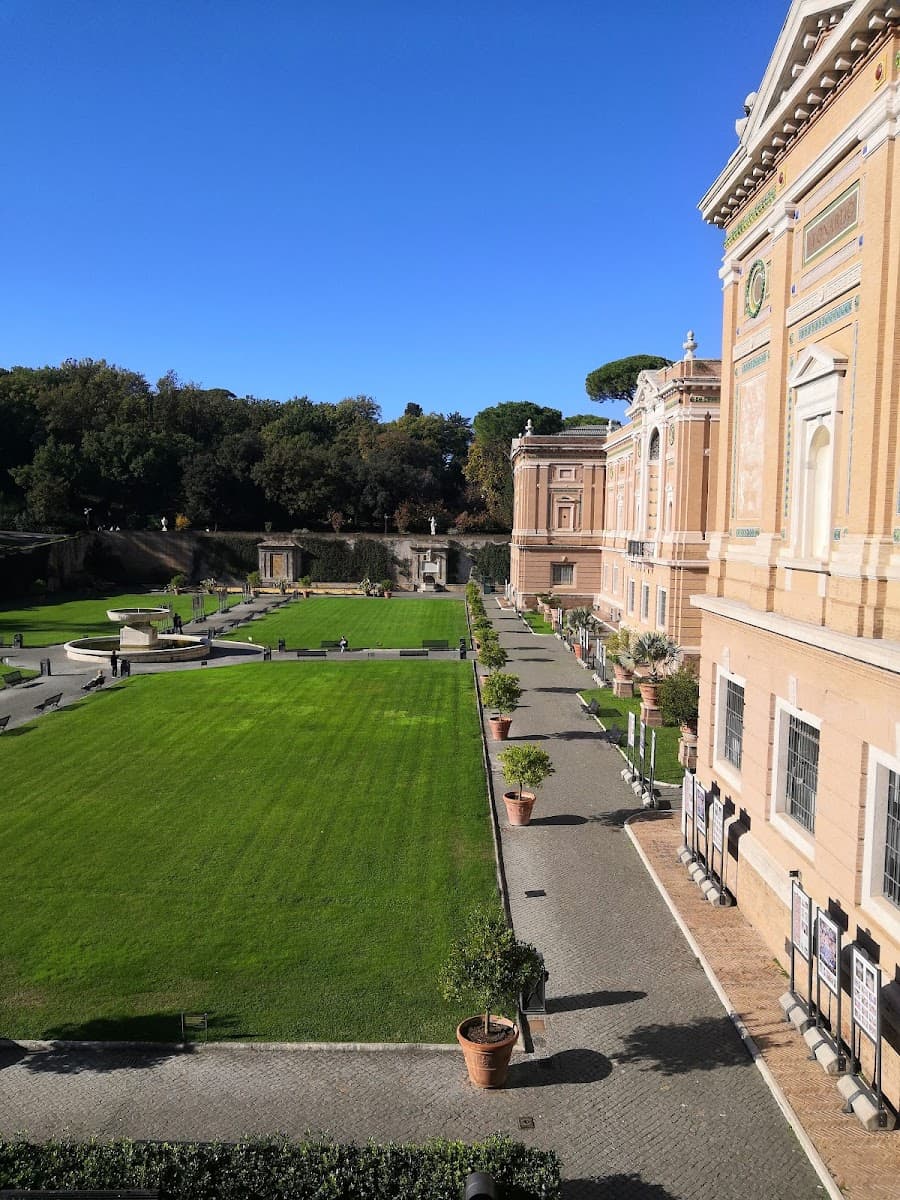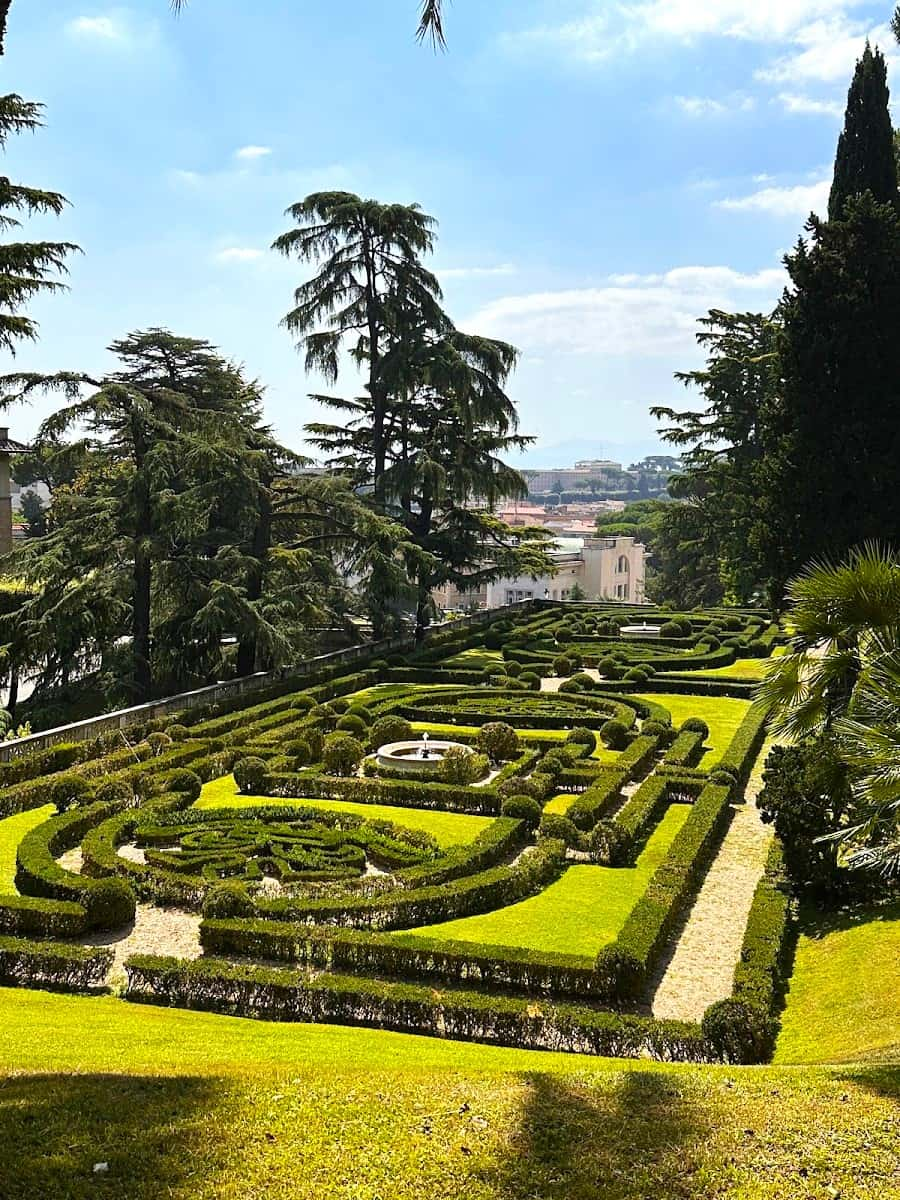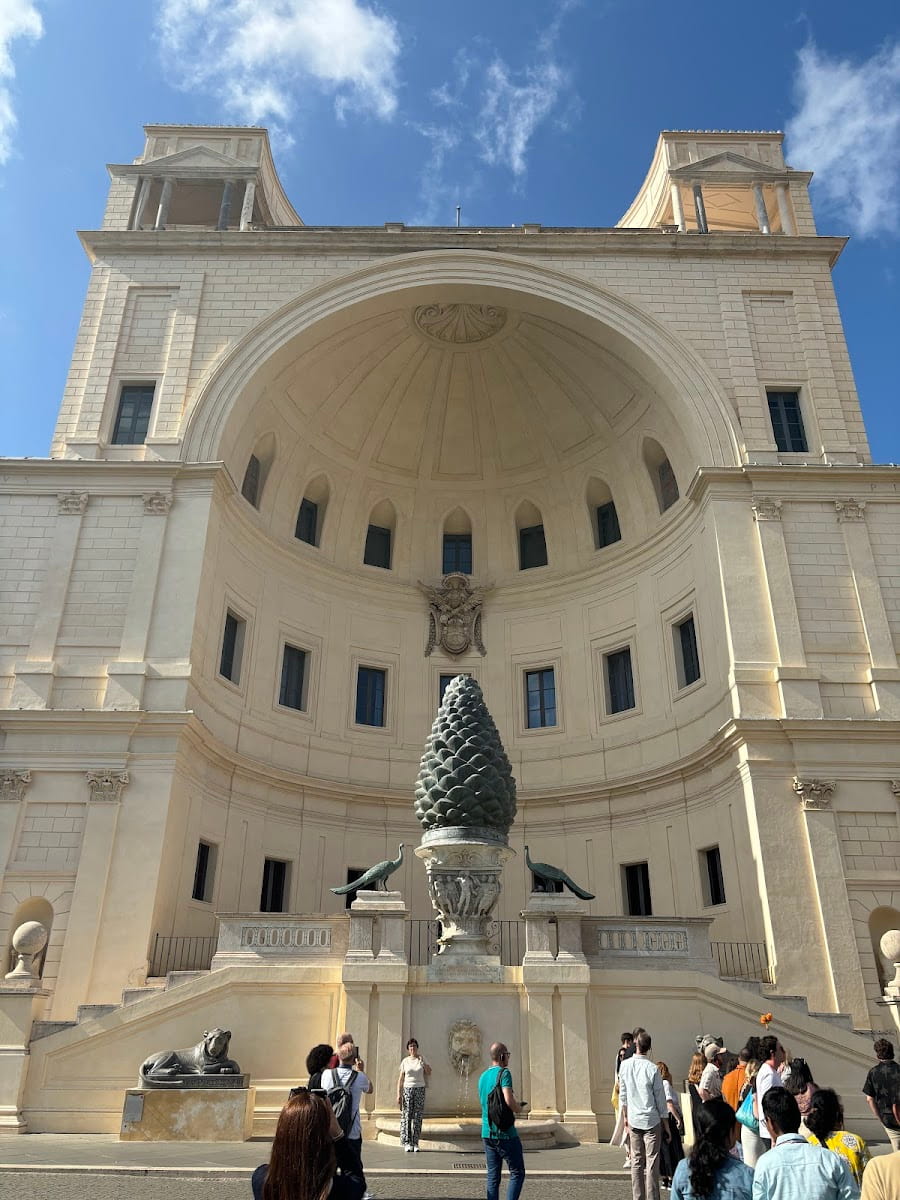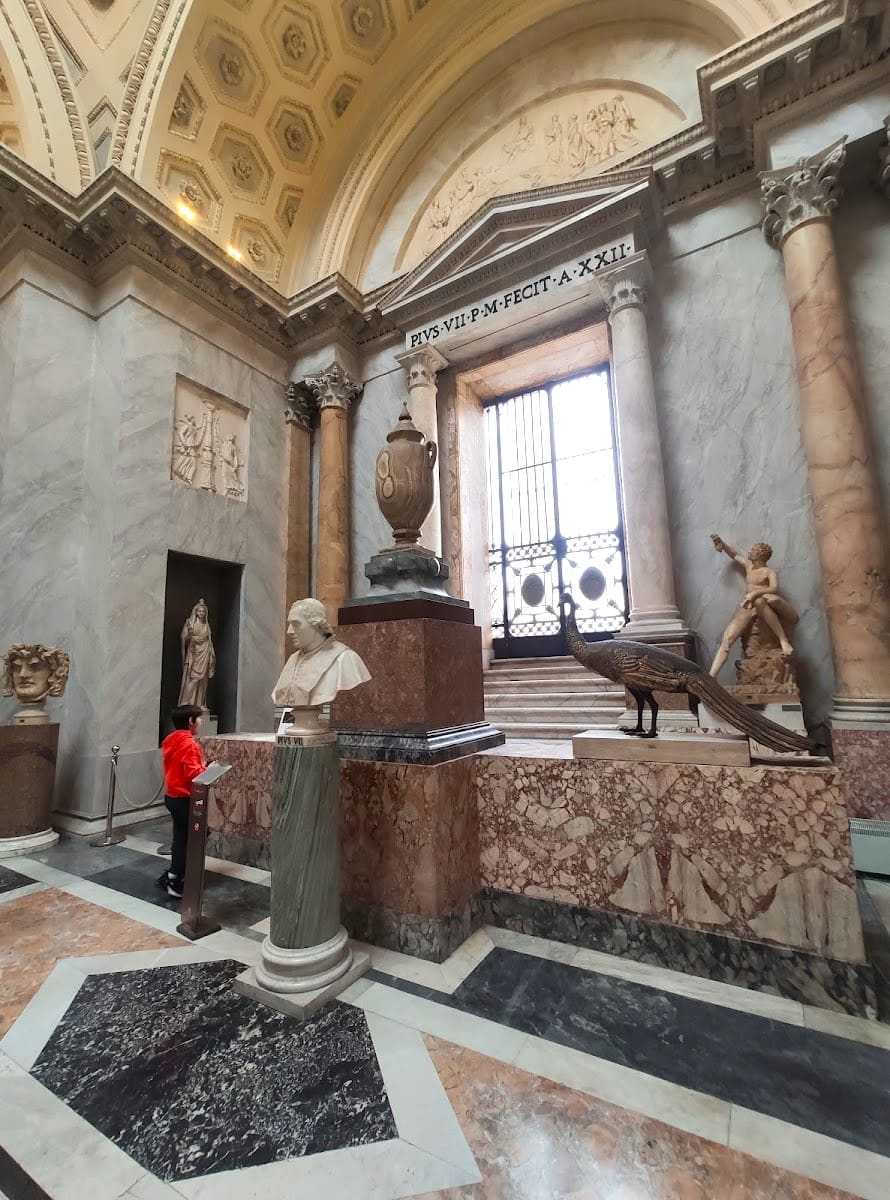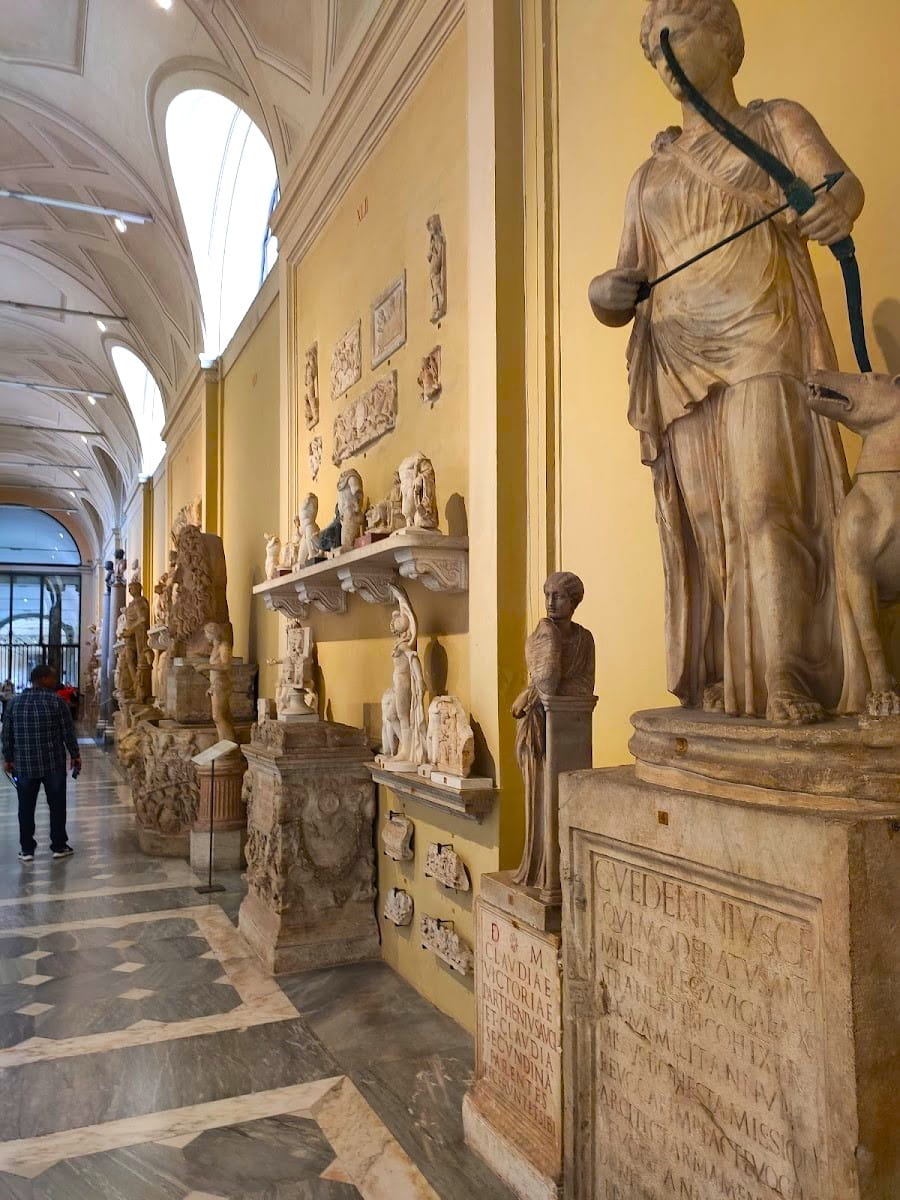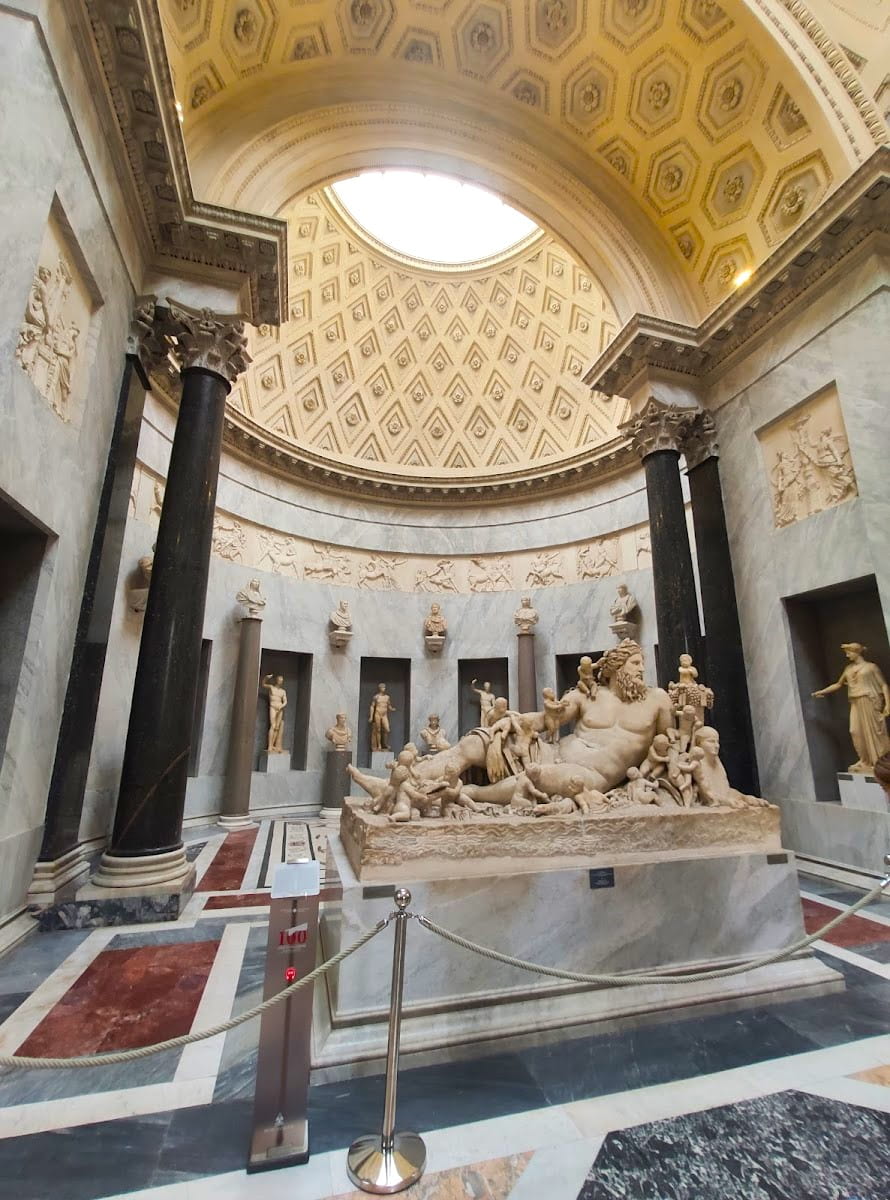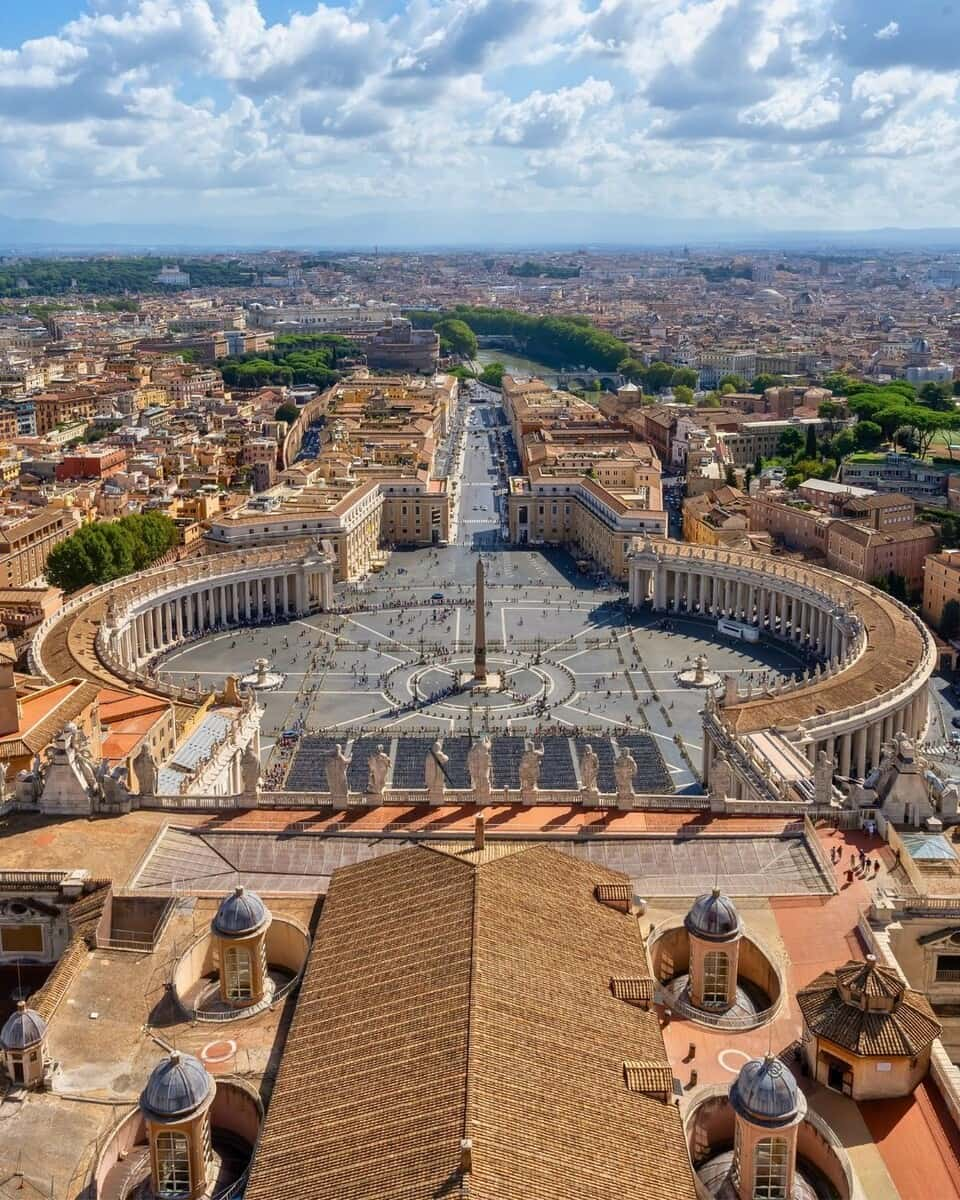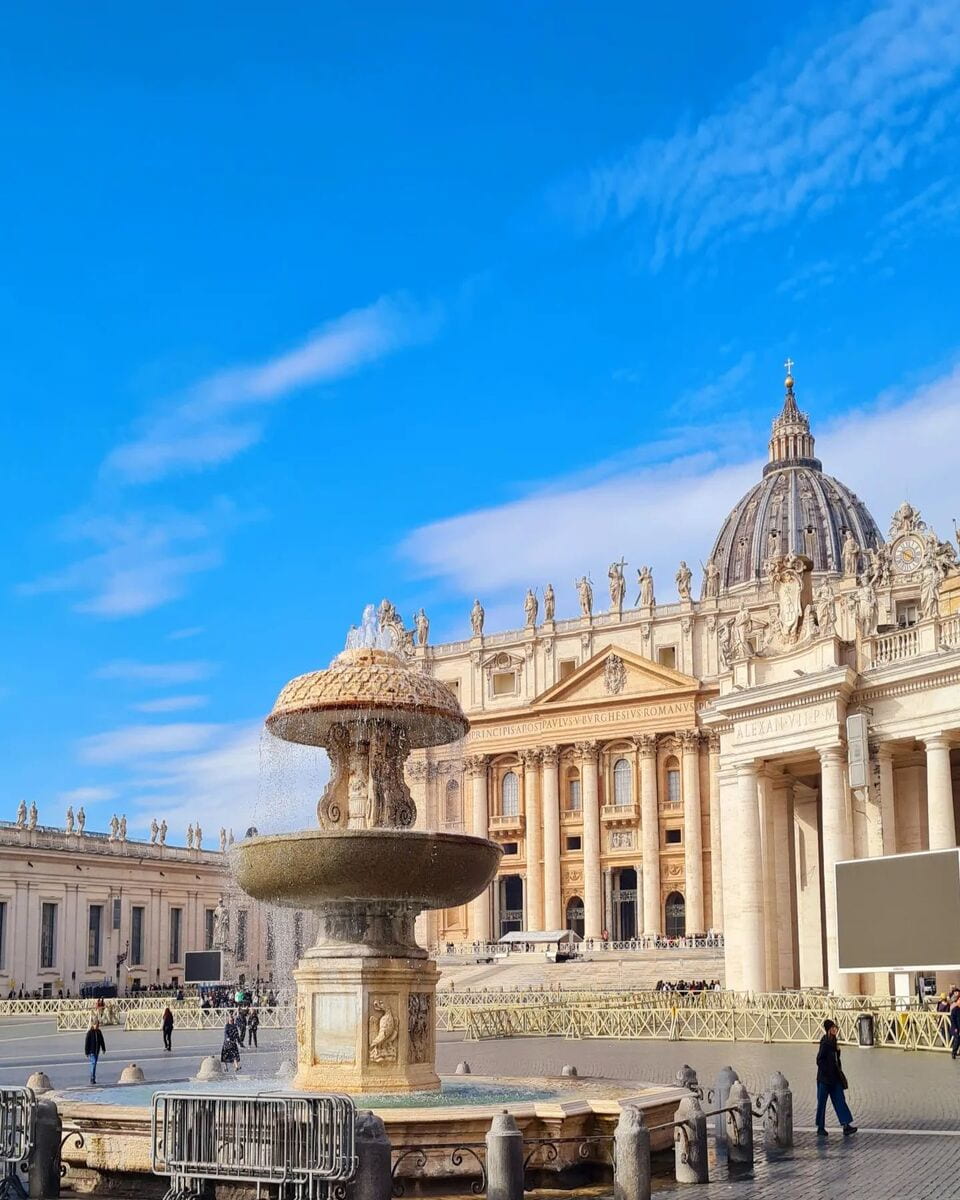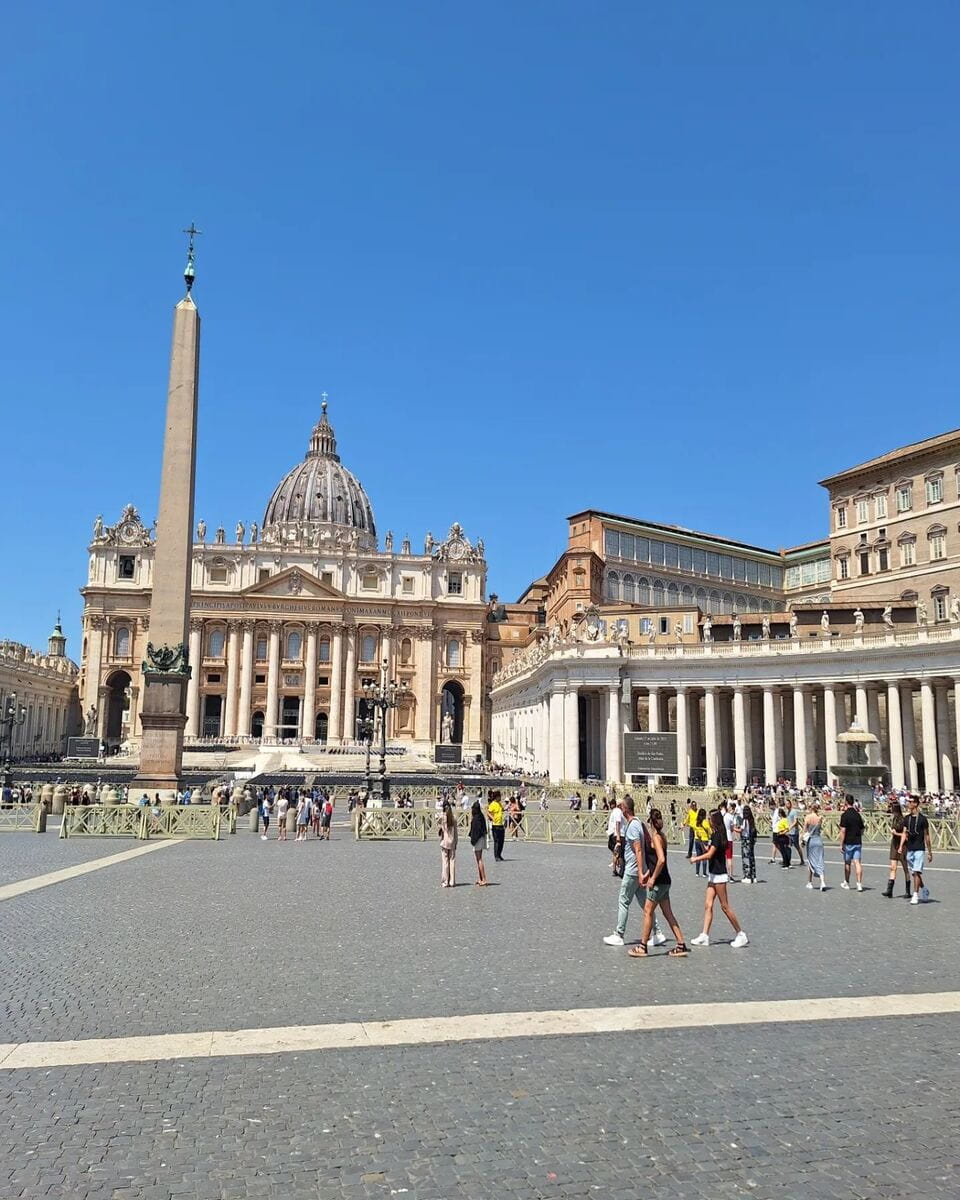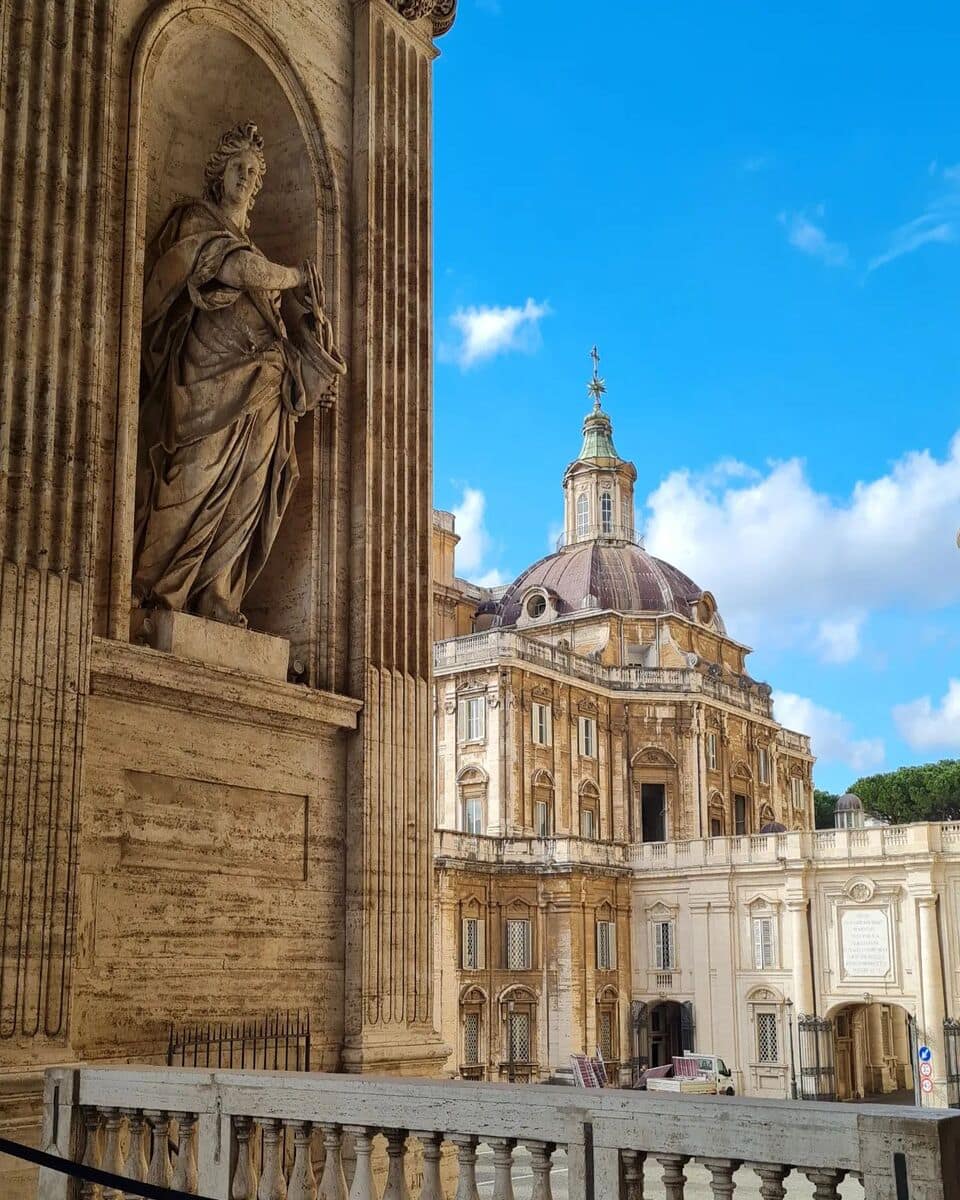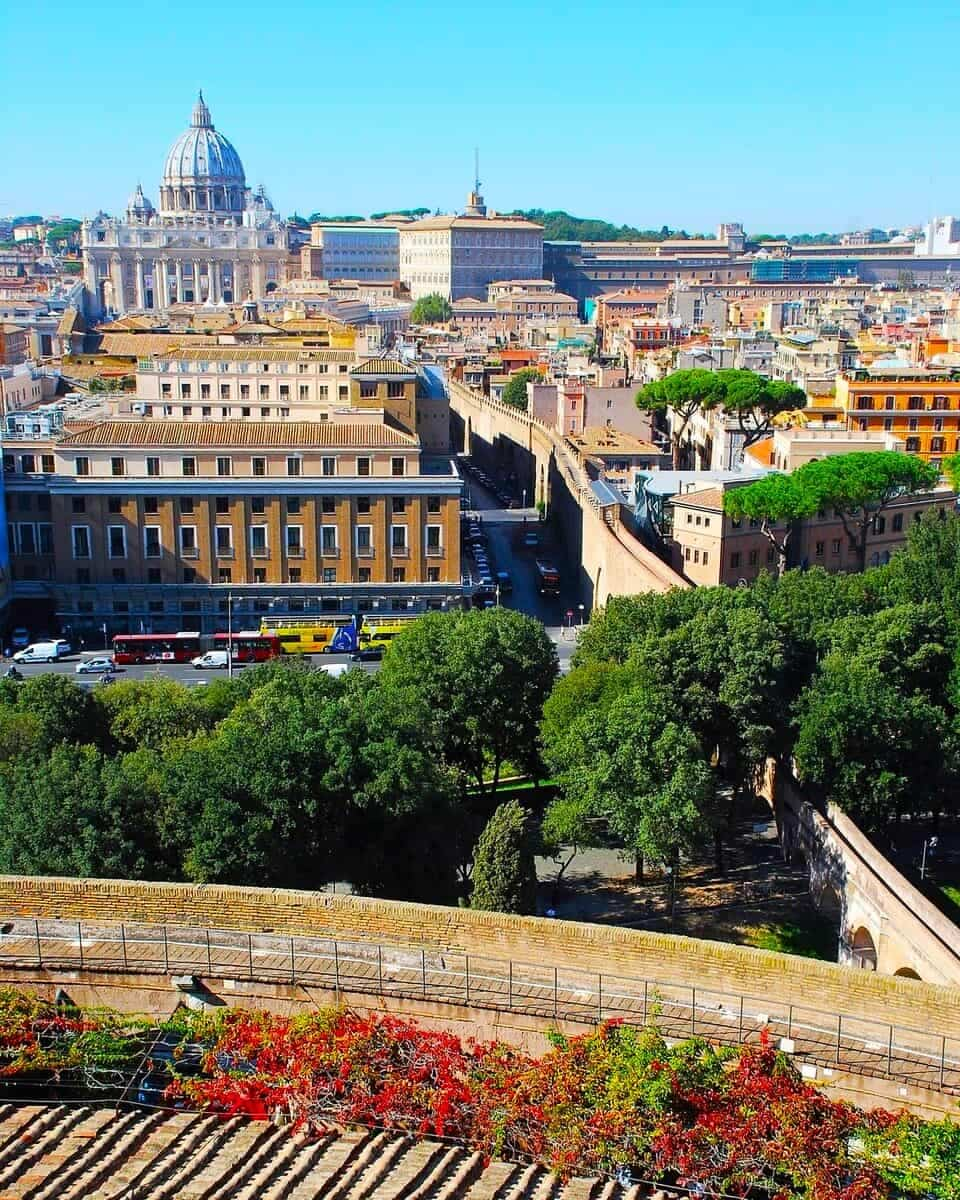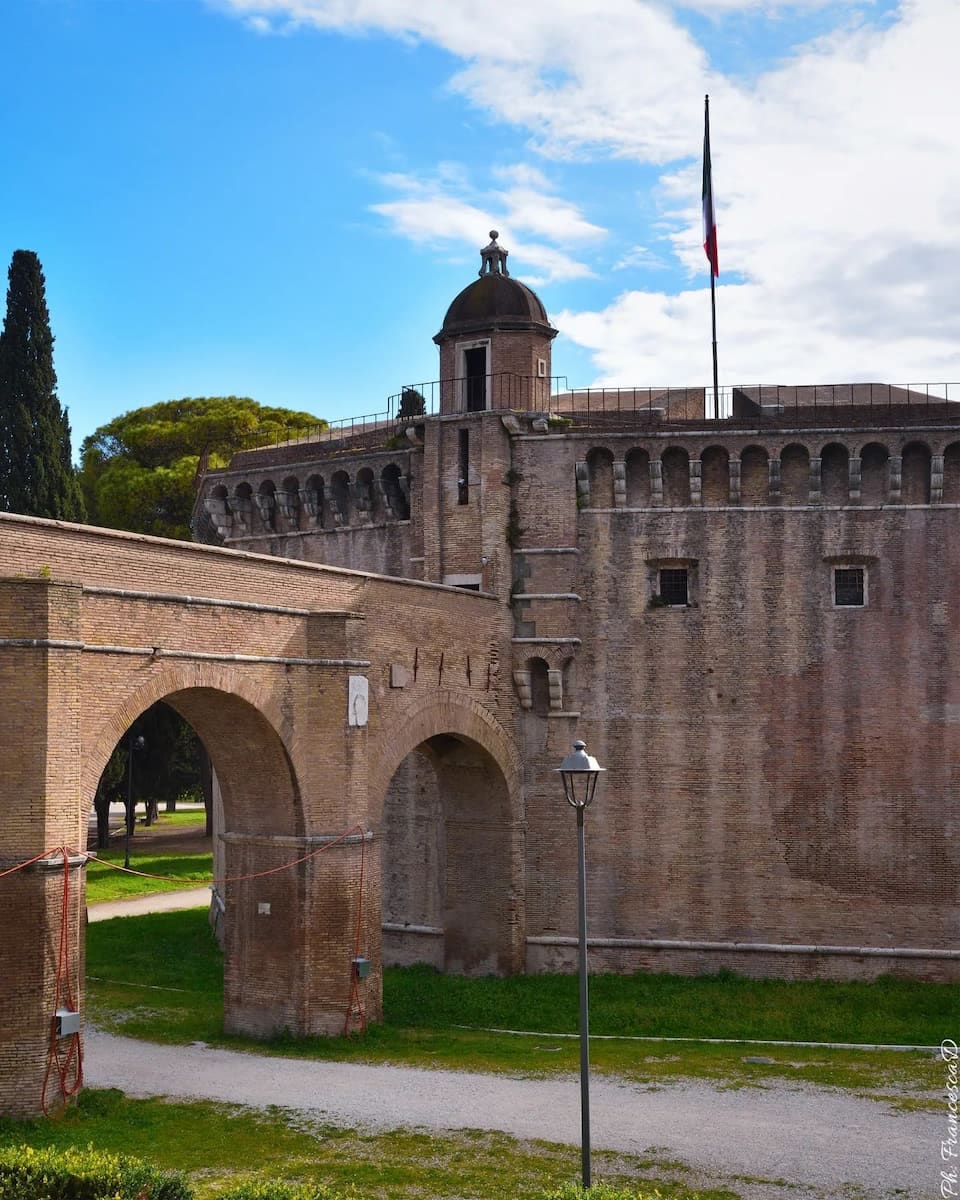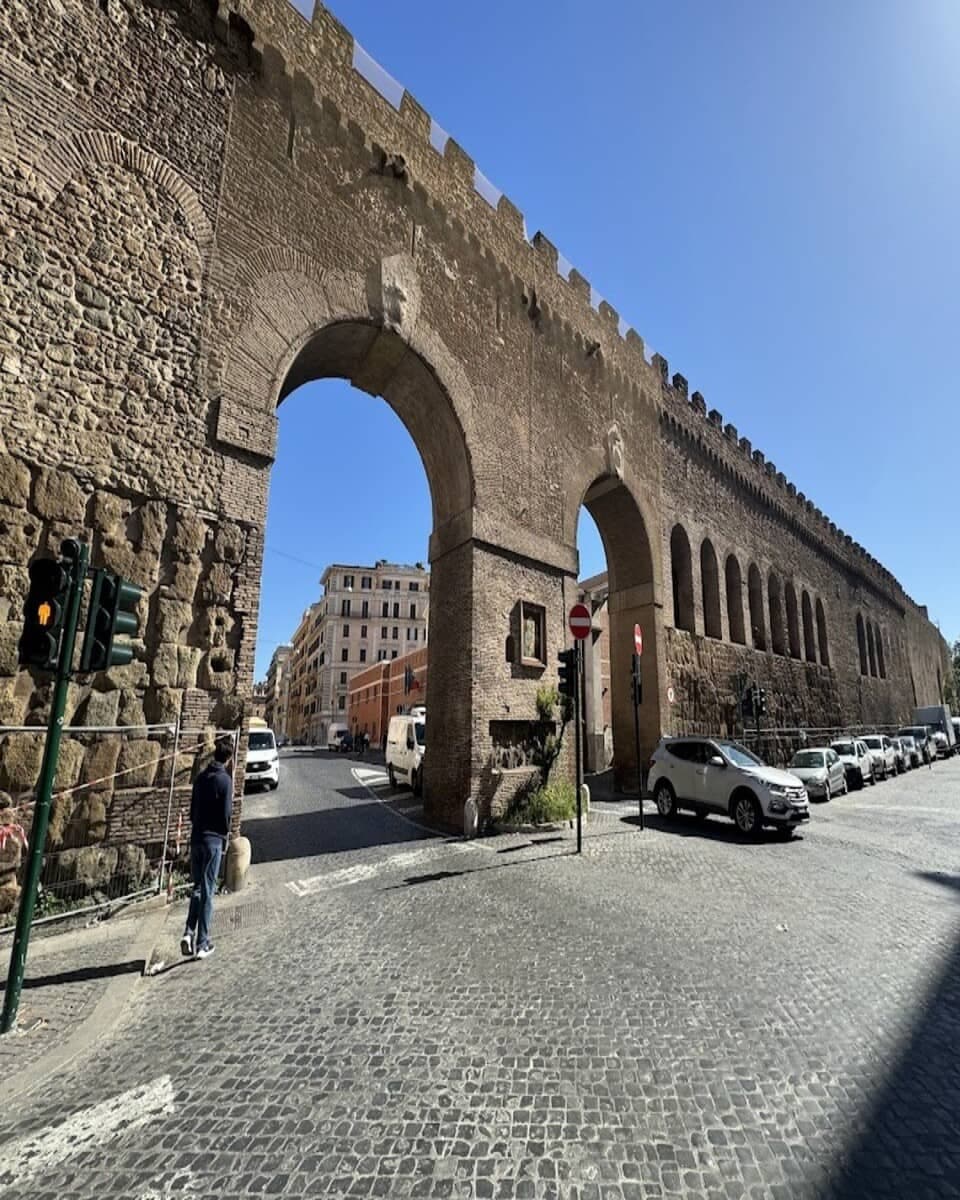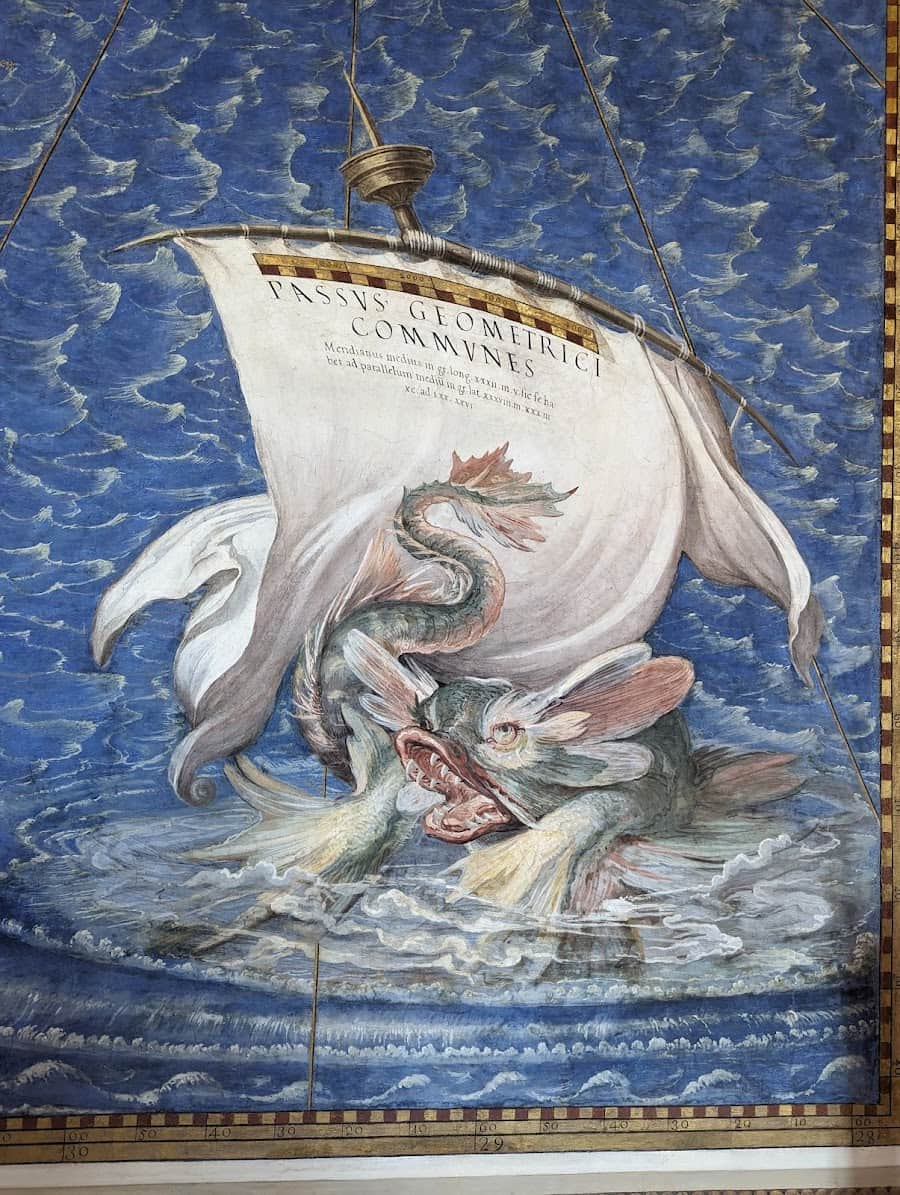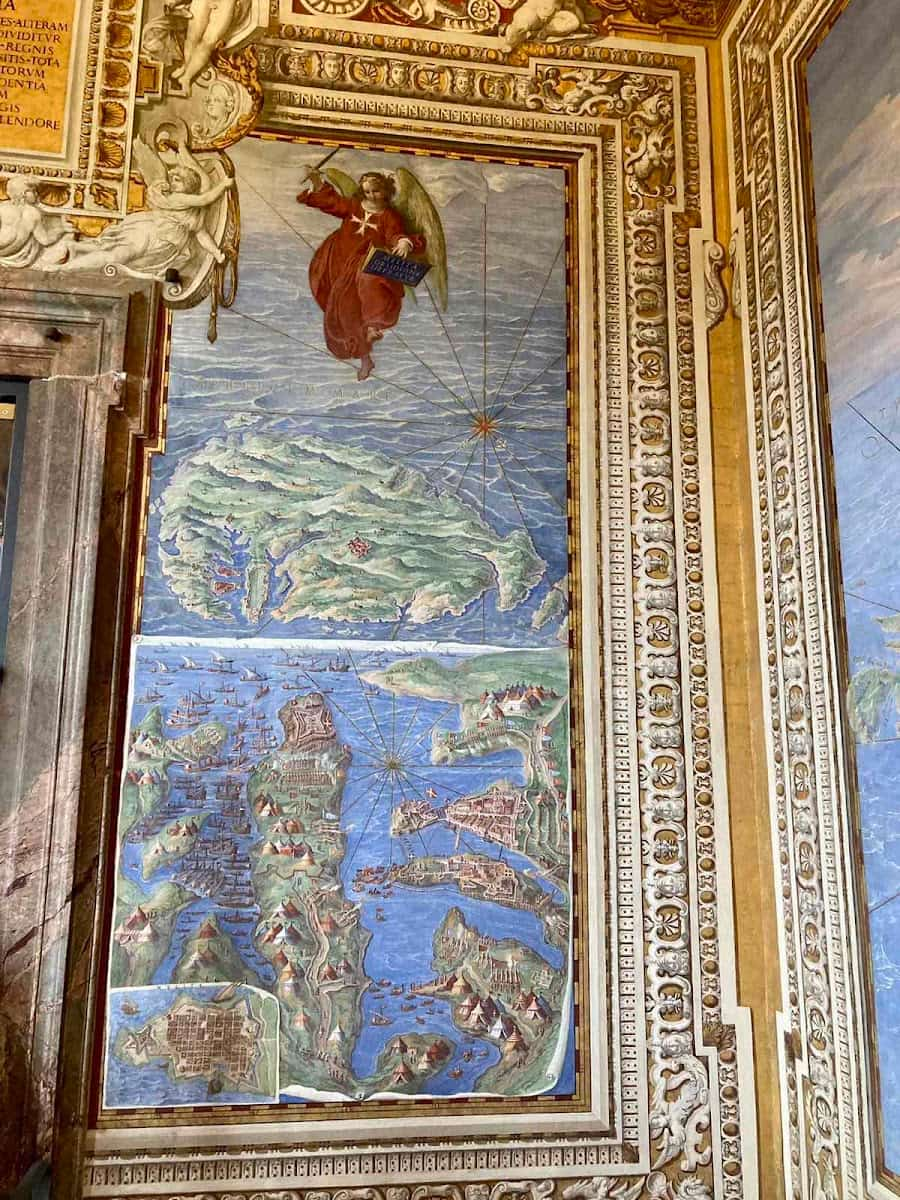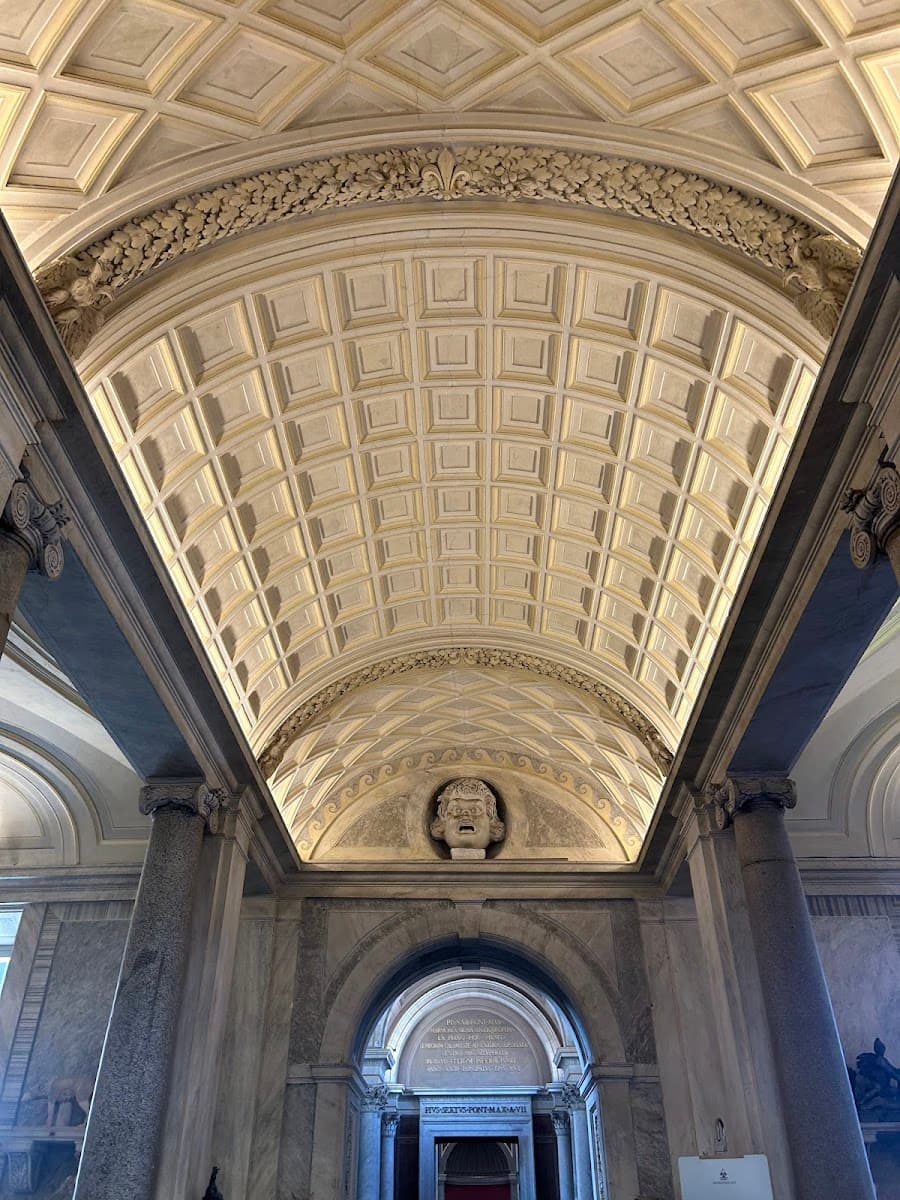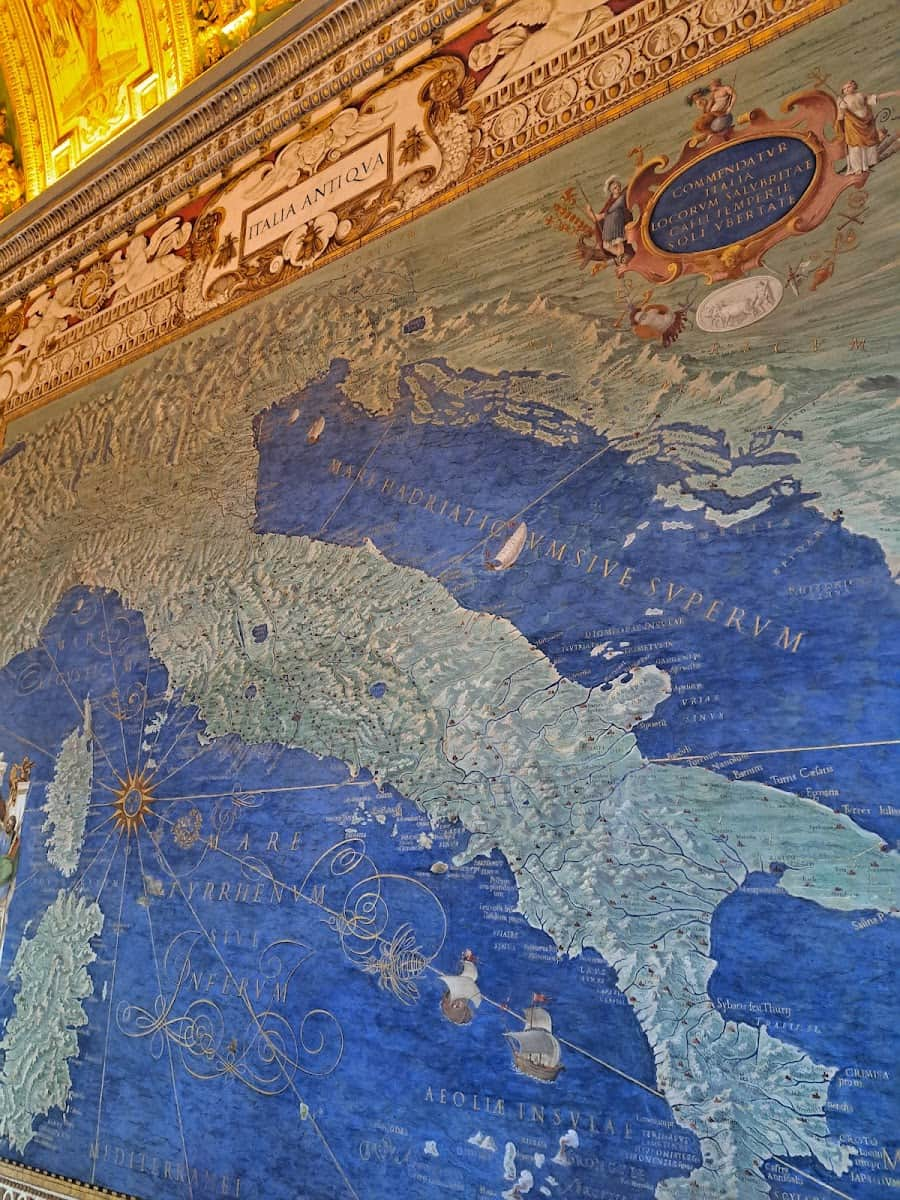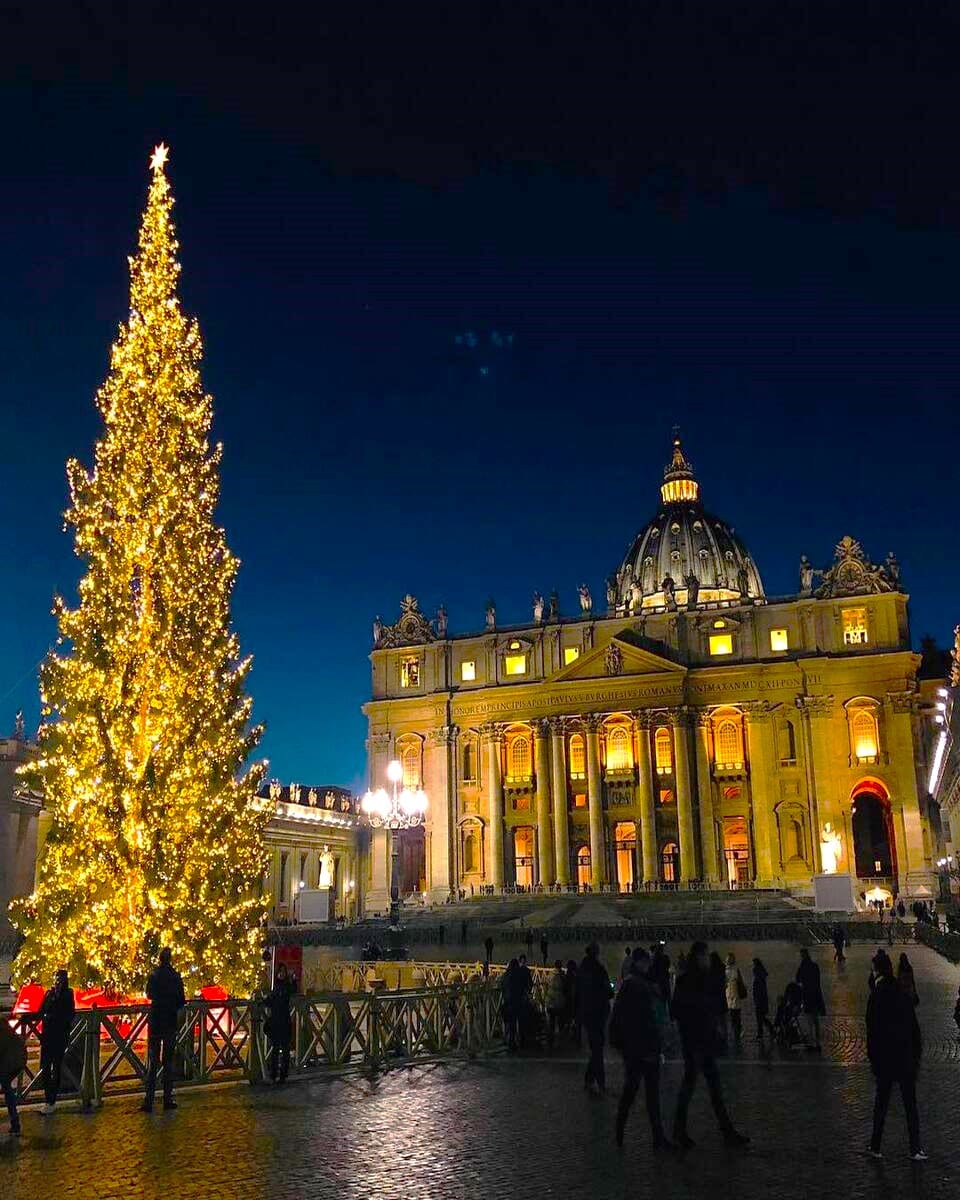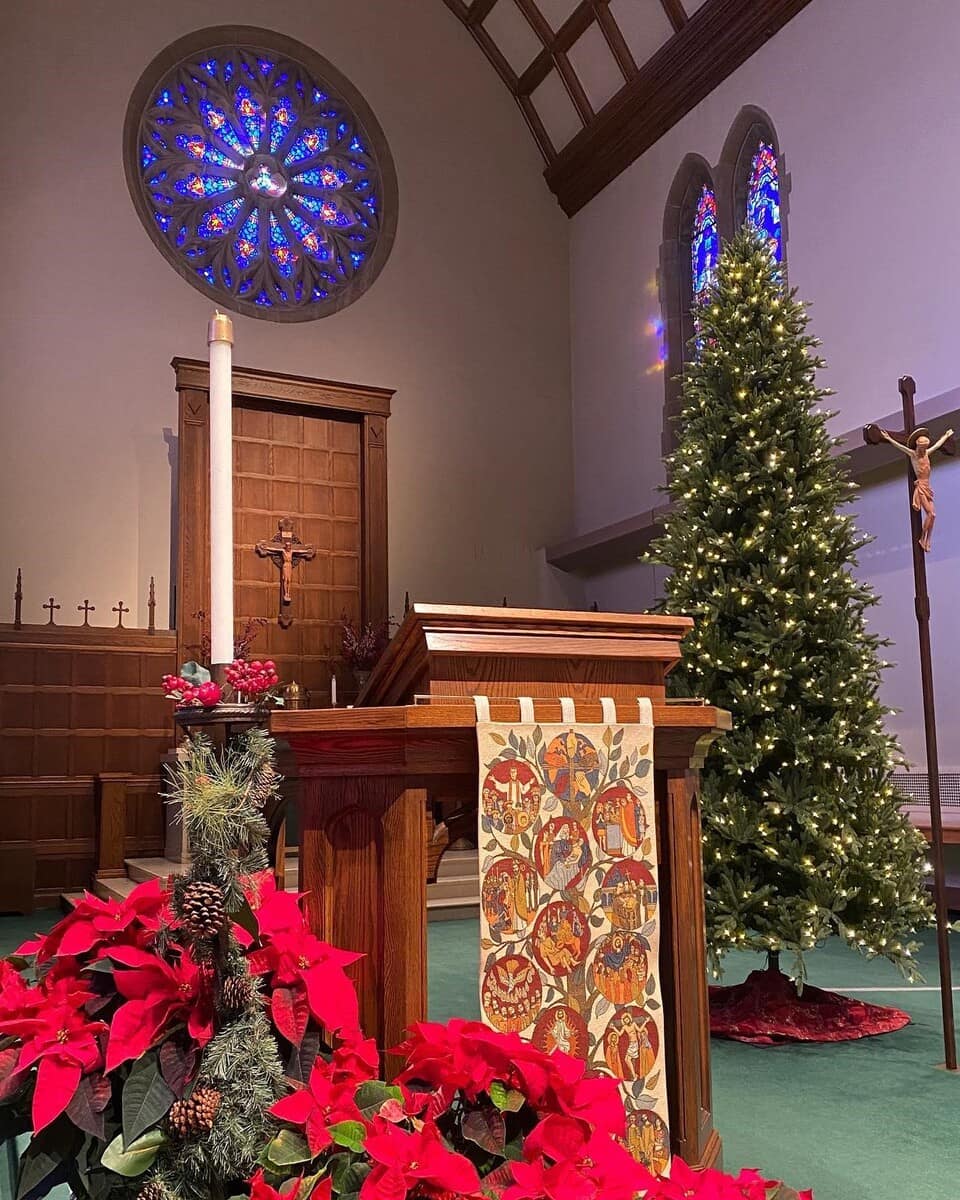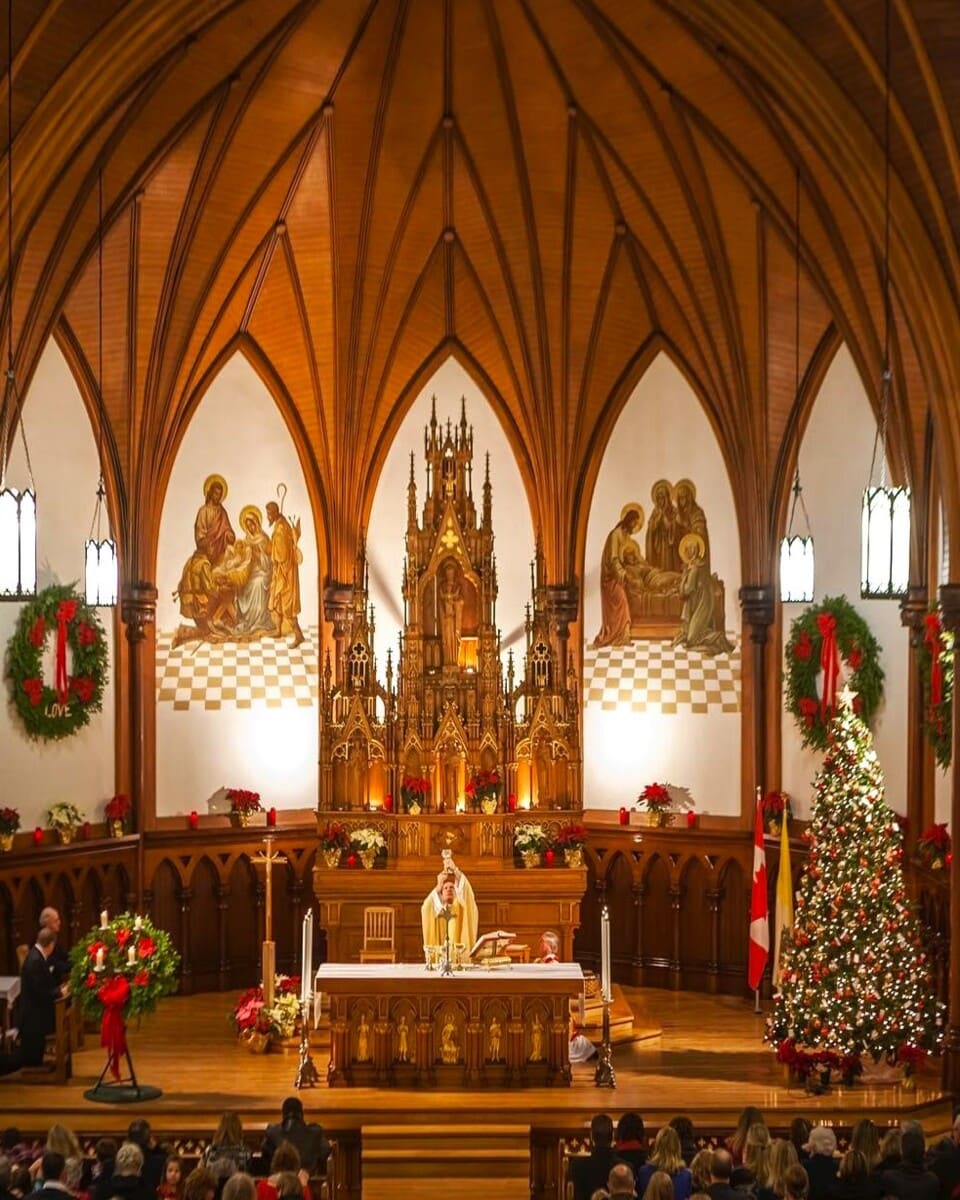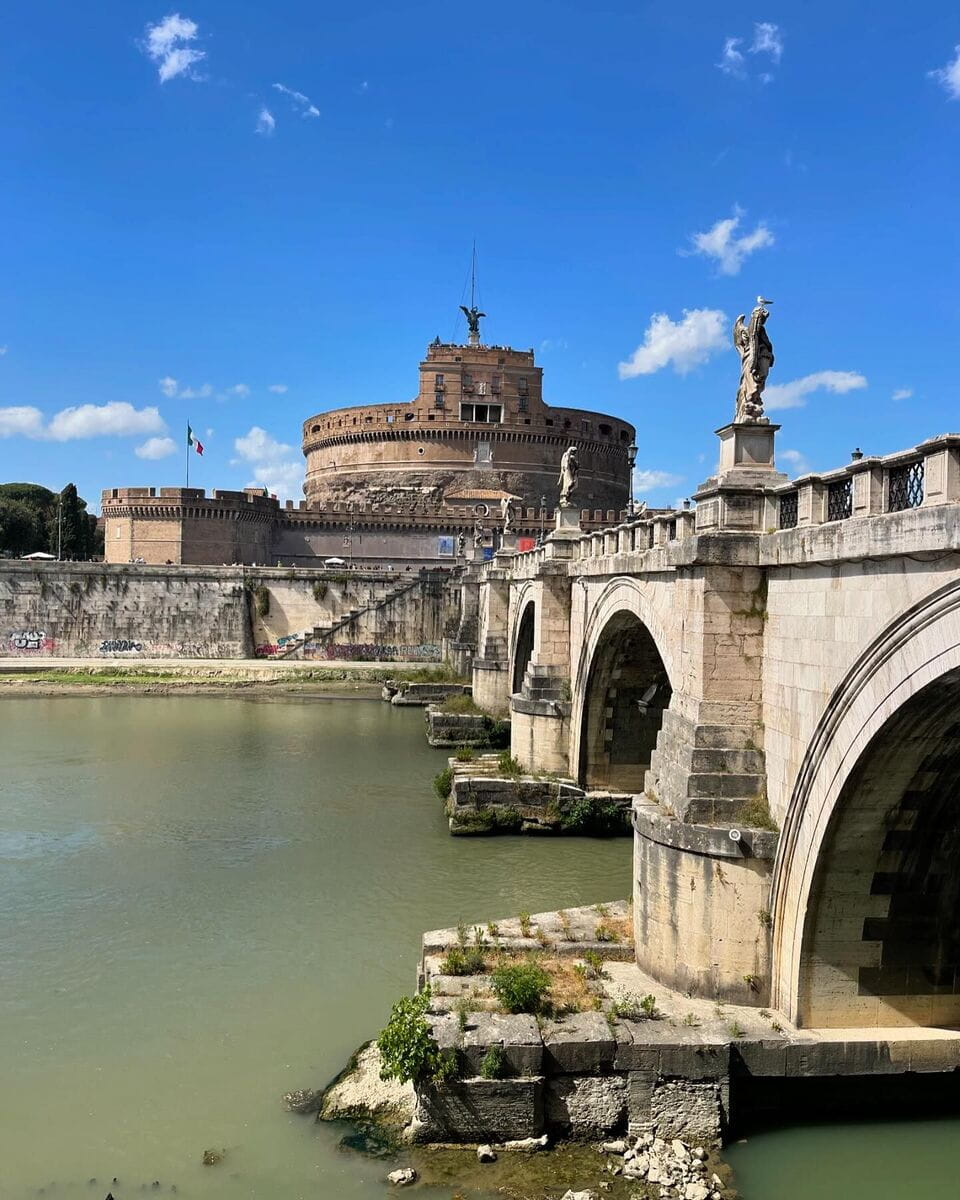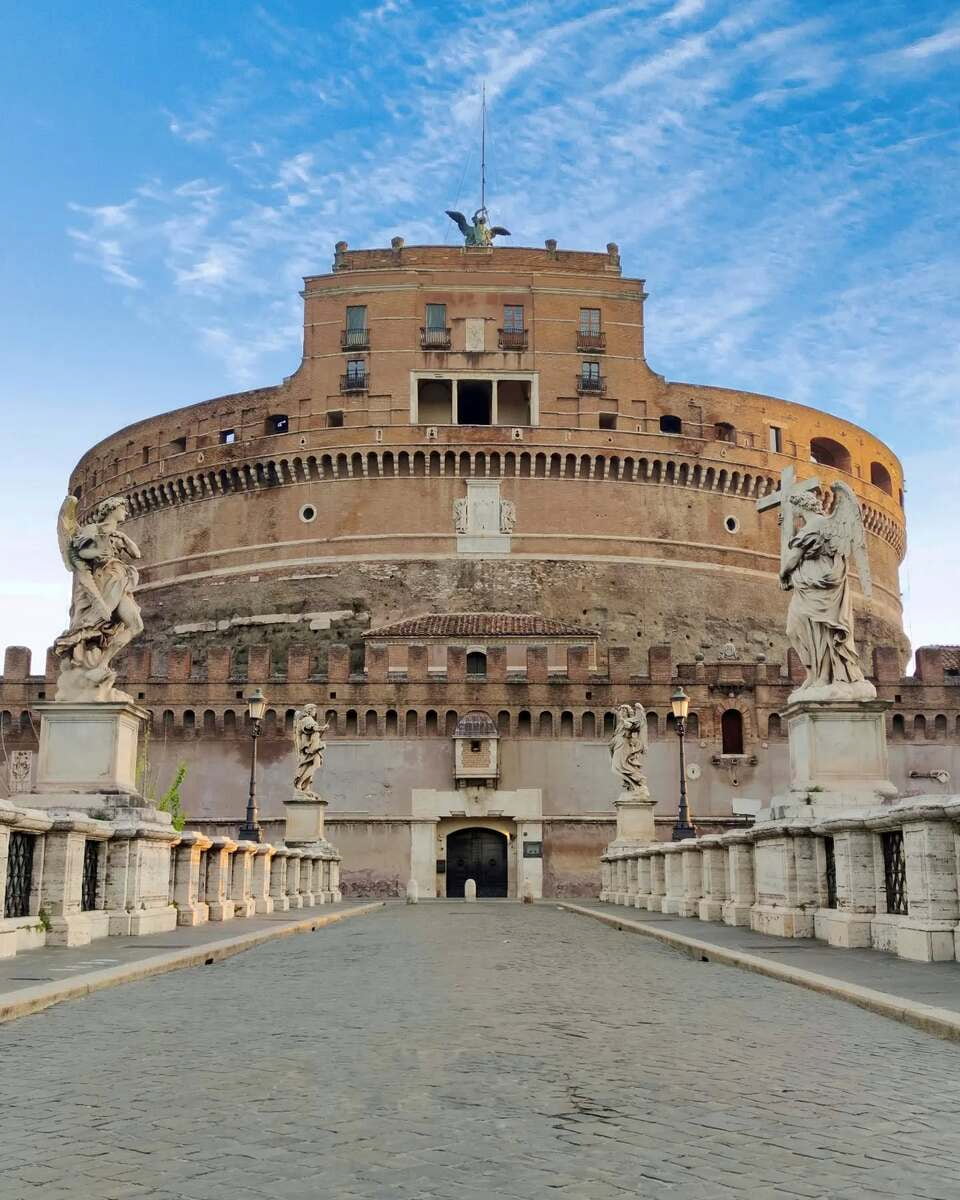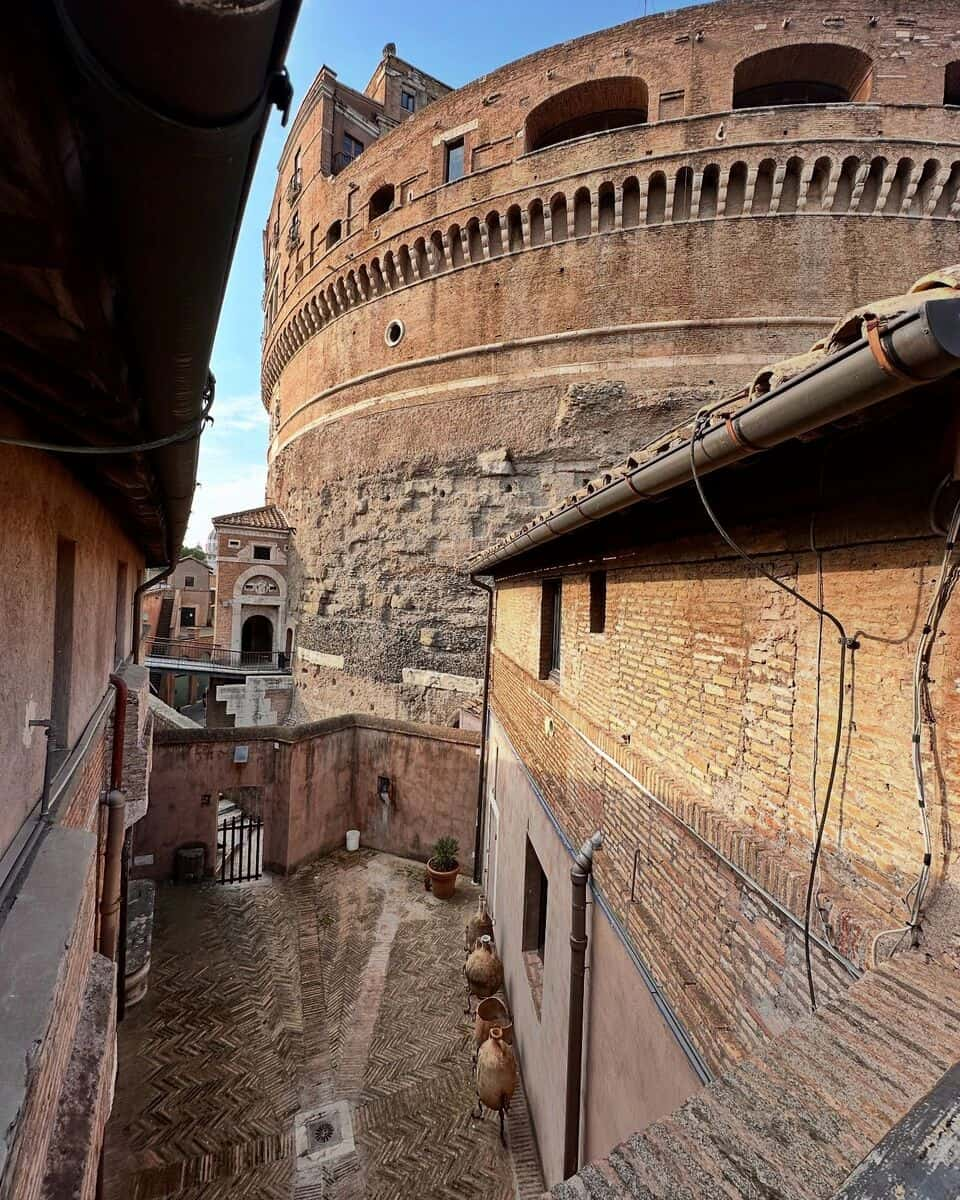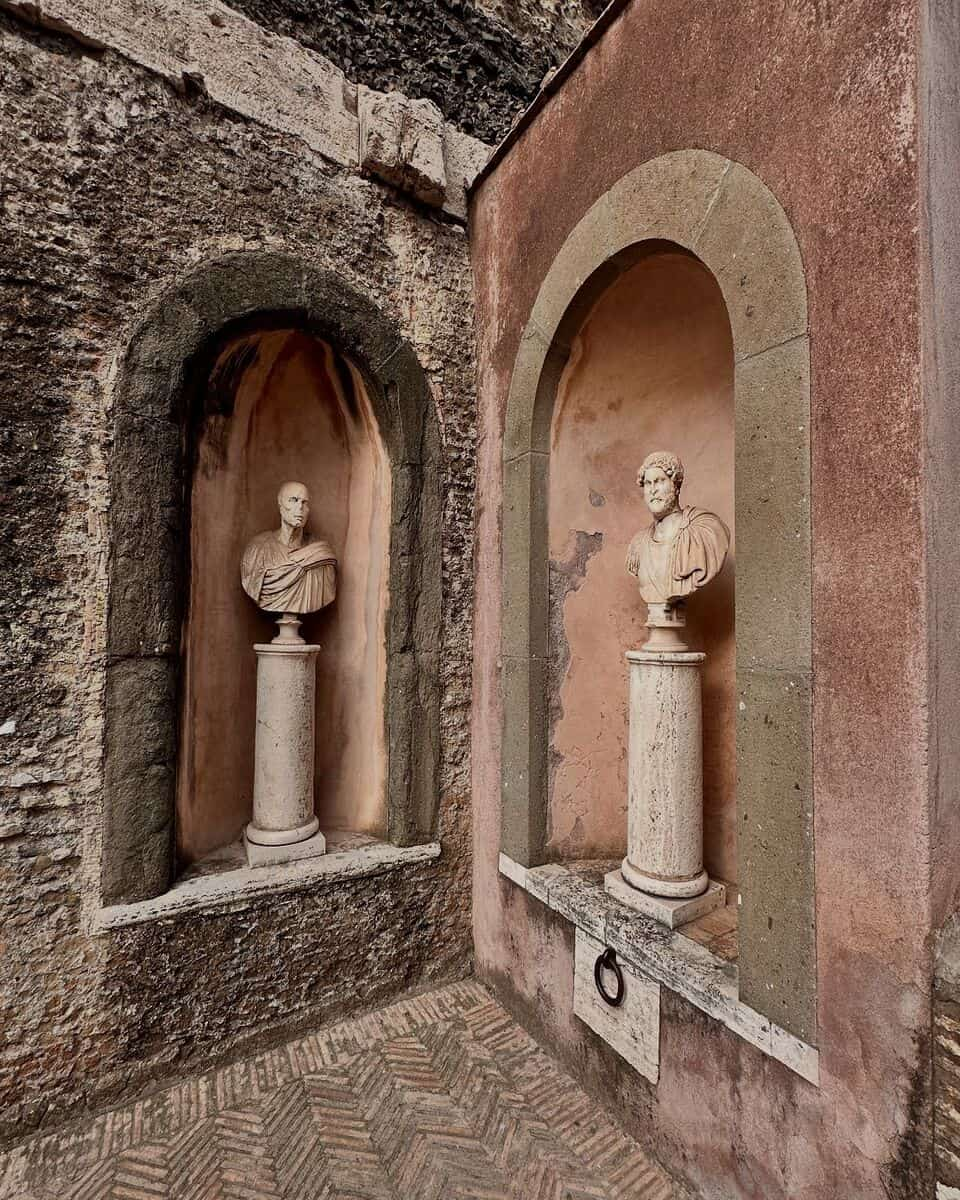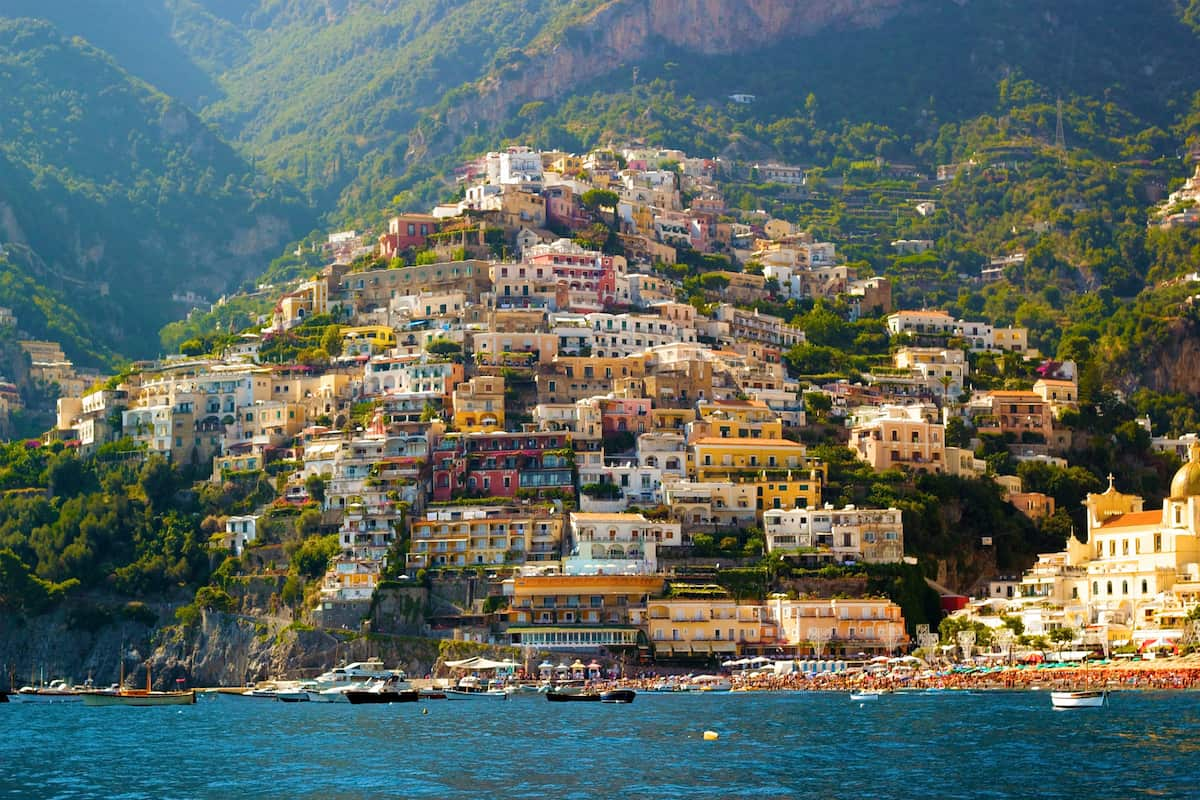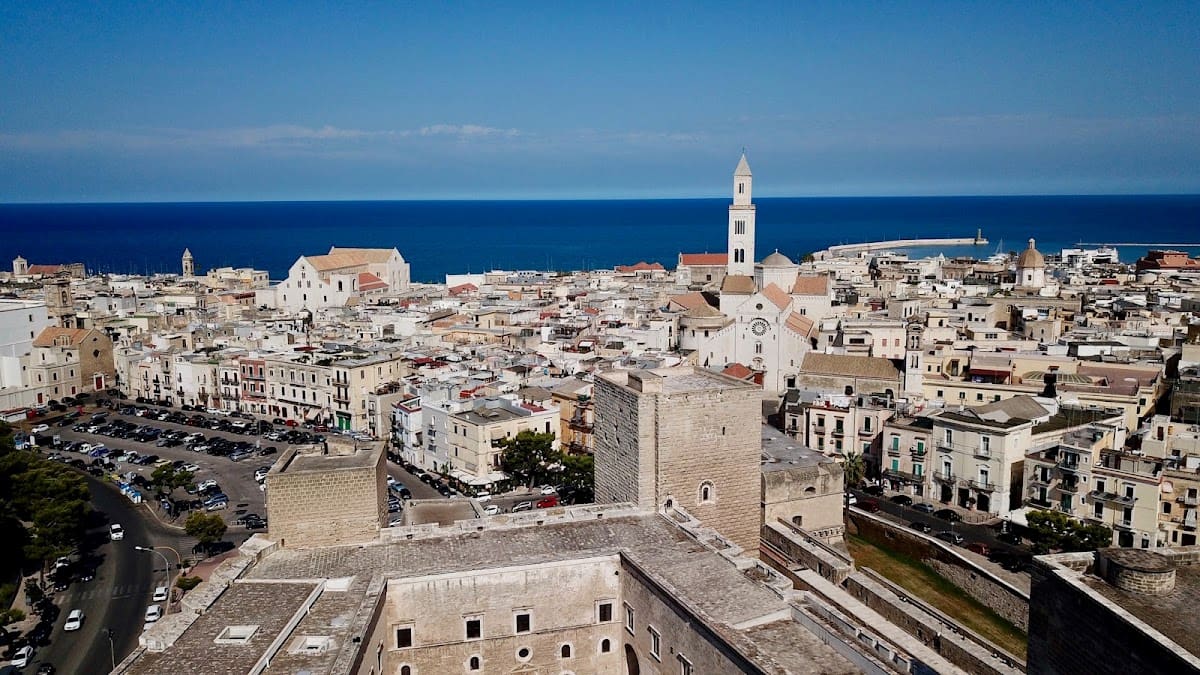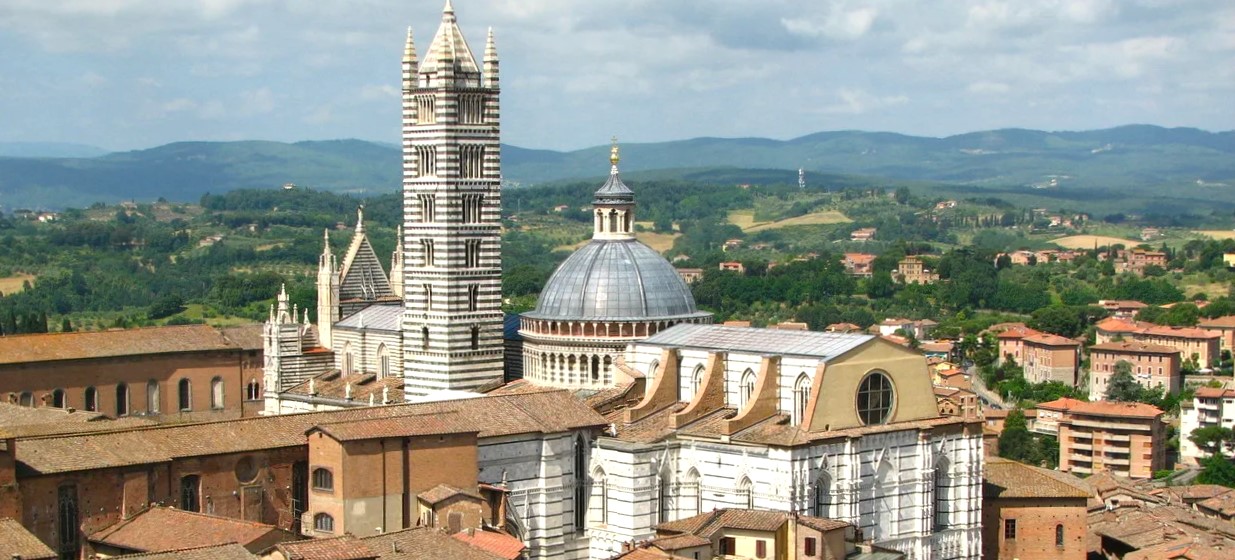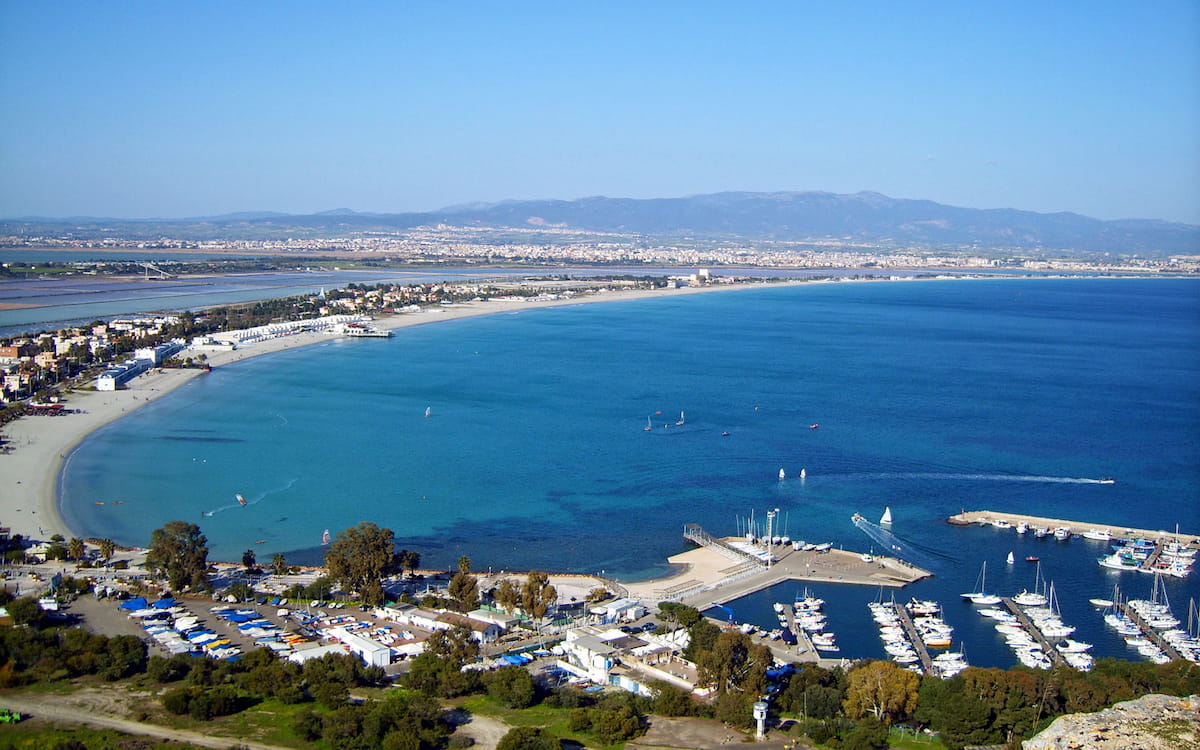Visiting St. Peter’s Basilica and climbing Peter’s Dome is a must when exploring the smallest country in the world. The panoramic views of the city of Rome from the top are breathtaking, and the basilica itself, with its stunning stained glass and La Pietà, is a masterpiece of Renaissance architecture. Don’t forget to explore the Vatican Grottoes, where past popes are buried, and take a stroll around Piazza San Pietro, home to the iconic St. Peter’s Square Obelisk.
🏠 Where to Stay in Vatican
- 💎 Luxury Hotel: Villa Agrippina Gran Meliá
- ✨ 5-Star: St. George Roma
- 🏨 4-Star: Residenza Paolo VI
- 🛏️ 3-Star: Domus Porta Angelica
- 💸 Cheap: Di Fronte alla Cupola
- 🏢 Apartment: St. Peter's View
- 👨👩👧👦 For Families: Elle Boutique
- 🏩 For Couples: San Pietro Grand Suite
A visit to the Vatican Museums is essential for art lovers, offering treasures like the Raphael Rooms, the School of Athens, and the famous Sistine Chapel. For those interested in ancient history, the Gregorian Egyptian Museum showcases artifacts from ancient Egypt, while the Pio-Clementine Museum houses classical sculptures. To make the most of your visit, consider booking a guided tour of the Vatican Museums or a special Scavi Tour to explore the Vatican Necropolis, where you can visit the tomb of St. Peter.
💁 Best Guided Tours
- V.I.P. Small Group Vatican Museums and Sistine Chapel Tour from € 75 (⭐4.8/5)
- Private Sightseeing Tour of Rome and Vatican Museums with Your Driver from € 620 (⭐5/5)
- Private Skip-the-Line Vatican Gardens and Sistine Chapel Tour Including Hotel Pickup from € 780 (⭐5/5)
- Private Vatican VIP Experience: Vatican Museums and Sistine Chapel Including Hotel Pickup from € 5370 (⭐5/5)
Best Things to Do in Vatican
1. 🏛️ St. Peter’s Basilica and Dome
Architectural Magnificence: St. Peter’s Basilica, the crown jewel of Vatican City and the largest church in the world, houses Michelangelo’s touching Pietà and countless other masterpieces. The stunning dome, designed by Michelangelo himself, rises 136 meters above the altar, making it the tallest dome in the world.
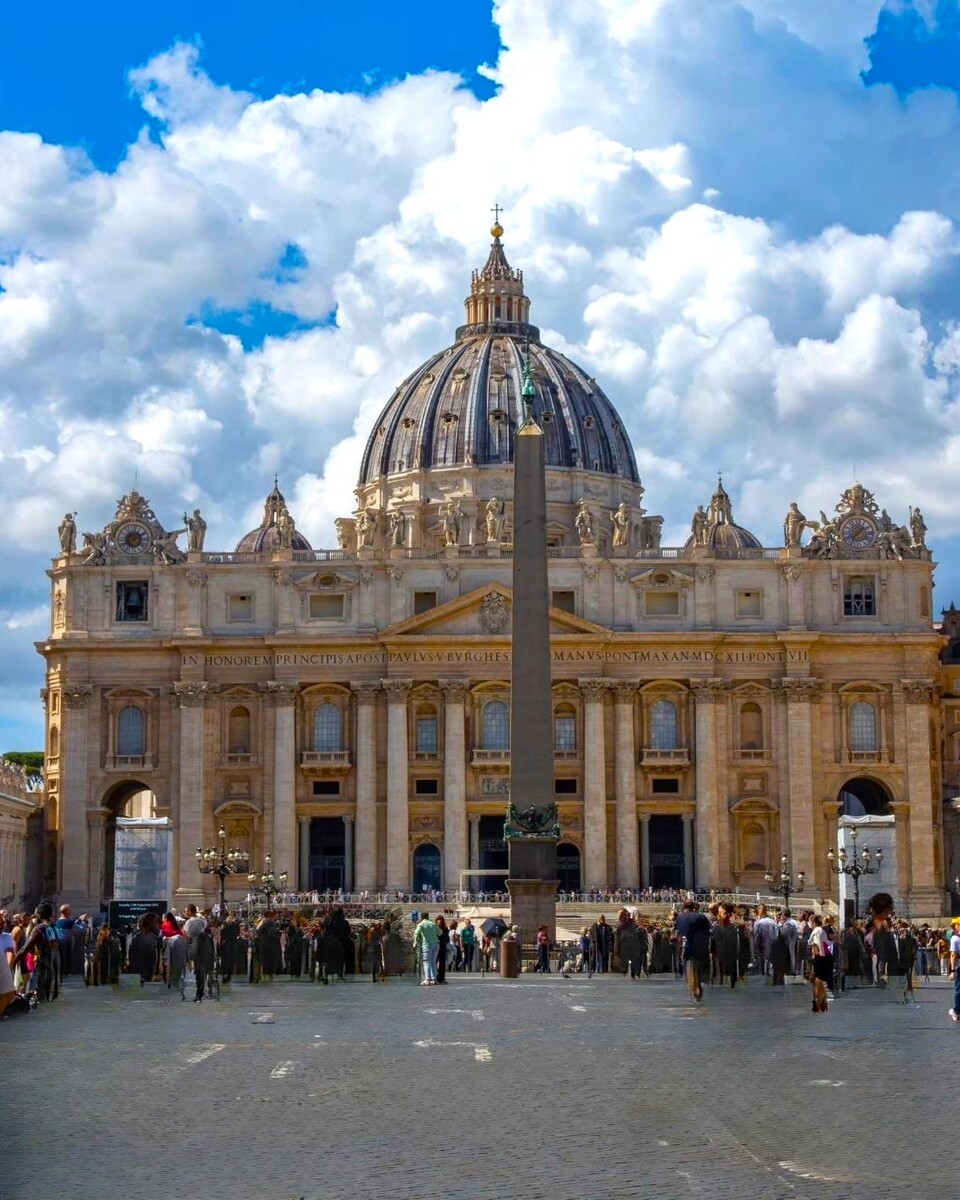
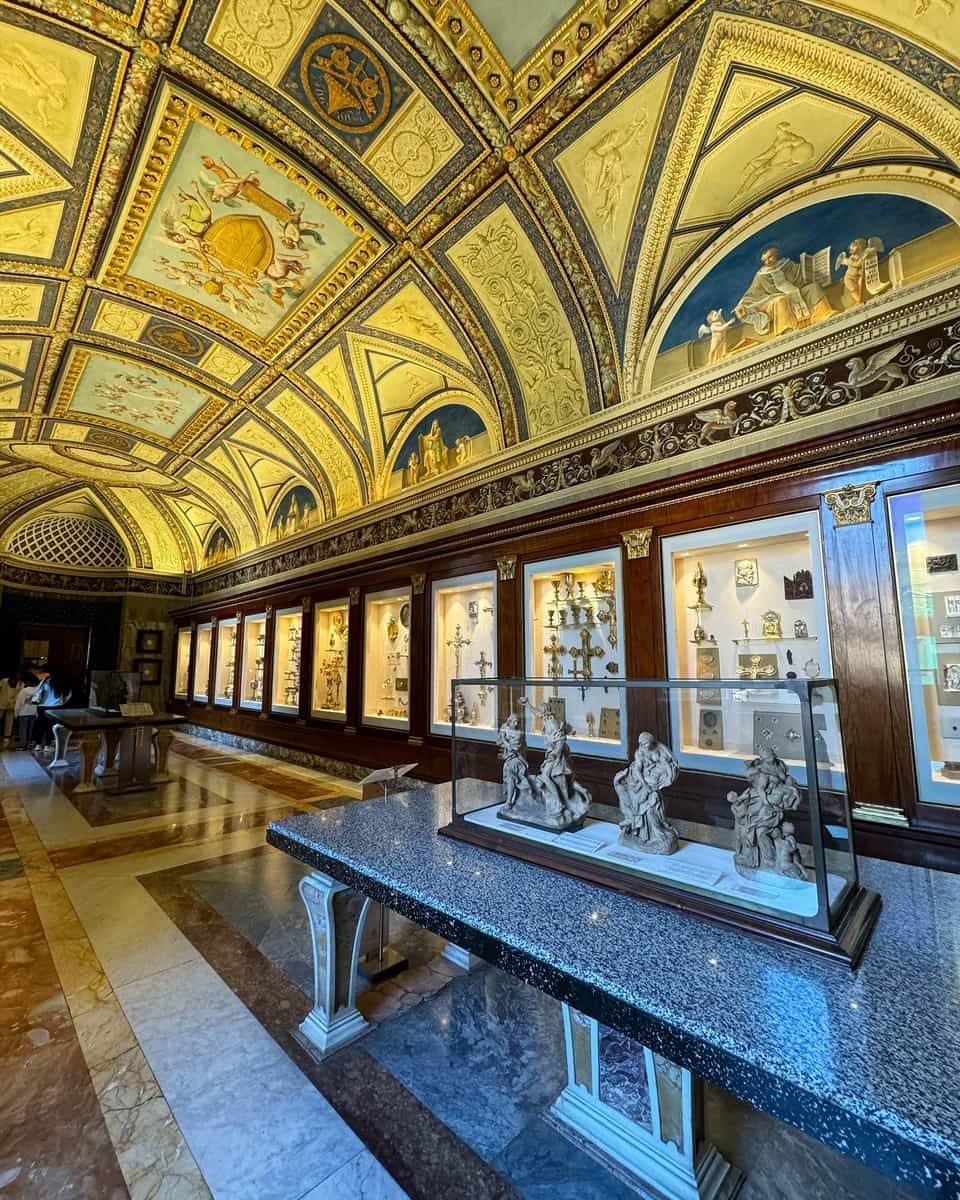
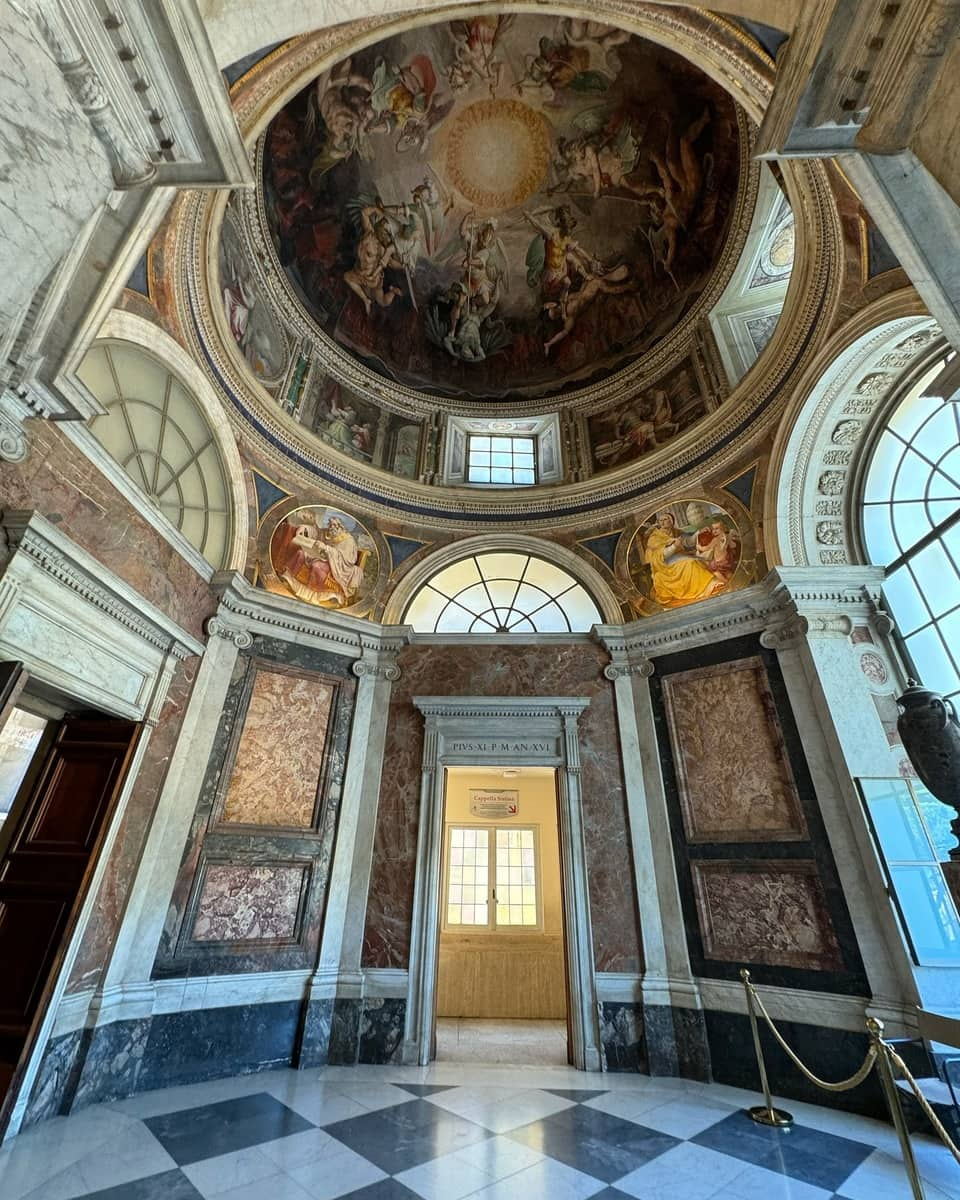
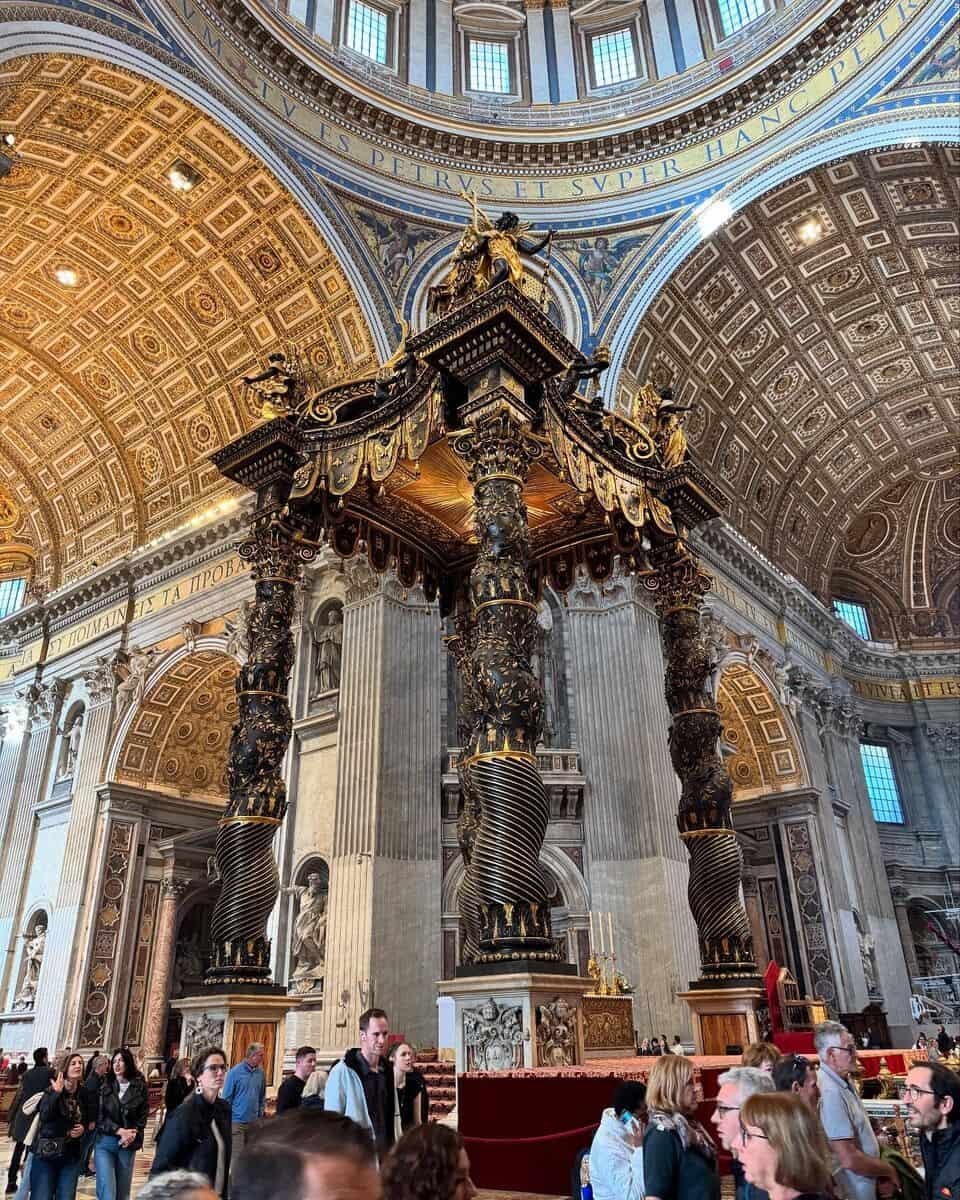
Historical Legacy: The basilica stands over the burial site of St. Peter, the first pope, and contains the tombs of 91 popes within its sacred walls. The Vatican necropolis beneath the basilica reveals ancient Roman streets and early Christian burial sites.
Time Saver: Book your tour for the first morning slot at 8 AM and start with the dome climb before the basilica gets crowded.
⭐ Best activities
- Tour: V.I.P. Small Group Vatican Museums and Sistine Chapel Tour – This VIP Small Group Tour offers an exclusive experience of the Vatican Museums, Sistine Chapel, and St. Peter’s Basilica. You’ll skip the long lines and enjoy a guided tour in a small group, ensuring a more intimate and informative visit. The tour also includes access to the Vatican Grottoes, where you can explore the tombs of past popes.
- Ticket online: St Peter's Basilica & Dome: Guided Tour Ticket – Explore St. Peter’s Basilica with a professional art historian.
2. 🎨 Raphael Rooms
Artistic Treasure: The Raphael Rooms showcase some of the Renaissance’s most significant frescoes, including the famous School of Athens, where ancient philosophers gather in a spectacular architectural setting. These rooms, commissioned by Pope Julius II, represent the peak of High Renaissance artistry.
Cultural Impact: Each room tells a different story through its frescoes, from theological truths to historical events, creating a visual encyclopedia of Renaissance culture and papal authority.
Insider Tip: Visit between 1-2 PM when tour groups break for lunch for a more intimate viewing experience.
⭐ Best activities
- Tour: Vatican Museum, Sistine Chapel & Raphael Rooms – Save time and hassle with skip-the-line access to the Vatican on a guided tour. Pick from morning or afternoon departure times to suit your schedule.
- Ticket online: Vatican: Museums Ticket – See priceless works of art from the Papal collections in the Vatican Museums and Sistine Chapel. Marvel at masterpieces from antiquity to Michelangelo’s legendary frescoes.
3. ⛪ Sistine Chapel
Divine Masterpiece: Michelangelo’s frescoed ceiling and The Last Judgment on the altar wall represent the pinnacle of Renaissance art, completed between 1508 and 1512. The chapel serves as both a profound artistic achievement and the sacred space where papal conclaves elect new popes.
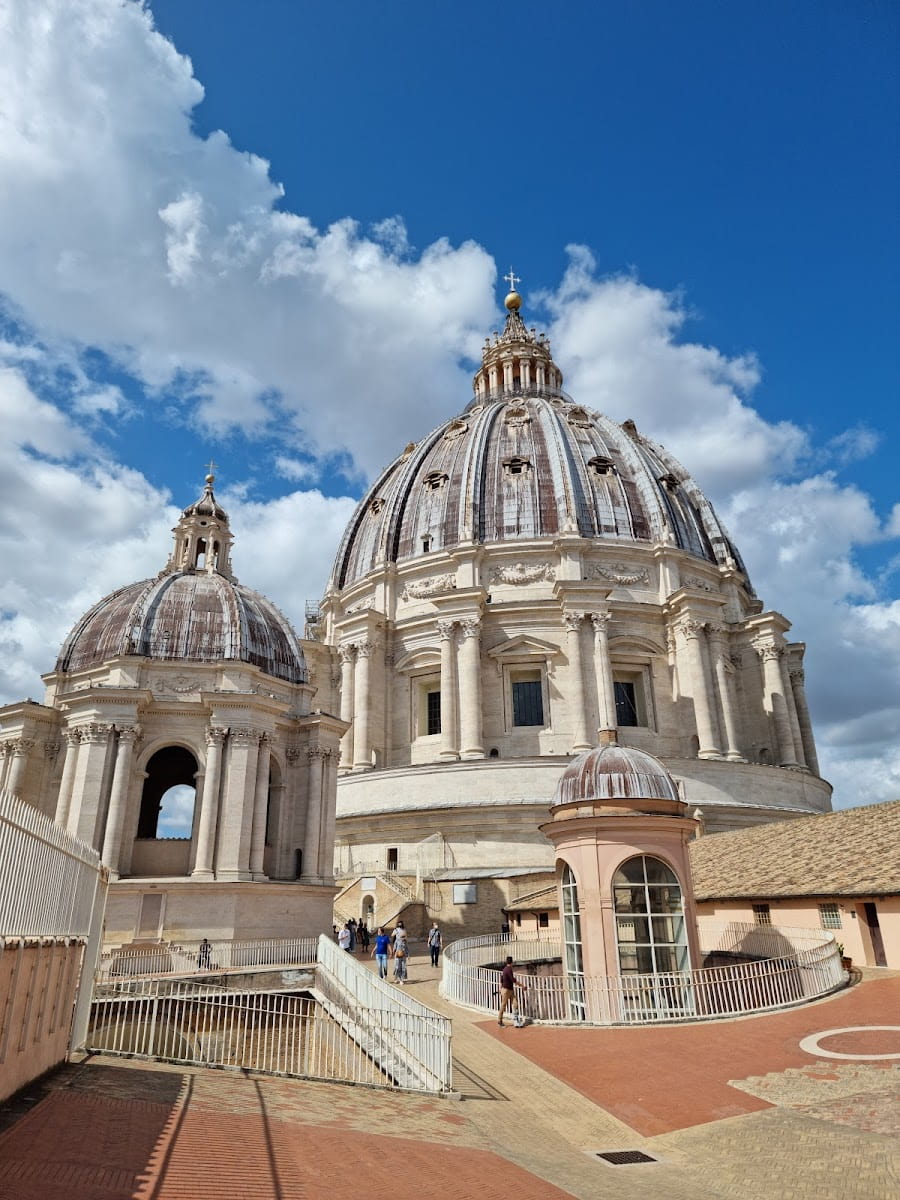
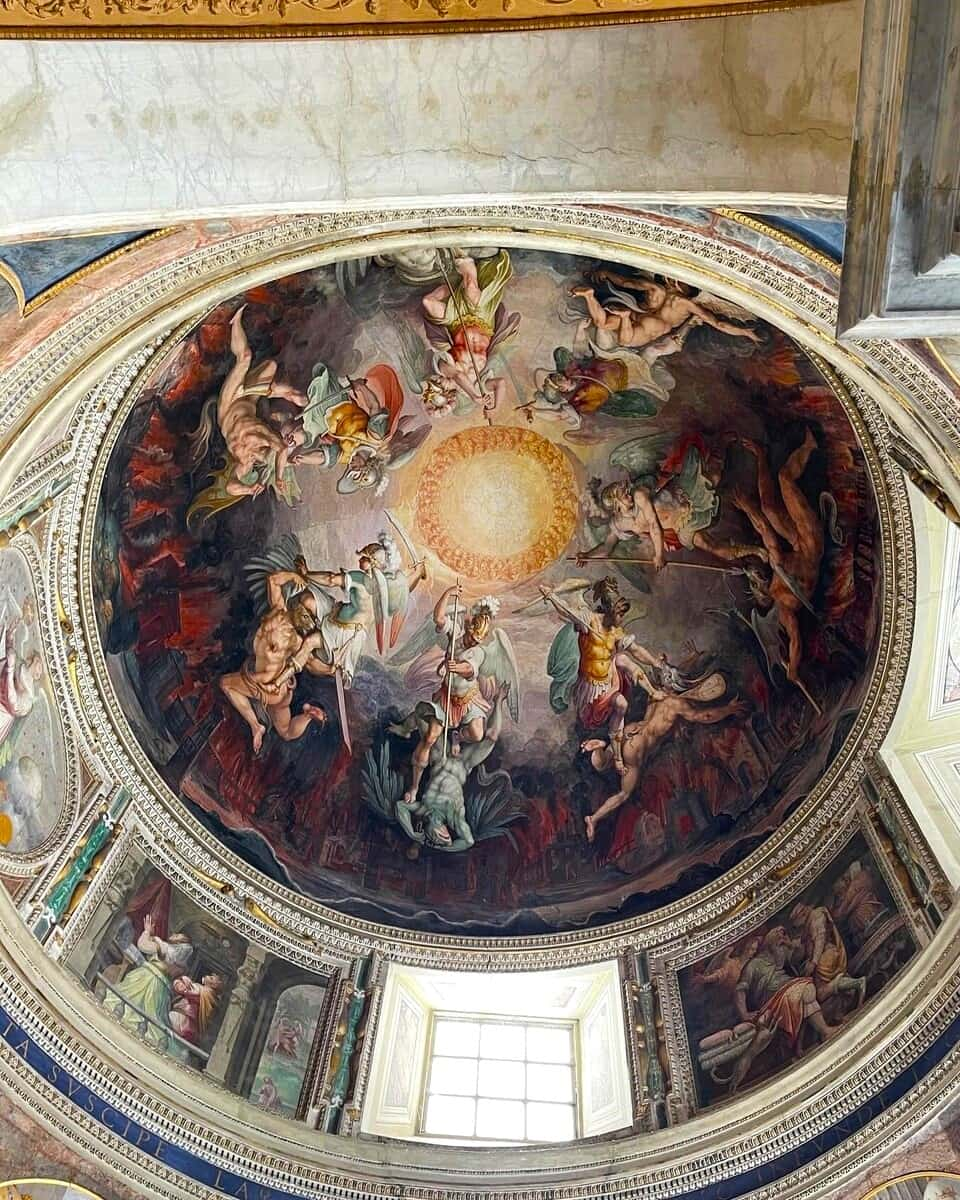
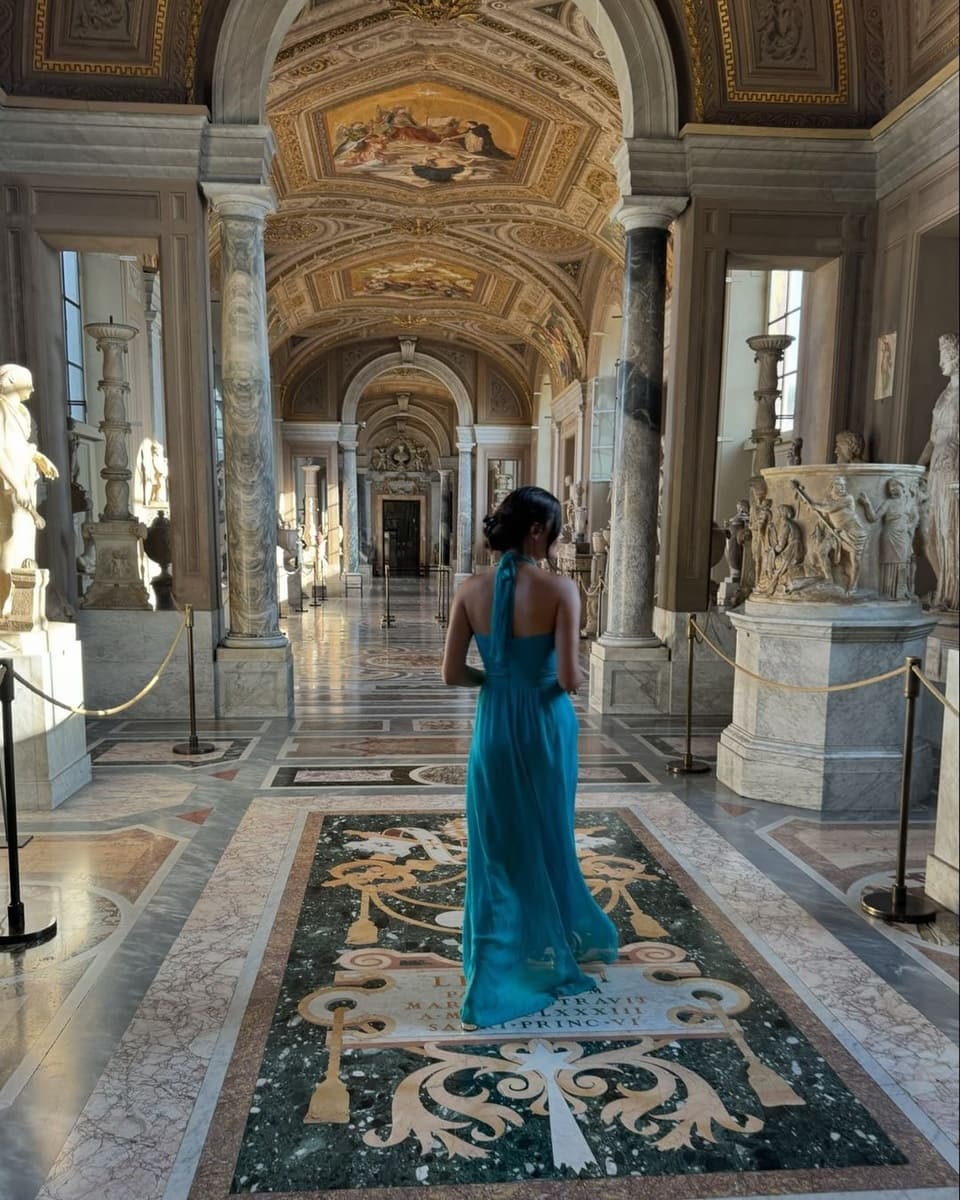
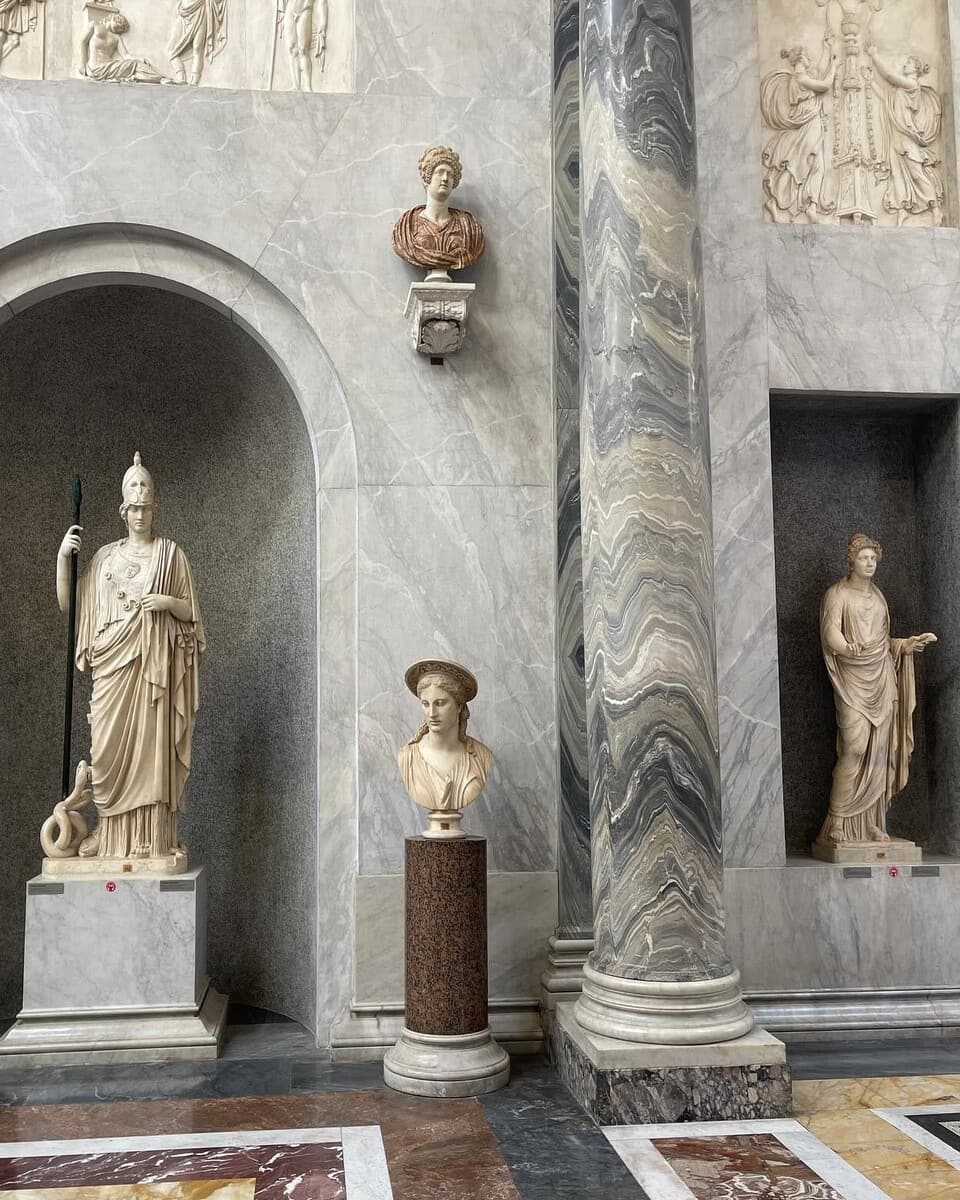
Symbolic Significance: Every detail in the Sistine Chapel carries meaning, from the Creation of Adam to the intricate stories of salvation history, making it the Vatican Museums’ most visited attraction.
Money Saver: Purchase a combined Vatican Museums and St. Peter’s Basilica ticket online to save both money and time in queues.
⭐ Best activities
- Tour: Vatican Museums, Sistine Chapel Tour – Discover the Vatican and the Sistine Chapel with a guide. Navigate the vast of halls, artwork, and history with a guide, who gives special insights into the collections.
- Ticket online: Vatican Museums & Sistine Chapel: Combo Tickets – Visiting the Vatican Museums and the Sistine Chapel will witness some of the world’s most stunning artworks, including Michelangelo’s breathtaking frescoes on the chapel’s ceiling. They will also explore masterpieces by Raphael, ancient sculptures, and the lavish halls of the Vatican Palace.
4. ⚰️ Vatican Necropolis (Scavi Tour)
Ancient Discovery: The Vatican Necropolis, lying beneath St. Peter’s Basilica, contains the burial site of St. Peter and remarkable Roman mausoleums dating back to the 2nd century. This underground city reveals ancient Roman streets and early Christian burial sites, preserved exactly as they were found.
Archaeological Wonder: The excavated necropolis showcases elaborate Roman tombs, pagan and Christian burial traditions, and the historical foundation of the Catholic Church. The tomb of St. Peter marks the exact spot where the first pope was buried.
Insider Tip: Book the exclusive Scavi tour at least 3 months in advance through the Scavi Office, as only 250 visitors are allowed daily.
⭐ Best activities
- Tour: Private Tour of Vatican with Scavi Necropolis – Discover the highlights of the Vatican Museums with ease during this private, half-day guided tour, which also includes an exclusive visit to ongoing excavations within the tomb of Saint Peter.
- Ticket online: St. Peter's Basilica, Dome & Necropolis: – Climb Rome’s famous dome with a guide and get optional time in the crypts.
5. 🕍 Papal Apartments and Living Quarters
Papal Splendor: The apostolic palace houses the official papal apartments, decorated with priceless artworks and historical furnishings. These rooms showcase the evolution of papal life through centuries of Vatican history.
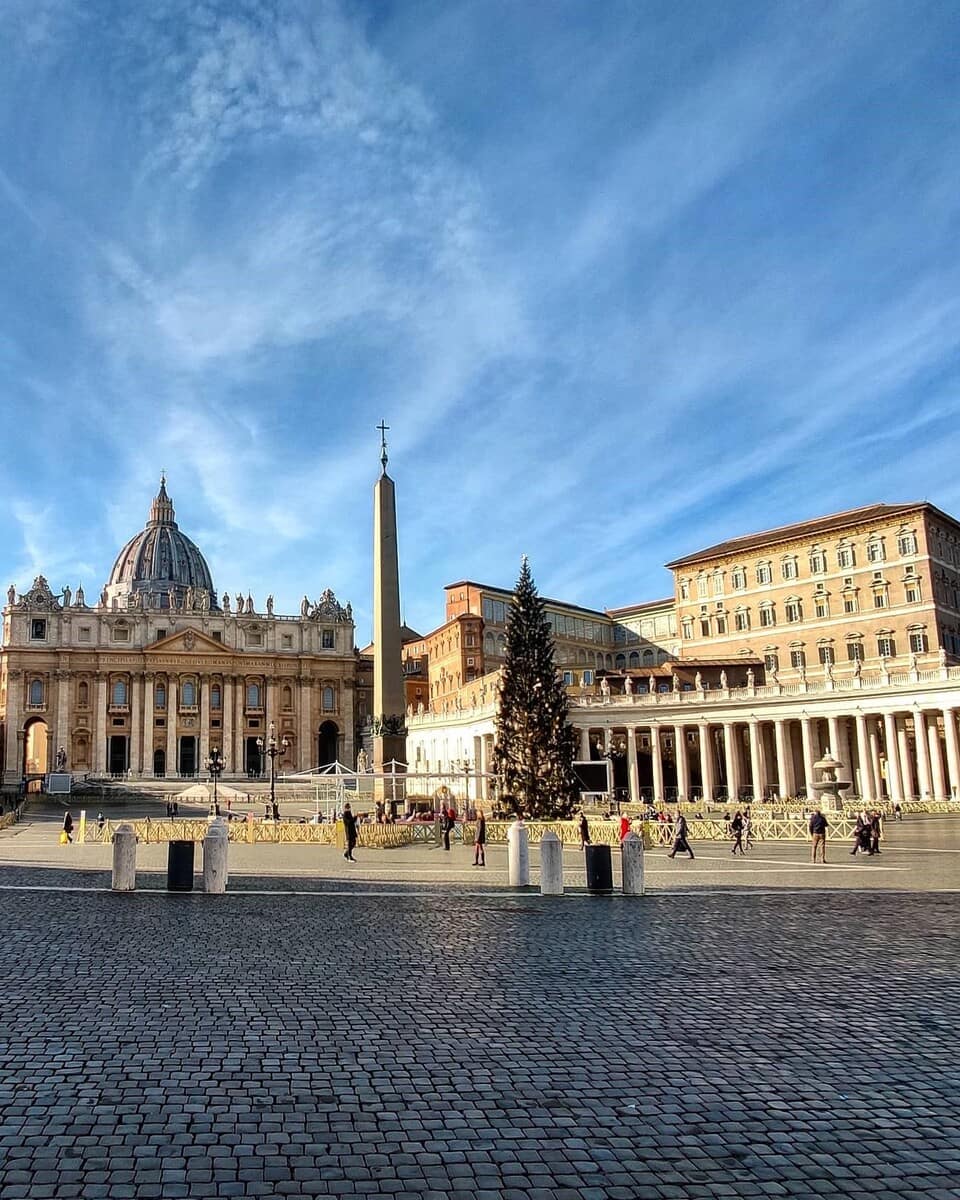
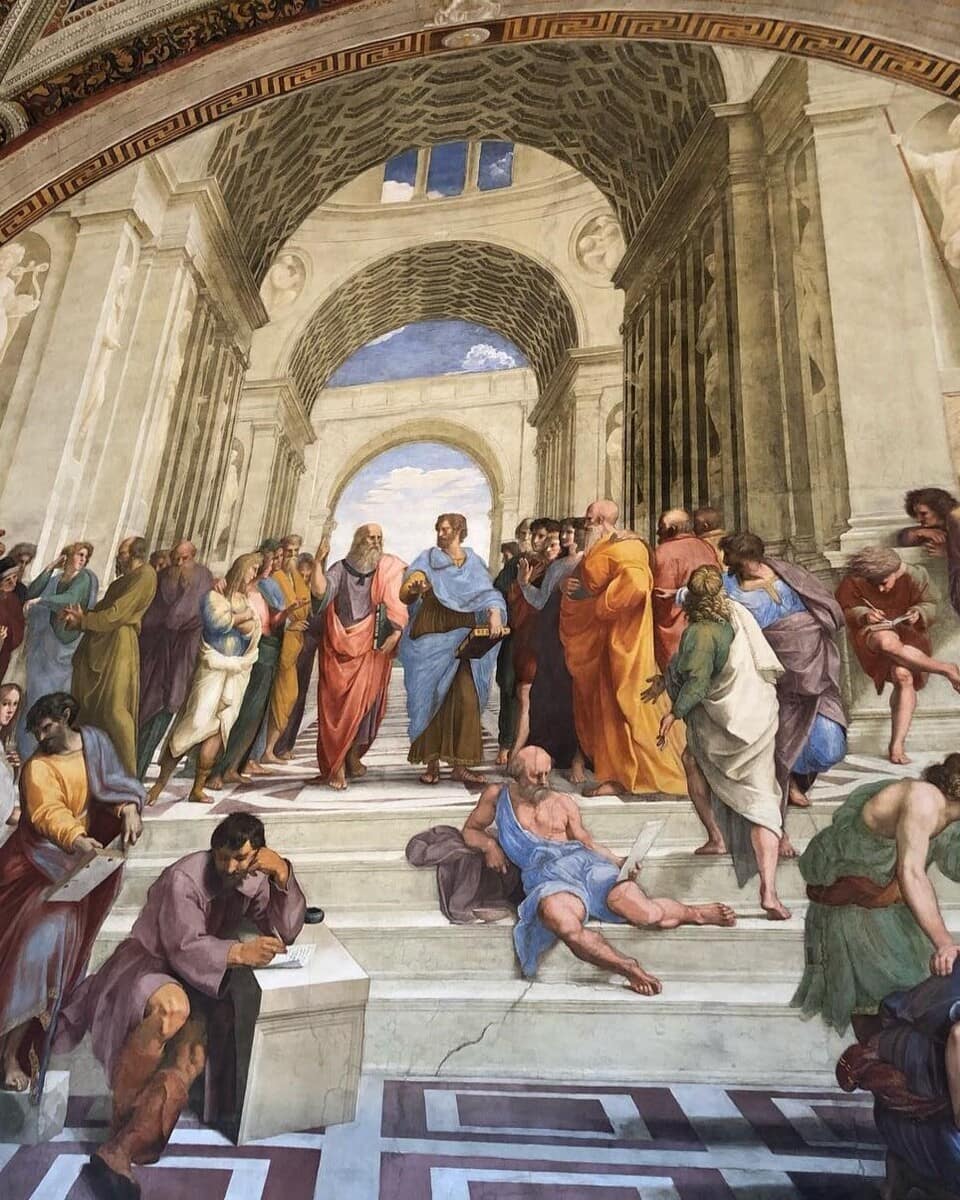
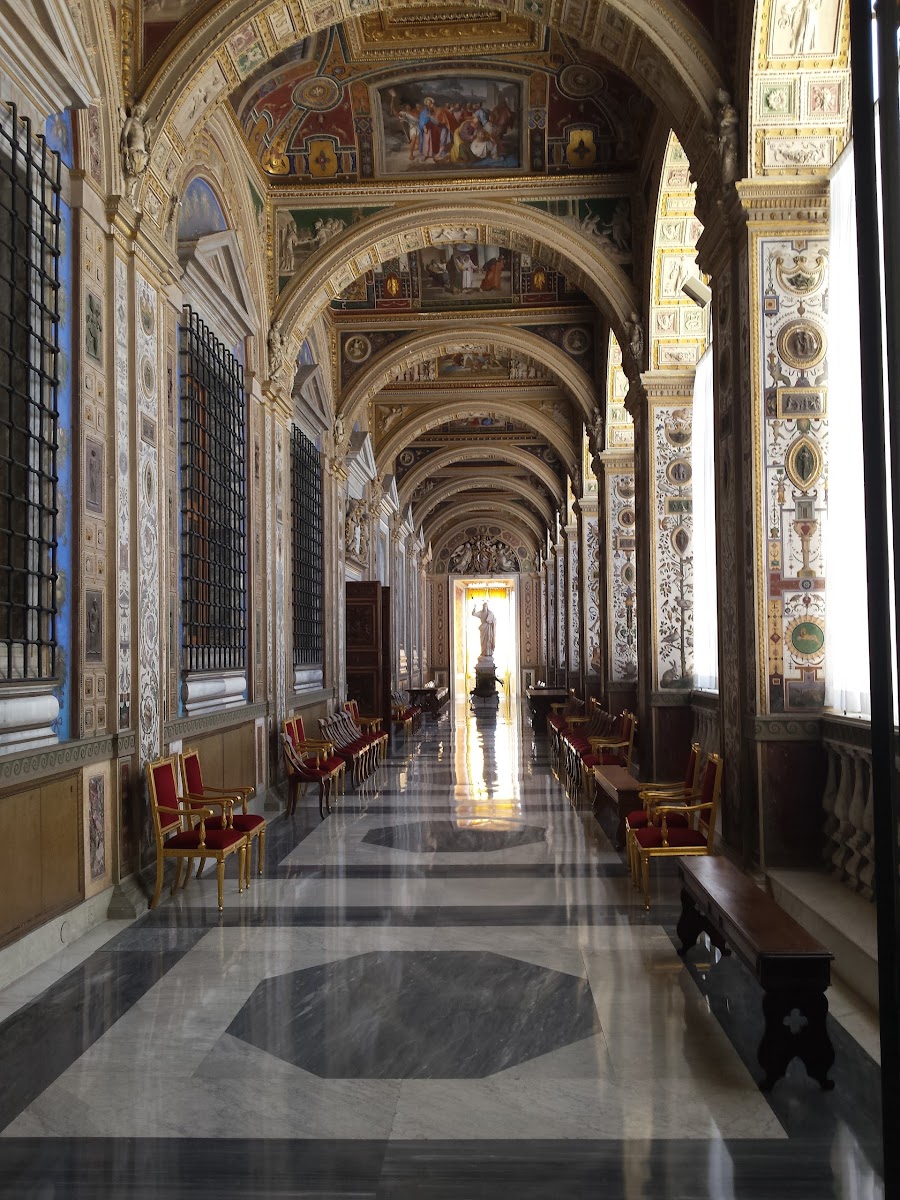
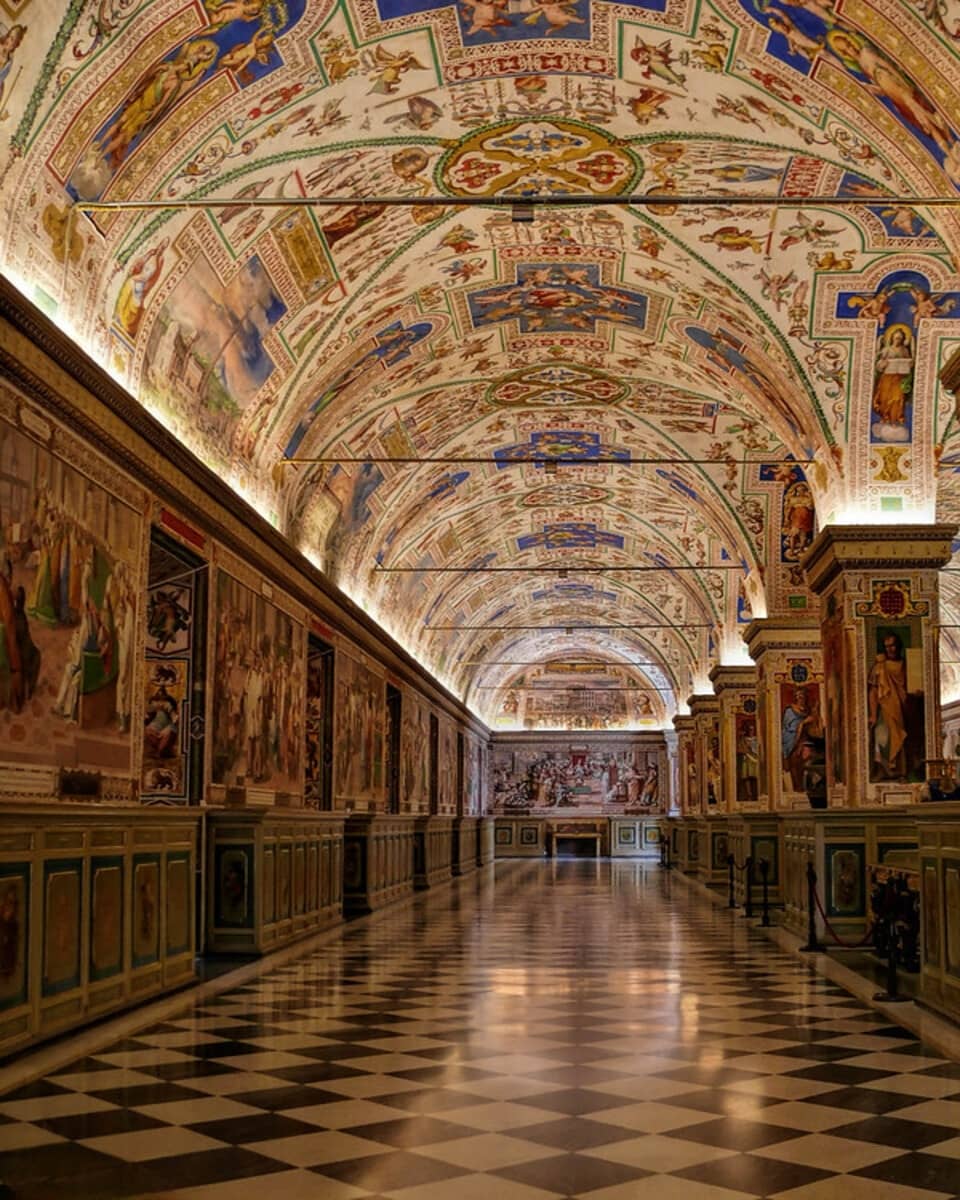
Historical Significance: The apartments include the private chapel of the popes and the famous loggia where newly elected pontiffs make their first appearance. Each room tells the story of different papal periods and artistic styles.
Time Saver: Book a VIP Vatican tour that includes access to normally restricted areas like the papal apartments.
⭐ Best activities
- Tour: Castel Gandolfo: Papal Apartments and Secret Garden Entry Ticket – Explore the Papal Apartments and the Secret Garden at Castel Gandolfo, the Pope’s summer residence. This self-guided tour allows you to wander through 500 years of history, from the private papal chambers to the lush gardens.
- Ticket online: Castel Gandolfo: Papal Apartments Ticket – Stroll through private gardens and enjoy the balcony views.
6. 💒 Apostolic Palace
Papal Residence: The Apostolic Palace, also known as the Papal Palace or Vatican Palace, serves as the official residence of the Pope. It contains several important rooms including the papal apartments, offices of church officials, and even private chapels like the Niccoline Chapel.
Artistic Legacy: Inside you’ll find some of Raphael’s most famous works commissioned by Pope Julius II. The palace also houses historical documents and precious artifacts from centuries past.
Insider Tip: Access to certain areas is restricted unless you book a special VIP tour that includes exclusive rooms within the palace.
⭐ Best tour
- Apostolic Palace Private Tour – You’ll travel out of the city by Mercedes vehicle for the ride to the museum, also known as the Apostolic Palace, where you’ll tour the interior to see rooms like the Music Room. Listening to narration while you enjoy views of the Alban Hills.
Things to Do in Vatican with Kids
1. 🖼️ Vatican Museums
Artistic Masterpieces: The Vatican Museums house one of the world’s most extensive art collections, including the Sistine Chapel, Raphael Rooms, and countless other treasures. Founded by Pope Julius II in 1506, the museums span over 9 miles of galleries, showcasing works from ancient Rome, Greece, and the Renaissance.
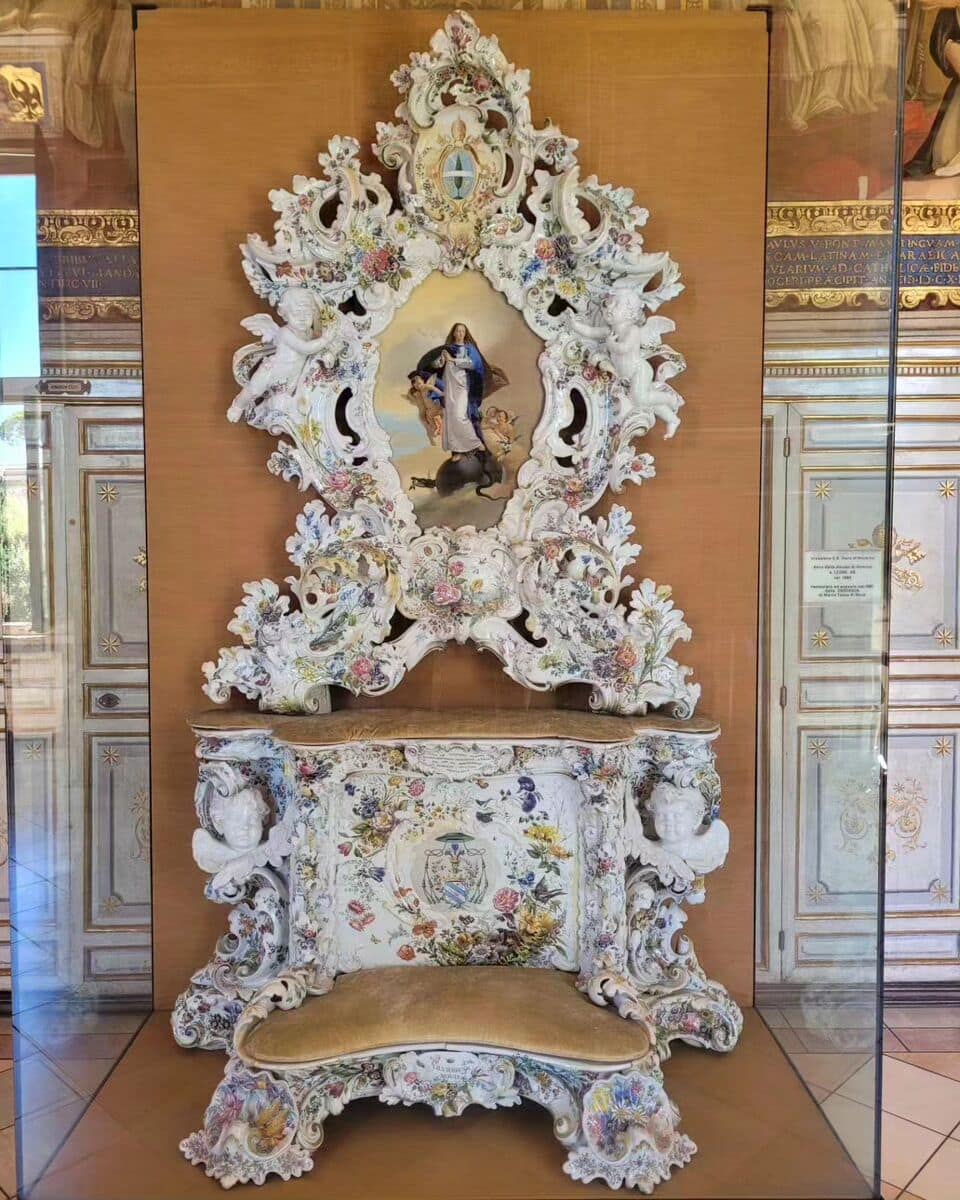
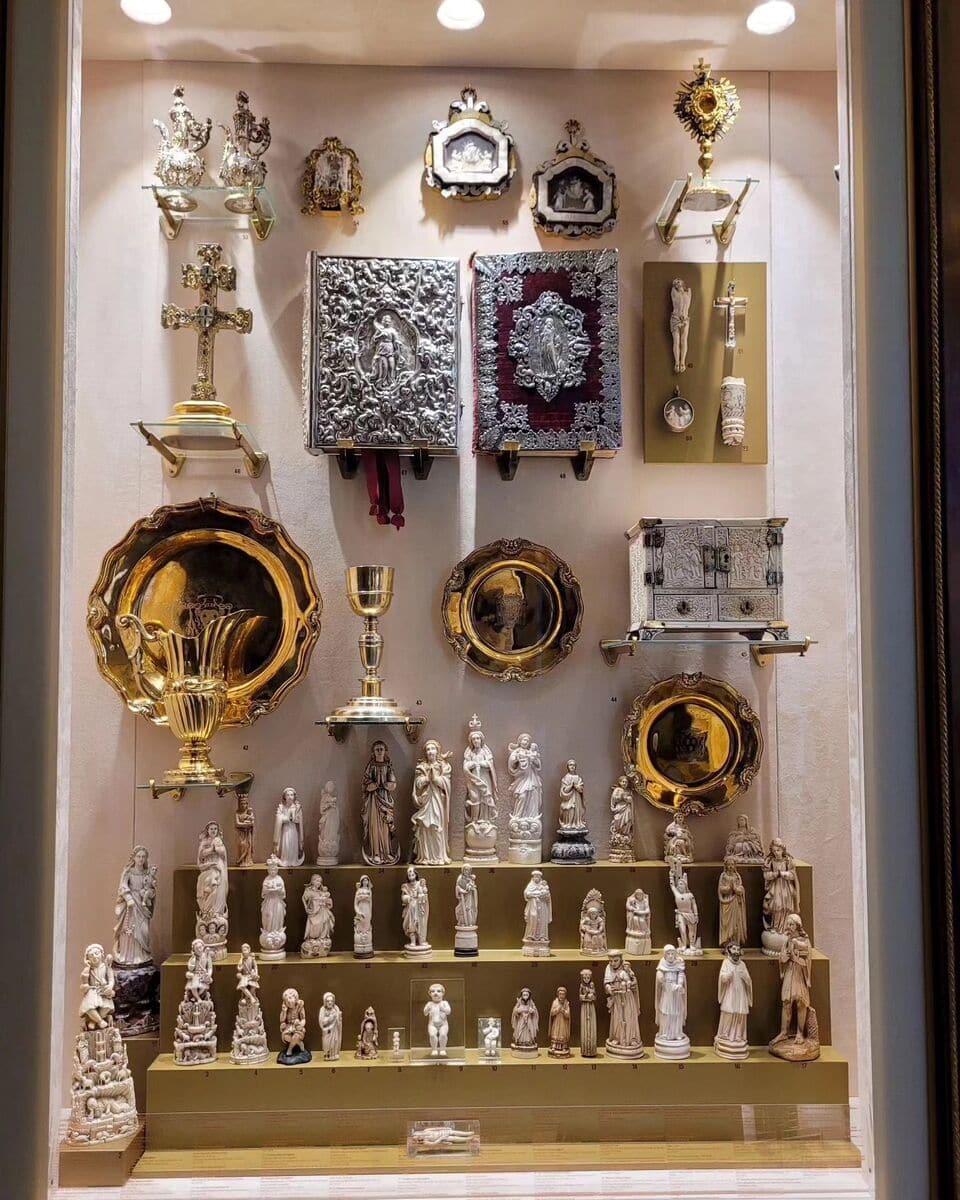
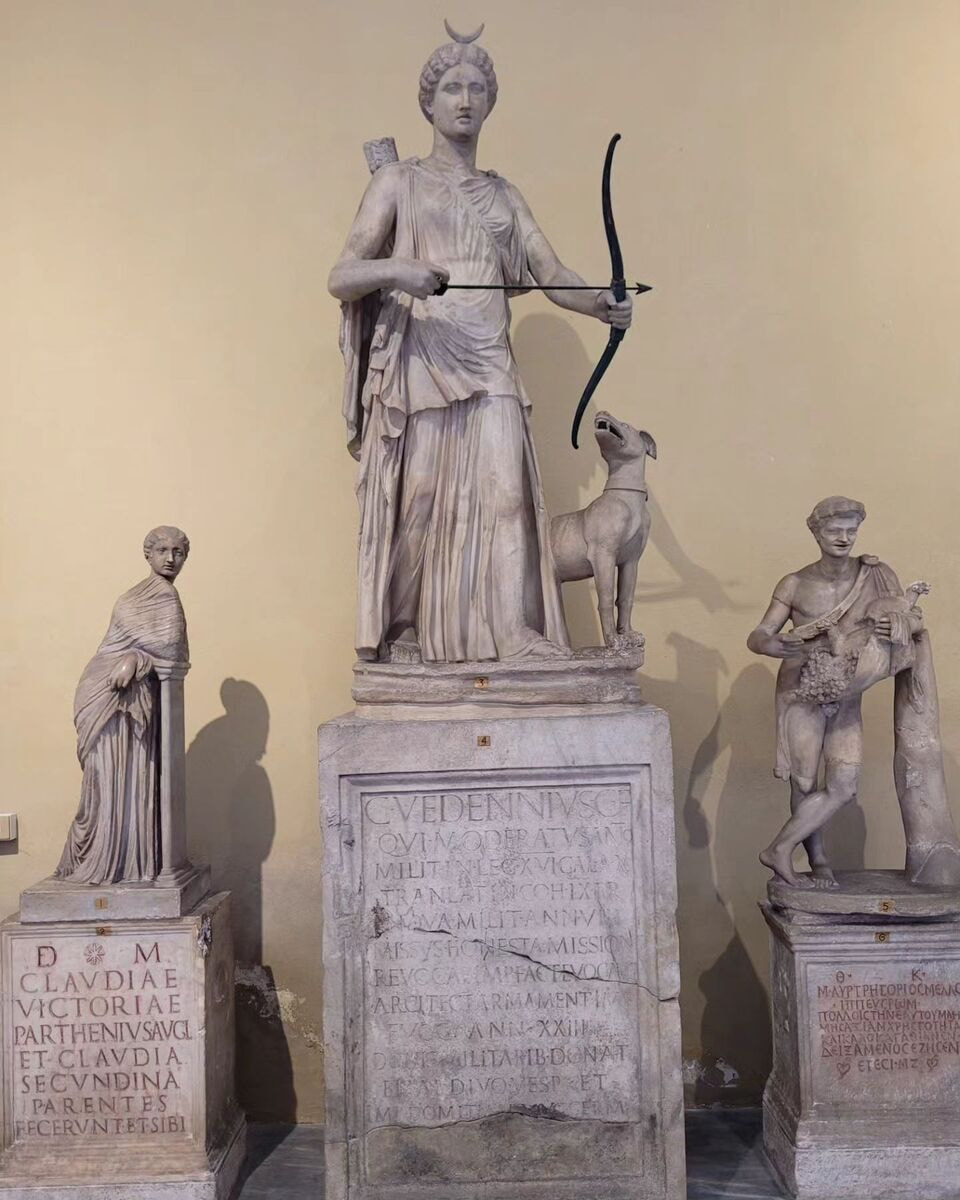
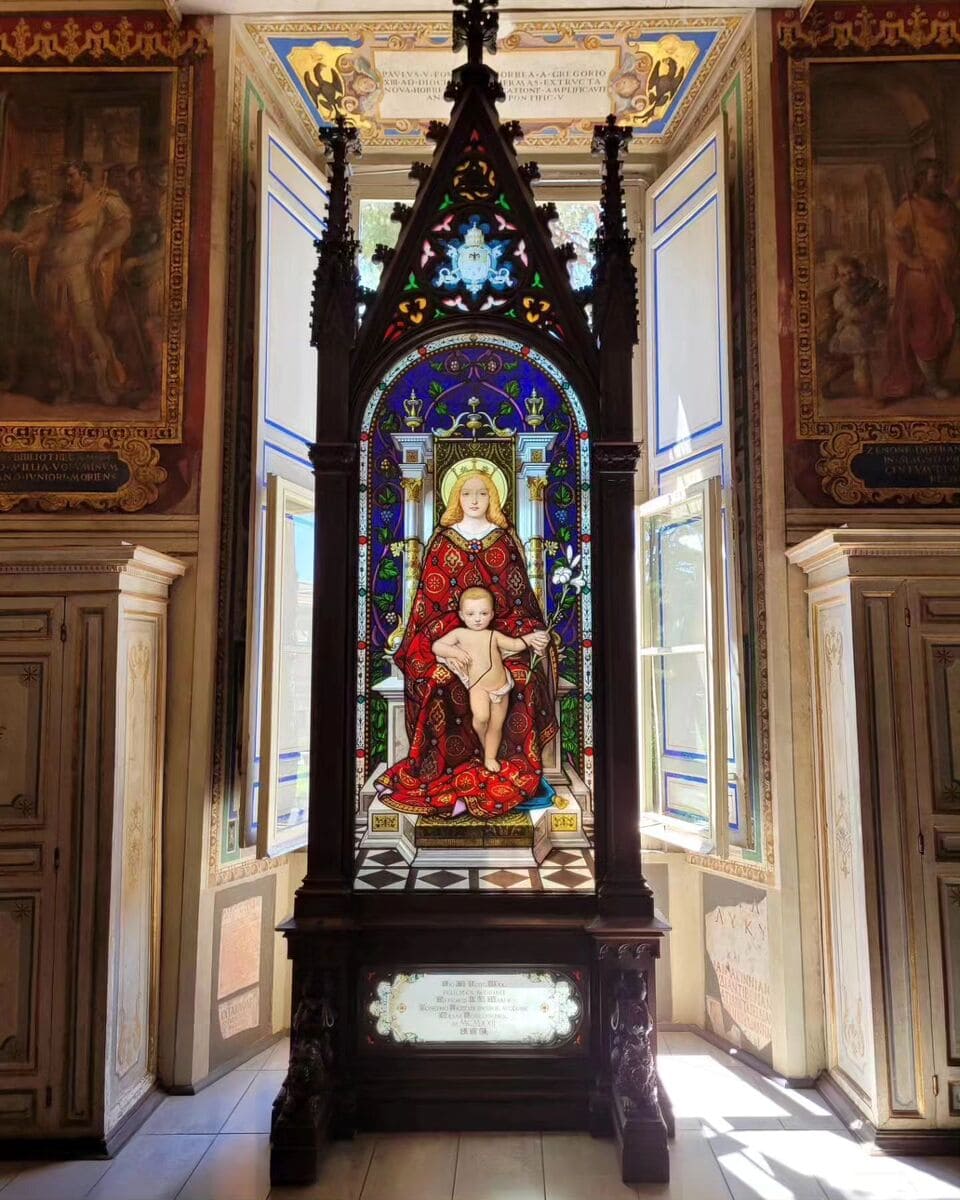
Cultural Significance: Among the highlights are Michelangelo’s frescoes in the Sistine Chapel and Raphael’s “School of Athens.” The museums also feature sculptures like Laocoön and His Sons and the Apollo Belvedere, both masterpieces of classical antiquity.
Time Saver: Book a guided tour of the Vatican Museums to skip long lines and gain deeper insights into its vast collections.
⭐ Best activities
- Tour: Vatican Museums, Sistine Chapel, St. Peter's Basilica Access – This Vatican Museums Skip-the-Line Tour is a great choice for first-time visitors and travelers that prefer to bypass the long lines that the Vatican can attract.
- Ticket online: Vatican Museums & Sistine Chapel: Ticket – Explore the magnificent Vatican Museums, home to an extensive collection of art and historical artifacts. The highlight of the tour is the breathtaking Sistine Chapel, featuring Michelangelo’s famous frescoes.
2. 🌿 Vatican Gardens
Natural Sanctuary: The Gardens of Vatican City offer a peaceful retreat within the bustling city-state. Spanning 57 acres, these gardens are filled with lush greenery, fountains, and sculptures, providing a glimpse into the Pope’s private sanctuary.
Historical Roots: Established in 1279 by Pope Nicholas III, these gardens have evolved over centuries and now feature Renaissance and Baroque landscaping styles. Visitors can explore areas like the Giardino Quadrato and Casina Pio IV, which are usually off-limits to the public.
Insider Tip: Access to the gardens is only available through a guided tour, so book early to secure your spot.
⭐ Best activities
- Tour: Vatican Museums and Gardens Private Tour – Make the most of your time in the Vatican City on a private tour of some of its highlights. After a handy hotel pickup from central Rome, start by admiring the vast dome of St. Peter’s Basilica and the artworks inside. Then, explore the tree-lined pathways of the immaculate Vatican Gardens.
- Ticket online: Vatican Museums: Fast Track Ticket – Get more out of your trip to Rome and Vatican City!
3. ⚜️ Pio-Clementine Museum
Classical Treasures: The Pio-Clementine Museum, founded by Pope Clement XIV in 1771, is renowned for its collection of ancient Greek and Roman sculptures. The museum’s centerpiece is the Octagonal Courtyard, home to iconic statues like Laocoön and His Sons and the Apollo Belvedere.

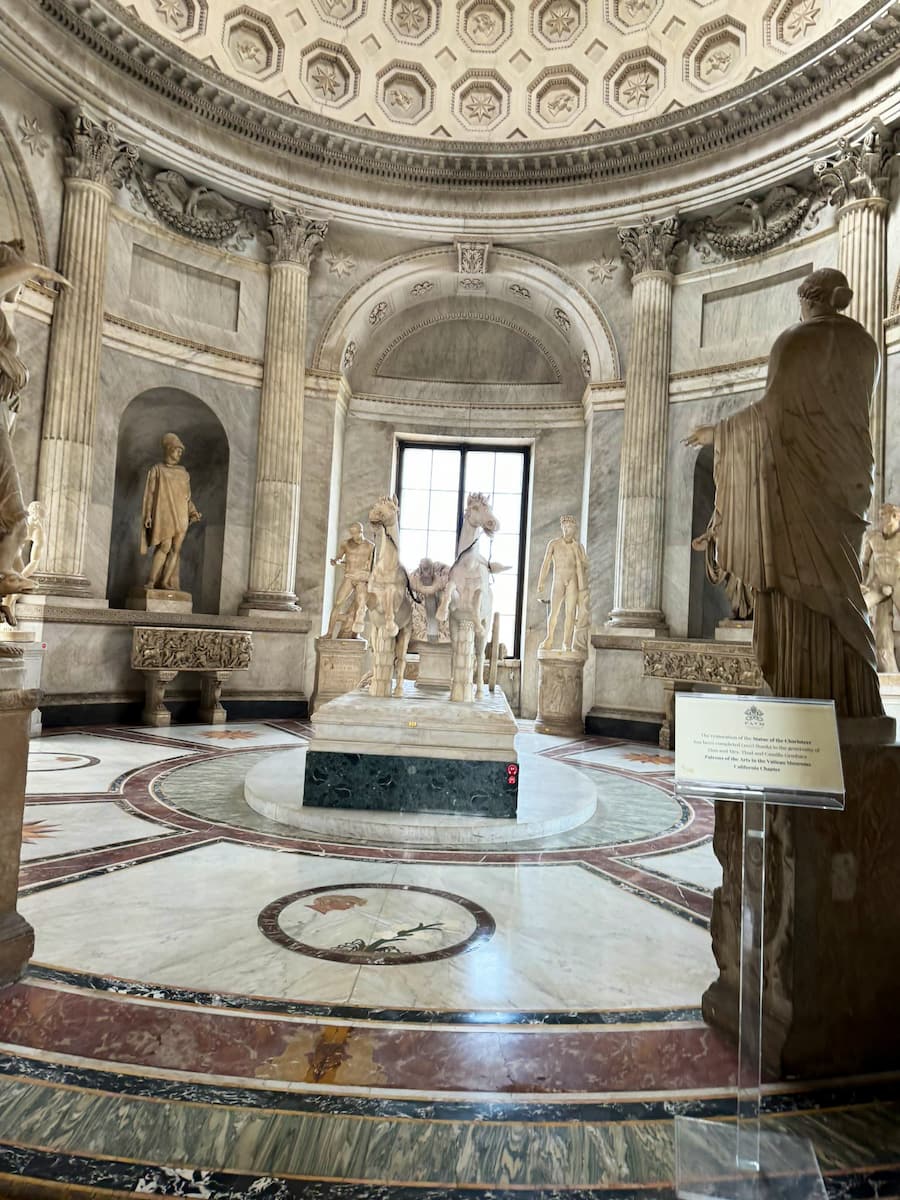
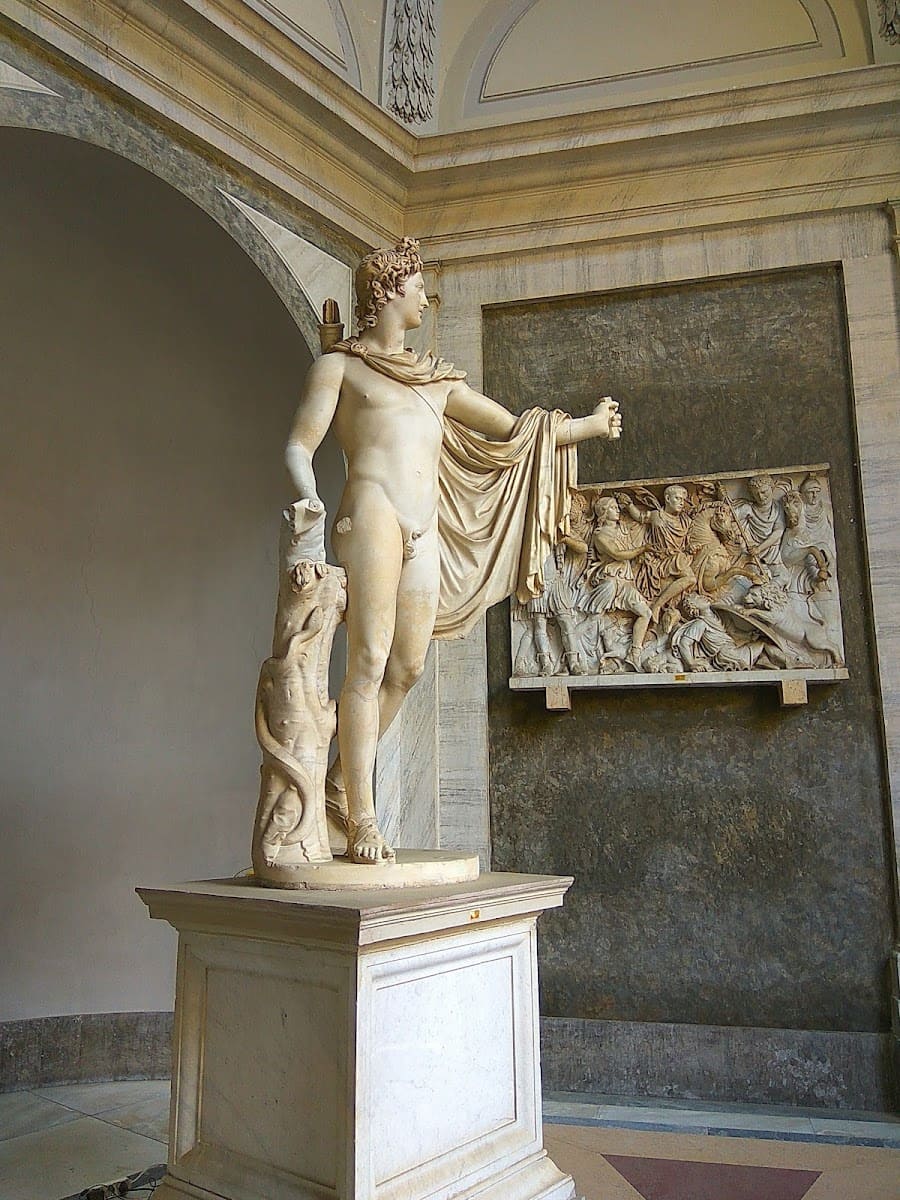
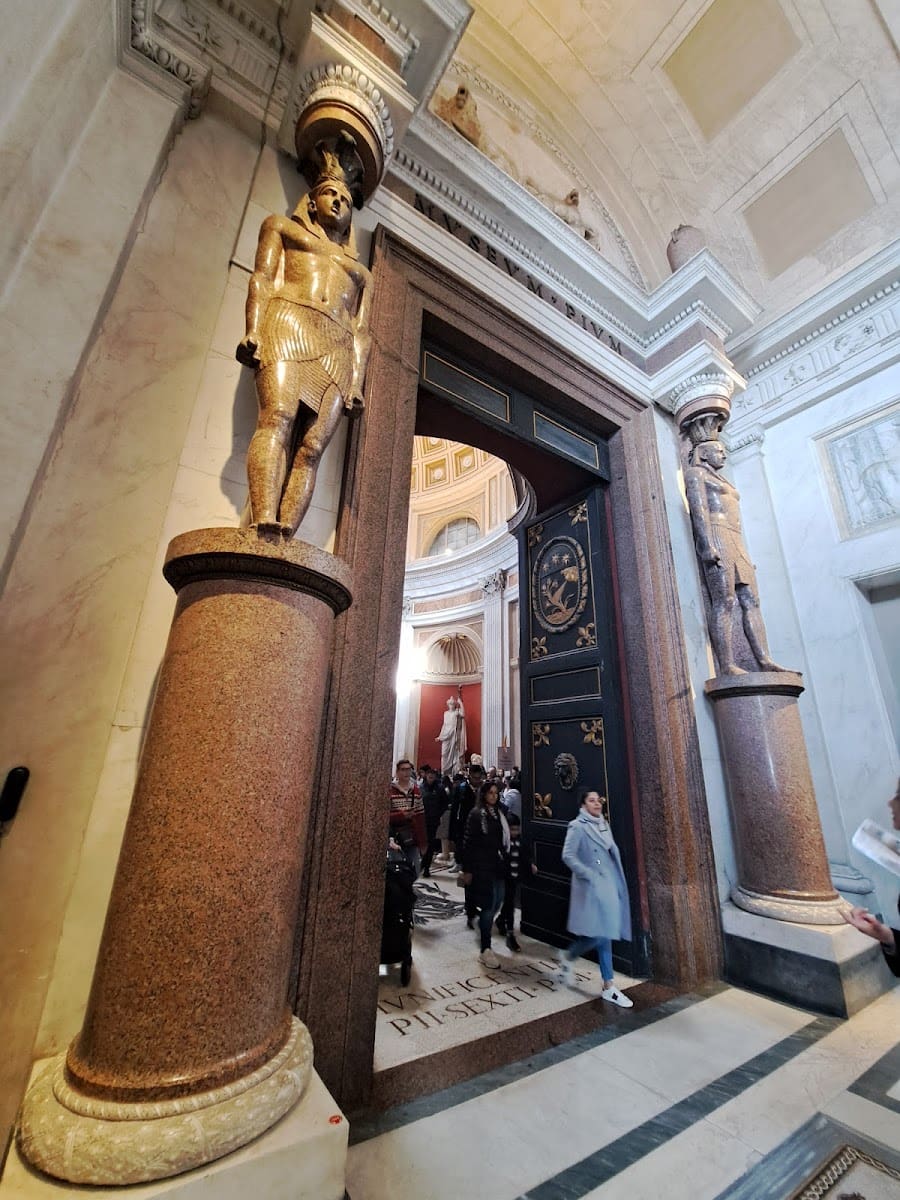
Architectural Marvels: The museum also features Nero’s Bathtub, an enormous red porphyry basin that reflects ancient Roman opulence. Each room is an architectural masterpiece, blending neoclassical design with papal history.
Top Tip: Visit early in the morning to avoid crowds at this popular museum within the Vatican complex.
⭐ Best activities
- Tour: Vatican Museums and Gardens Private Tour – Make the most of your time in the Vatican City on a private tour of some of its highlights. After a handy hotel pickup from central Rome, start by admiring the vast dome of St. Peter’s Basilica and the artworks inside. Then, explore the tree-lined pathways of the immaculate Vatican Gardens.
- Ticket online: Vatican Museums Ticket – Enter the Vatican Museums and Sistine Chapel with a skip-the-line ticket. See the artworks at Belvedere Torso, the Gallery of Maps, and other areas by famous artists like Michelangelo, and more.
4. 🏺 Chiaramonti Museum
Roman Portraits: The Chiaramonti Museum, established by Pope Pius VII in 1806, houses over 1,000 Roman sculptures, busts, and reliefs. It’s one of the most significant collections of Roman portraiture in existence.
Historic Restoration: After Napoleon seized many Vatican treasures, this museum was part of an effort to restore lost artworks. Sculptor Antonio Canova played a key role in curating this collection, ensuring that even minor works are displayed alongside masterpieces for comparison.
Money Saver: Entry to this museum is included with your Vatican Museums ticket—no need for an extra pass!
⭐ Best tour
- Vatican Museums and Gardens Private Tour – Discover some of the greatest artworks ever created in the Vatican Museums on an early morning tour with skip-the-line entry on this tour designed for visitors short on time.
5. 📜 Gregorian Egyptian Museum
Ancient Civilizations: Founded by Pope Gregory XVI in 1839, the Gregorian Egyptian Museum houses artifacts from ancient Egypt brought to Rome during imperial conquests. Its nine rooms contain mummies, statues of pharaohs, and even parts of Hadrian’s Villa from Tivoli.
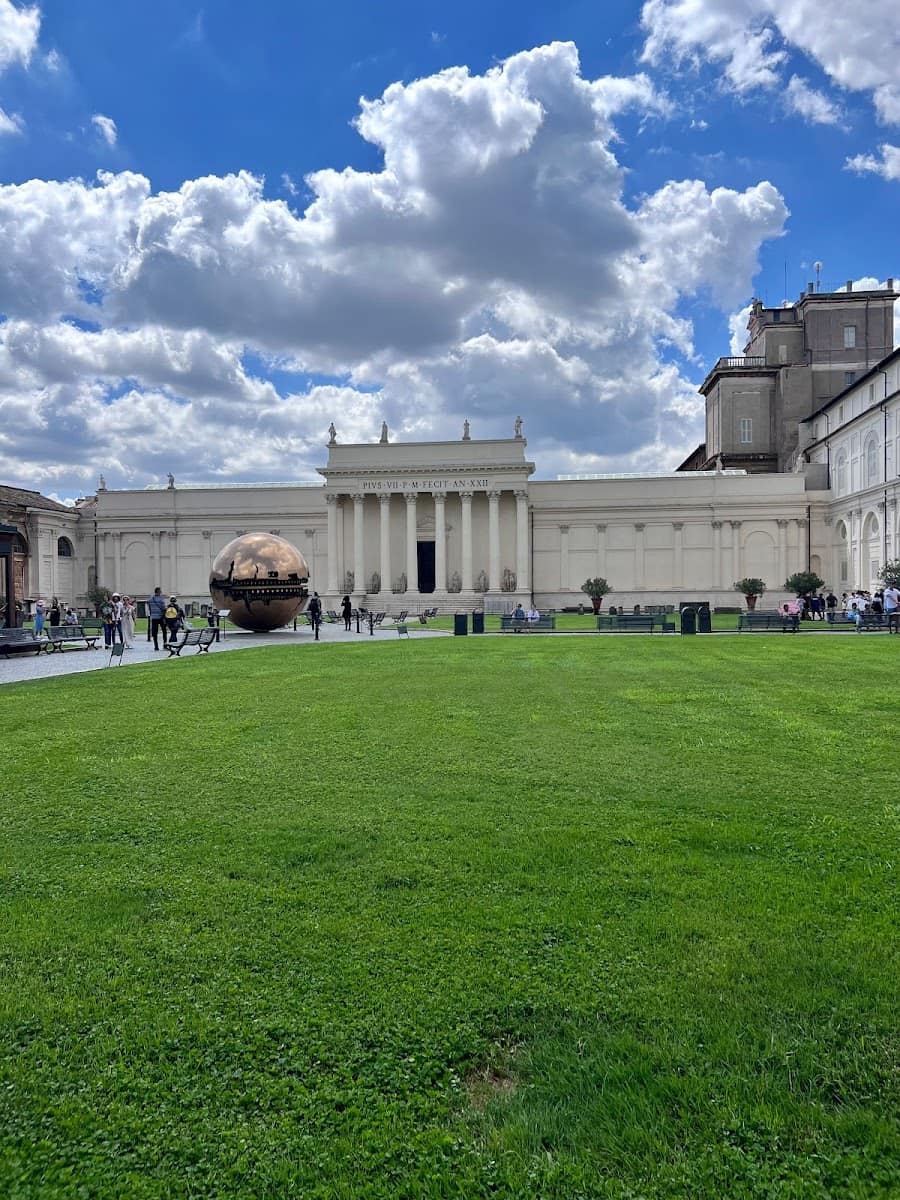
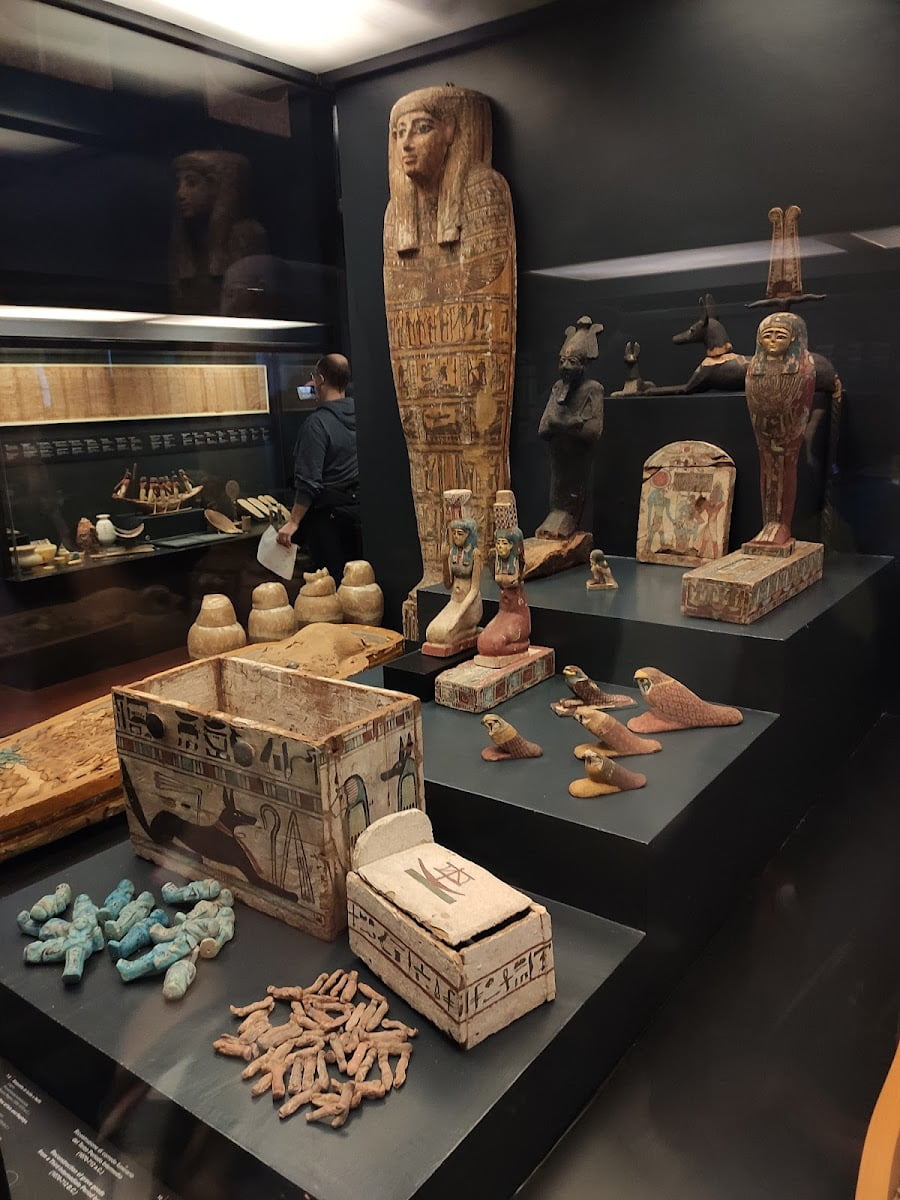
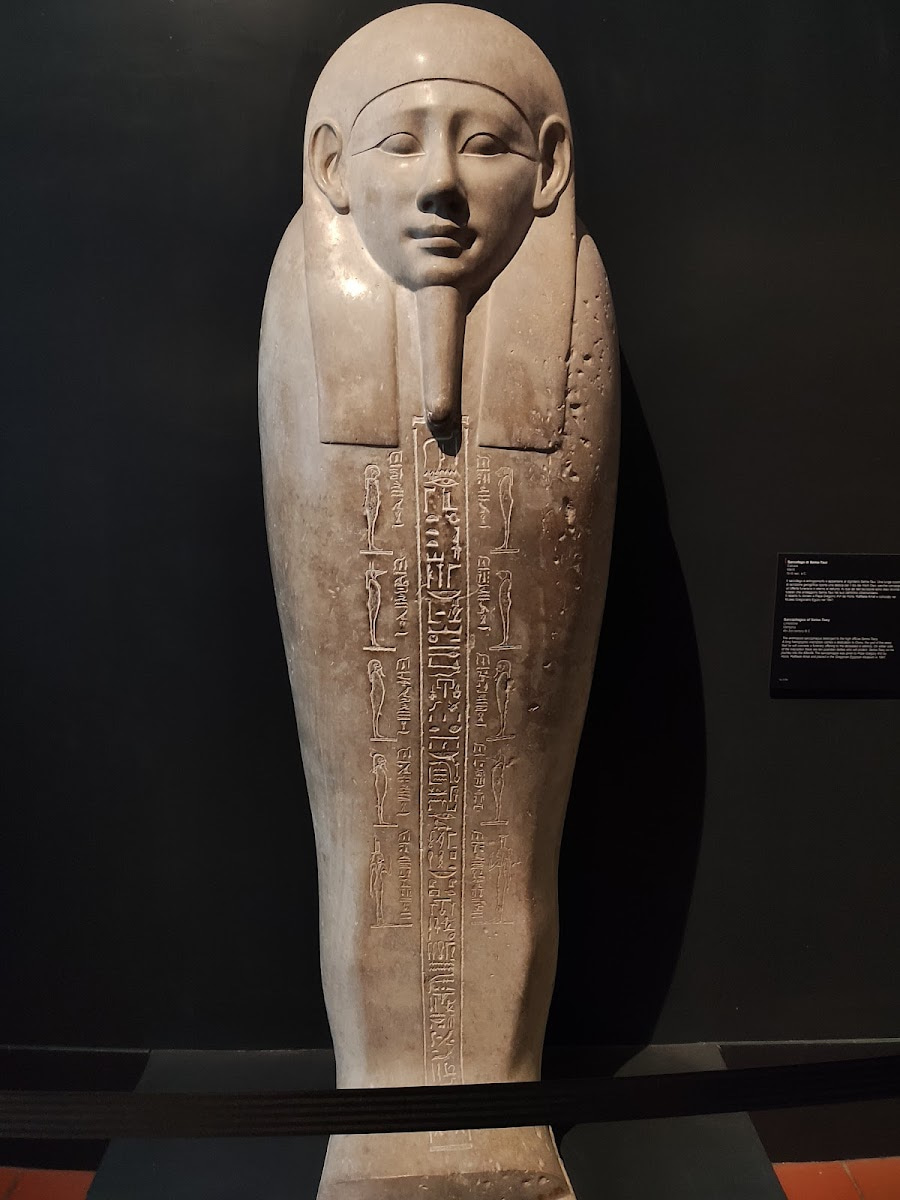
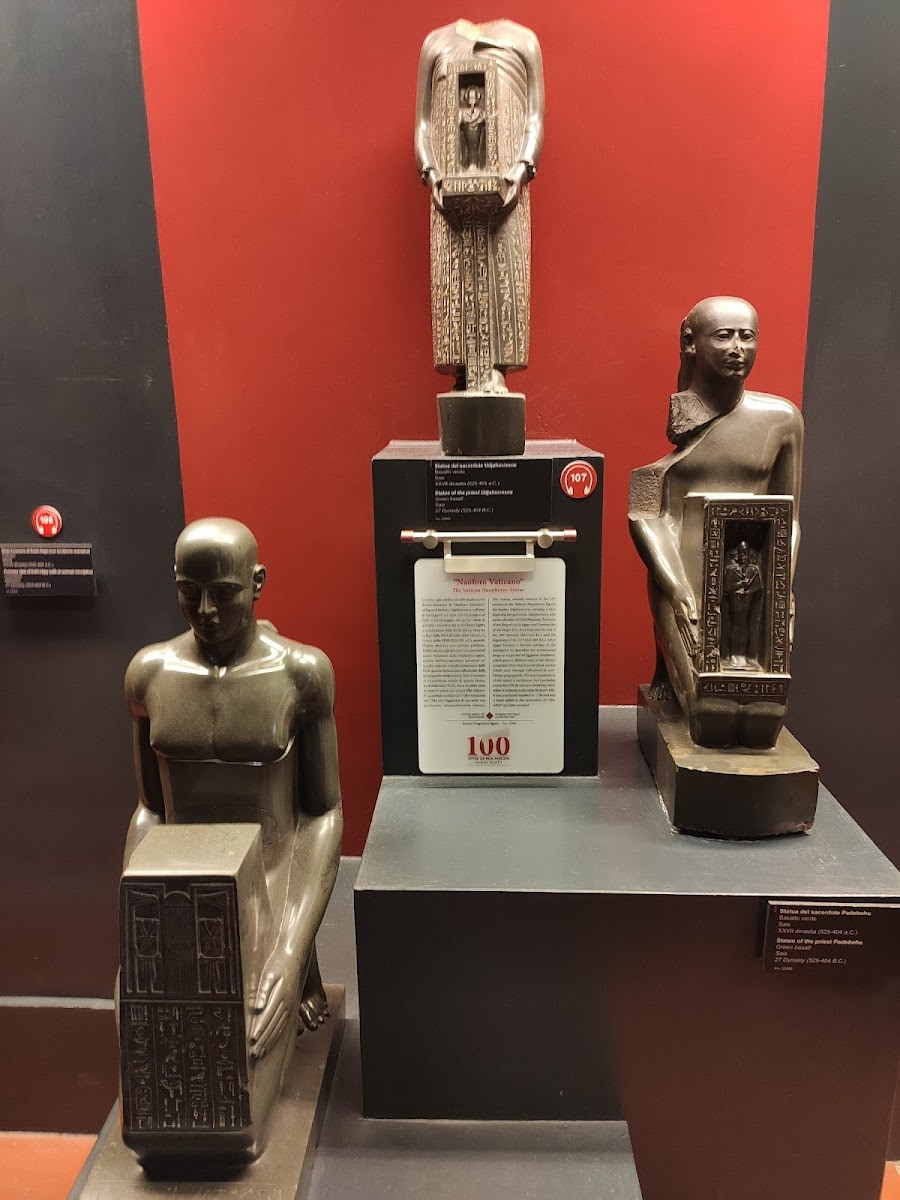
Cultural Exchange: The museum highlights Egypt’s influence on Roman culture through its collection of hieroglyphic inscriptions and religious artifacts. One standout piece is a reconstruction of Hadrian’s Serapeum from his villa at Tivoli.
Time Saver: Combine your visit with other sections of the Vatican Museums for a full day exploring ancient civilizations within one complex!
⭐ Best tour
- Vatican City: Early Morning Vatican Tour Entrance Tickets – Gaining entrance to one of the Worlds most visited museums may seem a bit daunting, with our Fast-Track escorted entrance, you’ll be able to avoid the inevitable queues & jump straight into the action.
Free Things to Do in Vatican City
1. ⛪ Piazza San Pietro
Architectural Symphony: Bernini’s magnificent colonnade embraces visitors in what he called “the maternal arms of the church.” The vast piazza created according to the project in 1656 and 1667, with its central Egyptian obelisk and twin fountains, creates the perfect entrance to St. Peter’s Basilica.
Sacred Space: The piazza hosts papal audiences and major celebrations throughout the year, accommodating up to 300,000 people. The Swiss Guards in their colorful Renaissance uniforms add to the unique atmosphere.
Ancient Symbolism: The towering obelisk technically located at the center of St. Peter’s Square was brought from Egypt by Emperor Caligula in 37 AD. Standing at 25.5 meters tall, it has witnessed centuries of history, including papal coronations and public blessings.
Top Tip: Visit St. Peter’s Square early in the morning or late afternoon for stunning photos without large crowds.
2. 🌉 Passetto di Borgo
Secret Passage: This elevated fortress corridor, built in 1277, connects the Vatican to Castel Sant’Angelo, serving as an escape route for popes during times of danger. Emperor Hadrian’s massive fortress-turned-museum offers spectacular views of St. Peter’s dome.
Historical Drama: The passetto played a crucial role during the Sack of Rome in 1527, when Pope Clement VII used it to flee to safety. Today, it stands as a testament to medieval Vatican defense systems.
Top Tip: Visit Castel Sant’Angelo in the late afternoon to catch the sunset over St. Peter’s Basilica and the Tiber River.
Seasonal Activities in Vatican City
🌸 Spring (March – May)
Easter Celebrations (Dates Vary): Spring in Vatican City is synonymous with Easter, one of the most significant religious events in the Christian calendar. Holy Week begins with Palm Sunday Mass at Piazza San Pietro, followed by Good Friday’s Via Crucis at the Colosseum, led by Pope Francis. The highlight is Easter Sunday Mass in St. Peter’s Square, where thousands gather to receive the Pope’s Urbi et Orbi blessing.
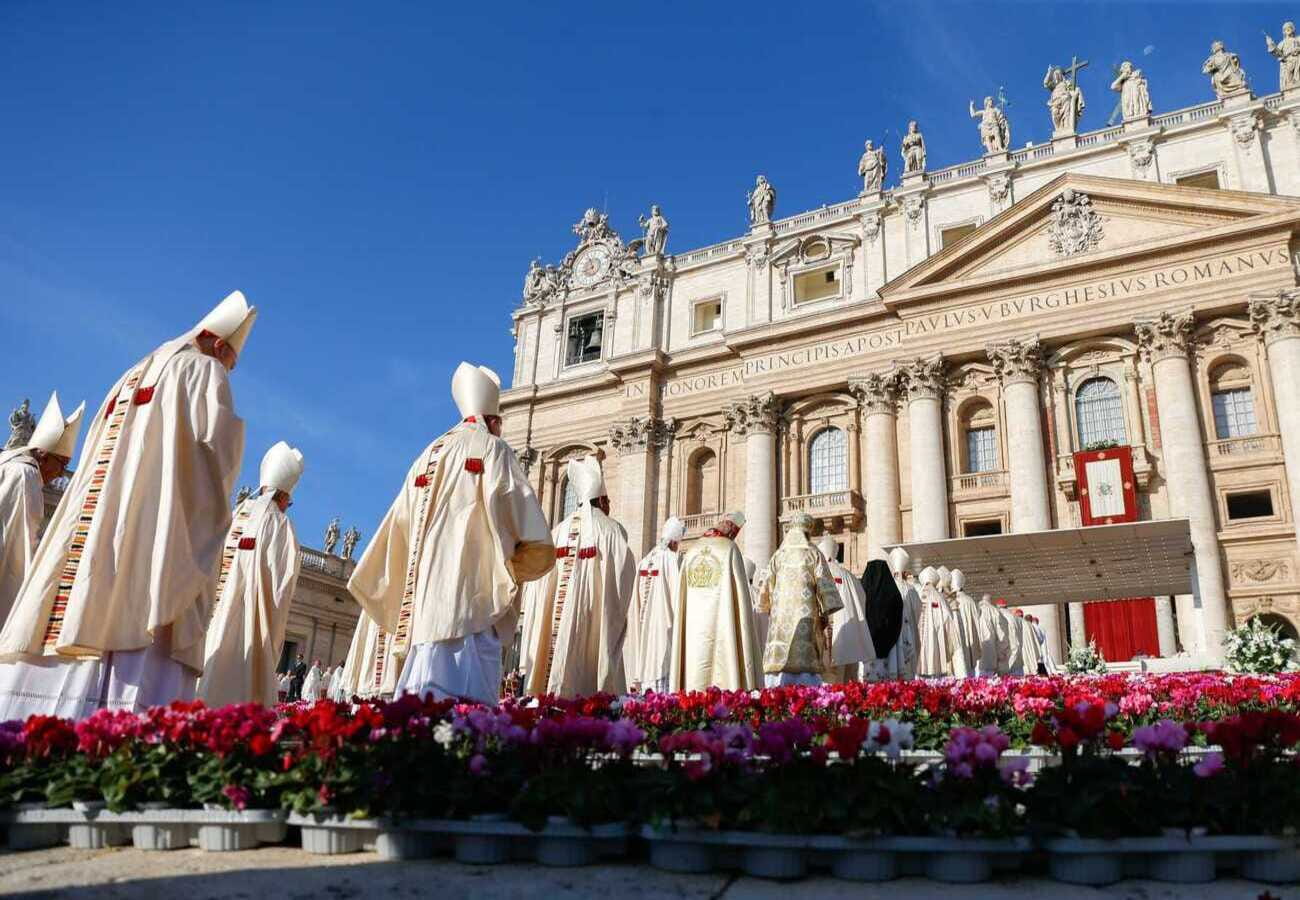
Cultural Awakening: Spring also marks the reopening of the Vatican Gardens for guided tours, offering visitors a chance to explore the lush greenery and hidden corners of this sacred space. The Gallery of Maps and Raphael Rooms are particularly stunning with natural light streaming through during this season.
Top Tip: Book your tickets for Easter Mass months in advance, as they are free but limited. Arrive early on Easter Sunday to secure a good spot in St. Peter’s Square.
☀️ Summer (June – August)
Summer Evening Tours (Every Friday from May to October): During summer, the Vatican Museums extend their hours, offering evening tours every Friday from 7 PM to 11 PM. This is a perfect opportunity to explore the Sistine Chapel, Raphael Rooms, and Gallery of Maps without the daytime crowds.
Feast of Saints Peter and Paul (June 29): This annual festival celebrates the patron saints of Rome with special Masses at St. Peter’s Basilica and processions through Vatican City. The event draws pilgrims from around the world and includes a papal blessing.
Time Saver: Visit the Vatican Museums during these extended hours for a quieter experience. Tickets must be booked in advance as evening slots are limited.
🍂 Autumn (September – November)
Autumn Tranquility: Autumn brings cooler temperatures and fewer tourists, making it an ideal time to explore Vatican City at a more leisurely pace. The Vatican Necropolis (Scavi Tour) is especially popular during this season, offering an underground journey through ancient Roman streets beneath St. Peter’s Basilica.
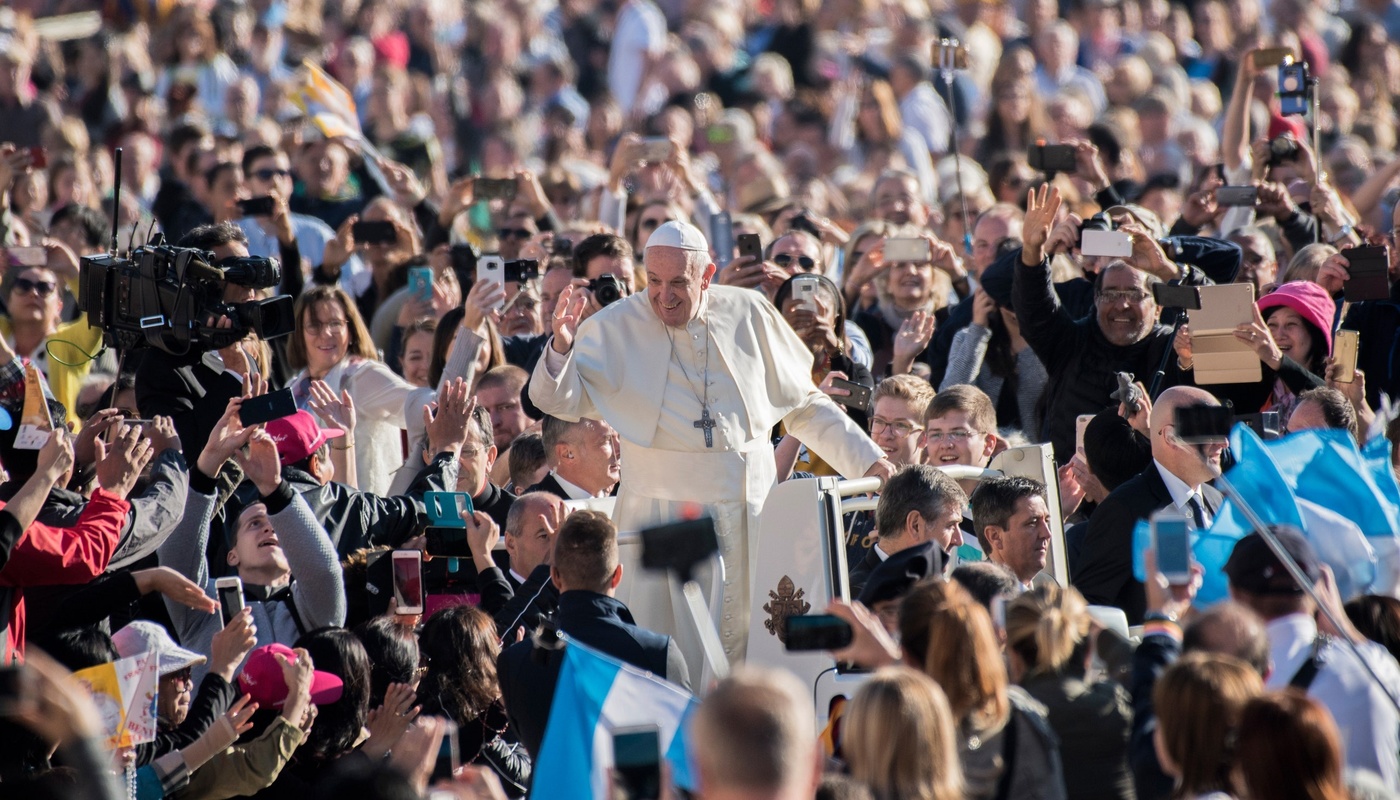
Papal Audience (Wednesdays): Though available year-round, autumn offers a more relaxed atmosphere for attending a Wednesday papal audience in St. Peter’s Square or within the Apostolic Palace. Fewer crowds make it easier to get closer to Pope Francis during his weekly address.
Insider Tip: Book your Scavi Tour well in advance as only 250 visitors are allowed per day, and autumn slots tend to fill up quickly due to increased interest.
❄️ Winter (December – February)
Christmas Celebrations (December 24 – January 6): Winter transforms Vatican City into a festive wonderland with its famous Christmas tree and Nativity scene in Piazza San Pietro. The highlight is Midnight Mass on Christmas Eve, celebrated by Pope Francis at St. Peter’s Basilica. The Christmas season extends until Epiphany on January 6, with special ceremonies throughout this period.
New Year’s Eve & Day Masses (December 31 – January 1): Ring in the New Year with traditional Masses at St. Peter’s Basilica on both New Year’s Eve and New Year’s Day. These celebrations include prayers for peace and blessings for the coming year.
Money Saver: Attend Christmas Eve Mass for free by requesting tickets months ahead through the Prefecture of the Papal Household. Be sure to dress warmly as winter nights can be chilly even inside St. Peter’s Basilica.
Day Trips from Vatican City
1. 🏰 Castel Sant’Angelo
Historical Fortress: Originally built as a mausoleum for Emperor Hadrian in AD 139, Castel Sant’Angelo later became a fortress and residence for popes during times of crisis. Today it serves as a museum showcasing military artifacts and Renaissance art.
Secret Passageway: One of its most intriguing features is the Passetto di Borgo, a hidden corridor connecting Castel Sant’Angelo to Vatican City. This passage was used by Popes to escape during sieges or attacks on Rome.
Top Tip: Visit Castel Sant’Angelo during sunset for breathtaking views over Rome and St. Peter’s Basilica from its terrace.
⭐ Best tour
- Castel Sant'Angelo National Museum – Explore the Castel Sant’Angelo National Museum, originally built as a mausoleum for Emperor Hadrian and later transformed into a fortress and papal residence. This tour takes you through its rich history, from ancient Rome to the Renaissance, with highlights including the Passetto di Borgo, papal apartments, and breathtaking views of St. Peter’s Basilica from the top terrace.
2. ⛲ Trevi Fountain Area
Roman Splendor: Just a short walk from Vatican City, the iconic Trevi Fountain represents the pinnacle of Baroque fountain design. The surrounding historic district offers excellent shopping and authentic Roman restaurants.
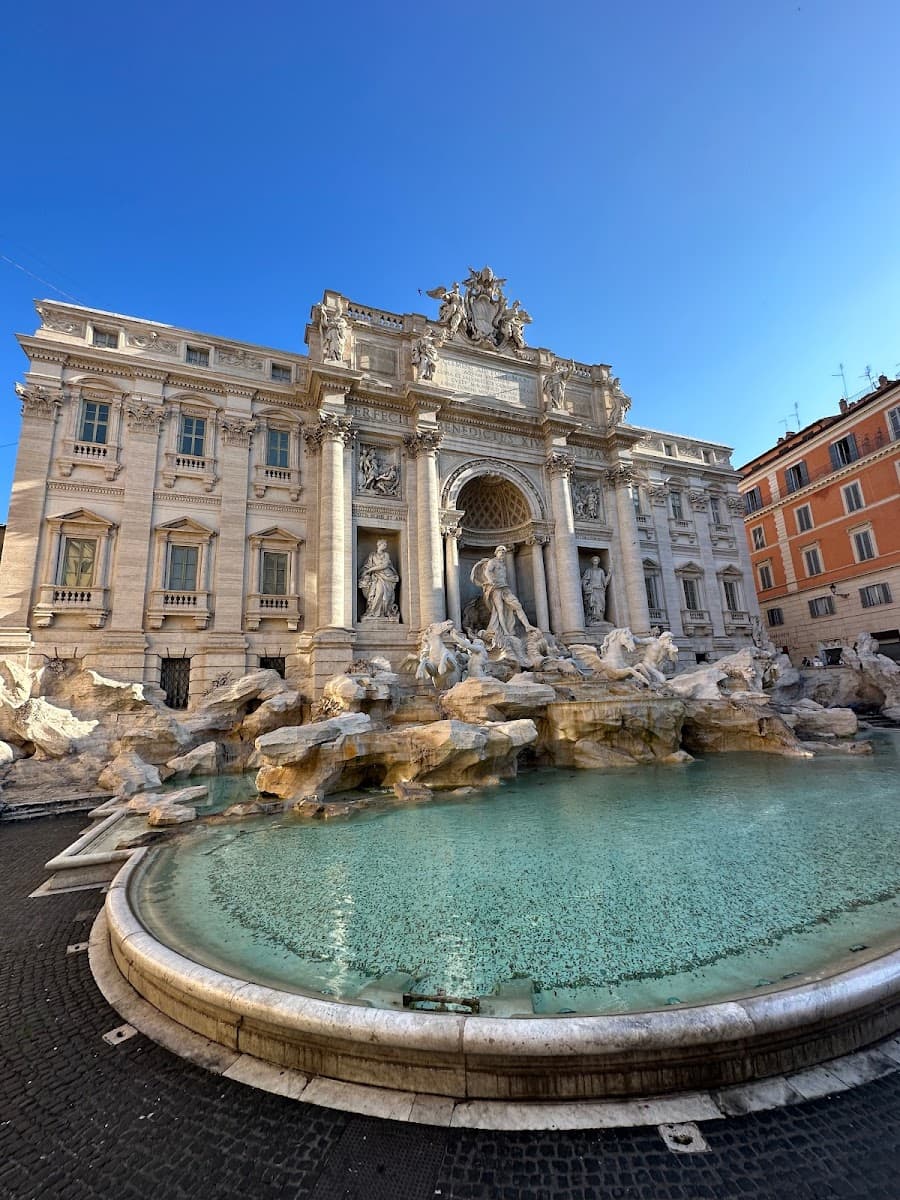
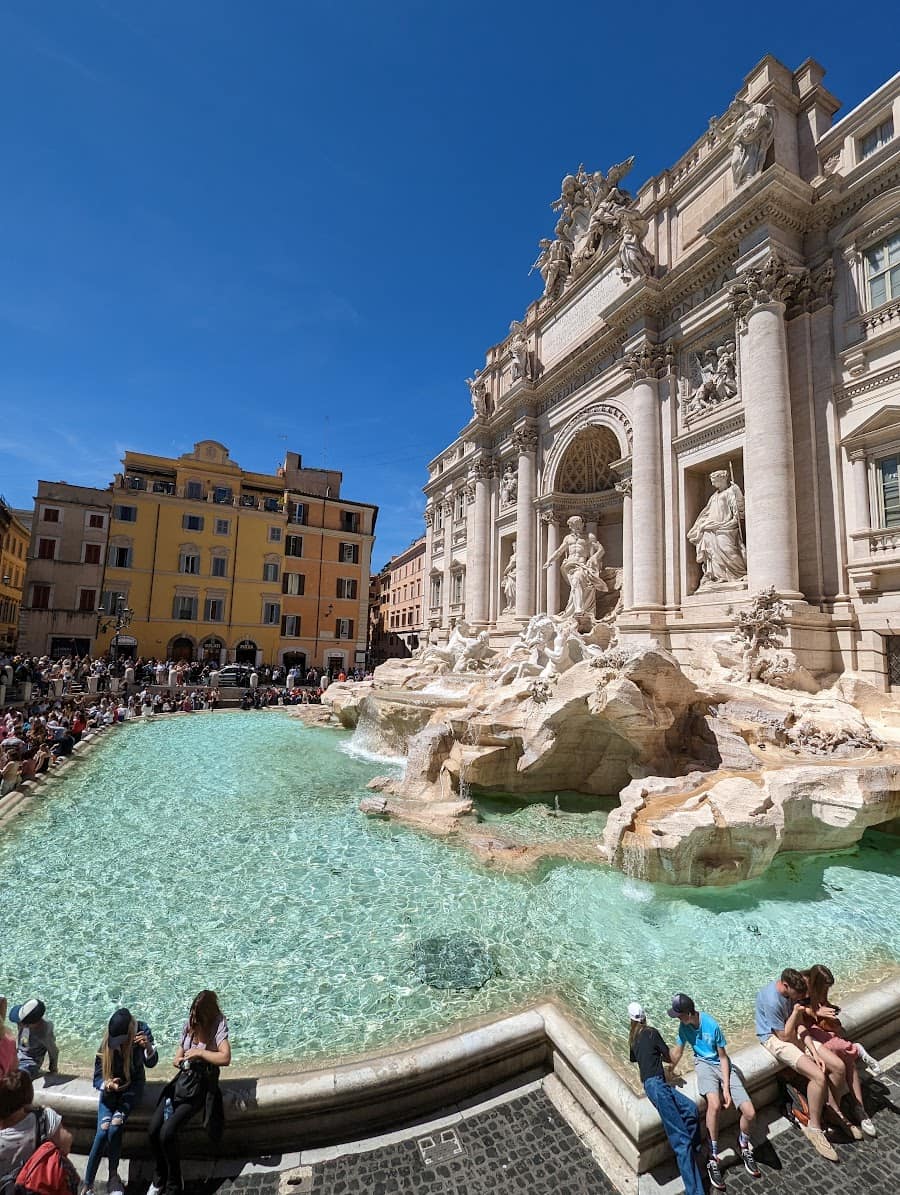
Cultural Heritage: The area includes hidden gems like the ancient Pantheon and Piazza Navona, perfect for experiencing Rome’s living history.
Local Knowledge: Visit the Trevi Fountain before 8 AM or after 11 PM to avoid the largest crowds and get the best photos.
⭐ Best tour
- Best of Rome Walking Tour including Trevi Fountain – Discover the highlights of Rome on this Best of Rome Walking Tour, including iconic landmarks such as the Trevi Fountain, Piazza Navona, and the Pantheon. With an expert guide, you’ll learn about the history and significance of these world-famous sites.
❓ FAQ
What are the must-see attractions in Vatican City, the world’s smallest country?
The essential Vatican must-see sights include Saint Peter’s Basilica with its magnificent dome, the Vatican Museums housing the Raphael Rooms and priceless art collections, and the awe-inspiring Sistine Chapel with Michelangelo’s frescoes. The Piazza San Pietro with Bernini’s iconic colonnade is also unmissable, while the Vatican Grottoes beneath the basilica offer a glimpse into papal history.
How can visitors best experience the Vatican Museums?
Book a tour of the Vatican Museums to explore its 54 galleries spanning 9 miles of masterpieces. Highlights include the Gallery of Maps, the School of Athens in the Raphael Rooms, and the Collection of Modern Religious Art. For the best experience, purchase tickets to the Vatican Museums in advance and consider visiting during early morning hours to avoid crowds.
What are the dress code requirements for Vatican attractions?
The Vatican enforces a strict dress code for entering St. Peter’s Basilica and the Vatican Museums. Shoulders and knees must be covered, and revealing clothing is not permitted. Research in advance and dress appropriately to avoid being denied entry to these sacred sites.
What unique experiences are available at St. Peter’s Basilica?
Visitors can climb St. Peter’s dome for panoramic views of Rome, explore the Vatican Necropolis (also known as the Scavi tour) to see ancient burial sites, and view masterpieces like Michelangelo’s Pietà. The papal apartments and apostolic palace offer glimpses into the living quarters of the Pope.
When is the best time to trip to the Vatican City?
The Vatican Museums are open Monday through Saturday, with extended hours on Fridays. Saint Peter’s Basilica opens at 7 AM, making early morning visits ideal. For those interested in attending the papal audience, visit on Wednesday mornings when Pope Francis is in Rome. Book VIP Vatican tours or Rome highlights tours for special access to key attractions.
